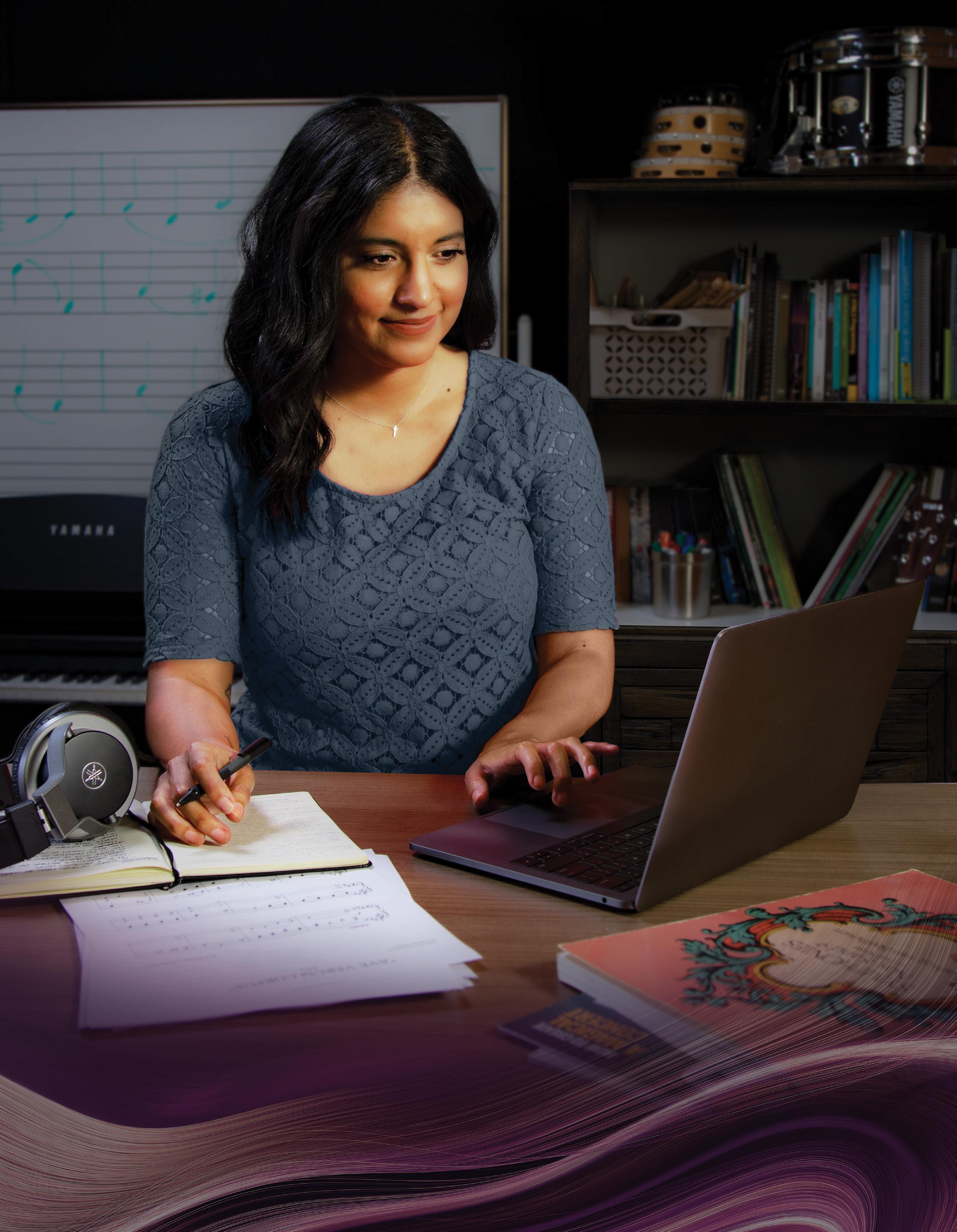

The Official Publication of the Ohio Music Education Association October/November 2022 Vol. XC, No. 1









CELEBRATING 75 YEARS! • Band & Orchestra Rentals Fast & affordable | Rent in store or online Director approved items | Free school delivery* • Expert Woodwind, Brass, Percussion & String Repairs Highly skilled technicians | Ultrasonic cleaning Master luthier | Student line to professional • New/Used Instrument Sales Step Up & Professional payment plans • Band & Orchestra Supplies School specific shopping in store or online Free school delivery* • Sheet Music, Methods & Folios Band, Orchestra, Choral, Jazz | New issue Extensive selection • Shoes, Gloves, Guard & More! Discount pricing | Easy ordering Defiance • Lima • Toledo Westlake • Brunswick • Dublin 1-800-52-MUSIC rettigmusic.com SHOP & RENT ONLINE FREE SCHOOL DELIVERY! *Service area only.






















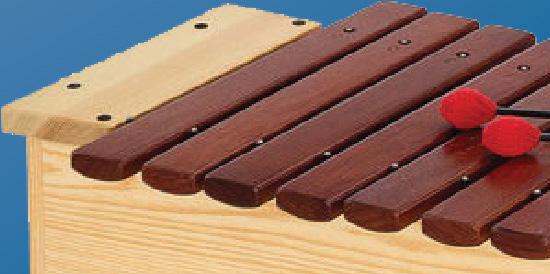

















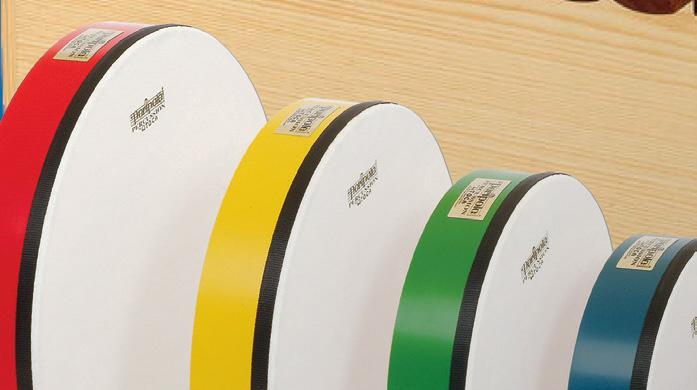



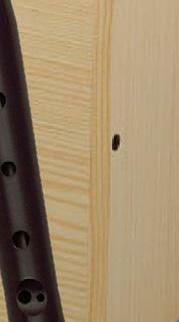




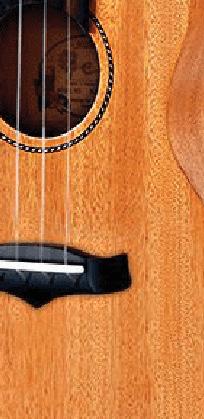





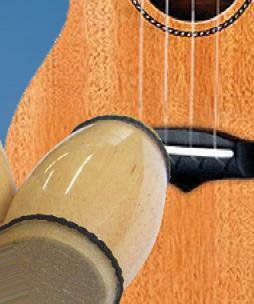




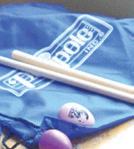
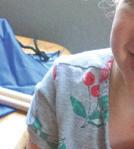



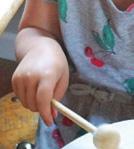









































800.443.3592 PERIPOLE.COM PARTNERS IN MUSIC EDUCATION® EDUCATOR DISCOUNTS AVAILABLE Exclusive Direct Distributors: PERCUSSION Or Instruments Halo® Recorders
The Official
OMEA OFFICE
P.O. BOX 1357 Medina, OH 44258 www.omea-ohio.org
JAY WARDESKA
Executive Director executive_director@omea-ohio.org
WILLIAM WITTMAN
Director of Business & Trade Show Operations business_director@omea-ohio.org
AMY ANNICO
Director of Media & Publications media_director@omea-ohio.org
GREGORY TAYLOR
Director of Technology technology_director@omea-ohio.org
MARK HENSLER

Director of Professional Development & Conference Management pd_director@omea-ohio.org
WILLIAM THOMAS
Director of Adjudications adjudications_director@omea-ohio.org
DANE NEWLOVE
Director of Adjudicated Event Materials and Awards ae_materials_director@omea-ohio.org
NICHOLAS TURON
Assistant Technology Director technology_assistant@omea-ohio.org
Music Education Association
No. 1
Editor: Shawn Reynolds
editor_of_triad@omea-ohio.org
Design/Production: Amy Annico
Director of Media and Publications media_director@omea-ohio.org
Advertising: Bill Wittman
Director of Business & Trade Show Operations business_director@omea-ohio.org
OMEA TRUSTEES
DANIEL RUCKMAN President president@omea-ohio.org
BRIAN STEVENS President-Elect president_elect@omea-ohio.org
ANN USHER
Immediate Past-President past_president@omea-ohio.org
JODI SMITH Secretary secretary@omea-ohio.org
SHAWN REYNOLDS
Editor of TRIAD editor_of_triad@omea-ohio.org
BRANDON DUVALL Treasurer treasurer@omea-ohio.org
OCMEA OFFICERS
ALYSE HANCOCK-PHILLIPS
OCMEA President ocmea_president@omea-ohio.org
MEREDITH BISCHOFF
OCMEA President-Elect ocmea_president_elect@omea-ohio.org
COURTNEY COX OCMEA Secretary ocmea_secretary@omea-ohio.org
TATE STEWART
Membership Chair
BETHANY HASKELL Communications Director
OMEA is an Affiliate of NAfME National Association for Music Education www.nafme.org
ALLIED ORGANIZATIONS
Ohio Alliance for Arts Education www.oaae.net Ohio Arts Council www.oac.state.oh.us Ohio Choral Directors Association www.ohiocda.org Ohio String Teachers Association www.ohiostringteachers.org Jazz Education Connection of Ohio www.jecohio.org
2 TRIAD
Publication of the Ohio
Volume XC,
TABLE OF CONTENTS
THE DESK OF...
FROM THE EXECUTIVE DIRECTOR - JAY WARDESKA

FROM THE PRESIDENT - DAN RUCKMAN
FEATURE ARTICLES
TRIAD, the Official Publication of the Ohio Music Education Association, is written for music educators, college students preparing for a career in music education, and others who are interested in music education in both general and specialized areas. TRIAD is now a digital publication that can be found online at www.omea-ohio.org three times a year - with Oct/ Nov, Dec/Jan, and April/May issues. All news releases should be sent to the editor. All news releases received by the editor will be considered on the basis of news, value, and timeliness to the music education profession in the state of Ohio. All advertising space and business inquiries should be directed to the OMEA Director of Business. An Insertion Order or a Space Reservation Form must be submitted for ads to be printed. TRIAD reserves the right to reject any advertisement. The statements of article authors and/or advertisers are not necessarily those of the magazine or association, and the right to refuse any article/advertisement is reserved. OMEA is not responsible for the URL linking in this publication in terms of destinations or operation. All links are tested in advance for validity to intended sources, but potential distortions may occur beyond the control of OMEA and/or the URL link source. OhioMEA Online Publication Policy on Post-Publication Changes - The Ohio Music Education Association places the highest importance in the integrity of our publications posted online. We realize that despite the competent efforts of the editor, authors, contributors, advertisers, and OMEA staff, posted content may have errors or desired alterations identified after the proofing process is completed. Once a publication is posted online, it will be considered as ‘final’ and no further changes, updates, or corrections will be made. The electronic archiving of our publications for official record is taken seriously and all online publications should be considered equitable to print venues, without alterable possibilities once posted for public viewing.
OCTOBER/NOVEMBER 2022 3 FROM
5
8
20 THE OTHER PROFESSIONAL WIND SYMPHONY…. RIGHT HERE IN OHIO!…. THE PACKARD BAND SHAWN REYNOLDS, TRIAD EDITOR, WITH THE ASSISTANCE OF THOMAS A. GROTH 32 MODERN BAND: GETTING STARTED MARTINA VASIL & DAVID DOCKAN 38 OTES FALL - PART 1 OF 3 DR. RACHAEL FLEISCHAKER 44 STARTING STUDENTS WITH NATURAL BREATHING LAUREN RUDZINSKAS, DMA 48 THE POPULARITY OF THE UKULELE LISA HEINRICH 50 TIPS FOR TEACHING BEGINNING WOODWINDS JODI SMITH, NANCY MOORE, SHAWN REYNOLDS 56 UNCHARTED WATERS: FINDING YOUR ORCHESTRA SEA LEGS DR. LISA MARTIN 60 WHAT HAVE WE LEARNED FROM E-LEARNING? (AND WHERE DO WE GO FROM HERE?) MICHELLE LEASOR SUPPORT 12 CORPORATE/INSTITUTION PARTNERS 19 OHIO FOUNDATION FOR MUSIC EDUCATION SUPPORT FORM REPORTS & UPDATES 62 OCDA - DOUG O’NEAL 65 TI:ME - LESLEY SCHULTZ 67 HIGHER EDUCATION 2023 OMEA PROFESSIONAL DEVELOPMENT CONFERENCE SECTION 74 WELCOME LETTER 75 PDC COMMITTEE 76 HOUSING FORM 77 PRE-REGISTRATION FORM 78 PERFORMING ENSEMBLES 79 CLINICIANS BY AREA 80 OMEA RESEARCH COMMITTEE CALLS FOR PROPOSALS





SOLICH PIANO AuthorizedYAMAHAPianoDealer forOHandWesternPA www.SolichMusic .com High quality Upright Pianos Concer t and Baby Grand Pianos Clavinova Digital Pianos Yamaha Hybrid, TransAcoustic & Silent Pianos Yamaha Disklavier Reproducing Pianos Outreach@SolichMusic.com SOLICHPIANOCLEVELAND 216 831 1044 • Beachwood, OH 244122 7730 Chagrin Boulevard SOLICHPIANOPITTSBURGH 1686 Route 228, Suite 107 • Cranberr y Twp, PA 16066 724 506 6370 4194 Easton Gateway Dr • Columbus, OH 43219 SOLICHPIANOCOLUMBUS 614 888 3441 New and used pianos. Special savings for educators and institutions!
FROM THE EXECUTIVE DIRECTOR JAY WARDESKA
While the music education profession faces many challenges from the post-COVID recovery to the teacher shortage, countless opportunities also lie in front of us. Opportunities include examining and expanding teaching strategies, program structures, available opportunities for students, and educational philosophies.
The OMEA Constitution states that the organiza tion will “endeavor to establish throughout the state a broad, diversified program of activity for the advancement of music education.” The authors spe cifically articulate: advocacy for comprehensive general music, instrumental, and choral music edu cation programs; state and national music standards with assessments that ensure that students meet high academic expectations; licensed teachers; adequate instructional time; and appropriate facilities and materials for music programs. OMEA’s mission is far broader than adjudicated events and the profes sional development conference. As an association, our future development must focus on these areas of advancement in music education. As members of OMEA, we all must embrace this responsibility.

AN OVERVIEW OF THE GOVERNANCE STRUCTURE OF OMEA
The legislative authority of OMEA is vested in the membership through the state board. The state board consists of the Board of Trustees, five region
chairs, seventeen district presidents, and the OCMEA President. Non-voting board members include the remaining district and region officers, appointed standing chair/committee chairs, and representatives of the allied organizations. An advisory panel may include representatives of organizations such as the Ohio Alliance for Arts Education (OAAE), the Buck eye Association of School Administrators (BASA), the Ohio Choral Directors Association (OCDA), the Ohio String Teachers Association (OSTA), and Jazz Connection of Ohio (JECO), to name a few.
The current Board of Trustee members are Presi dent Daniel Ruckman, President-Elect Brian Stevens, Immediate Past-President Ann Usher, Treasurer Bran don DuVall, Secretary Jodi Smith, and Editor of TRIAD Shawn Reynolds. The executive director serves on the board of trustees as an ex oficio non-voting member. Each officer is elected for a period of two-years with the exception of the presi dential offices which are elected for a six-year term with two years each in the roles of President-elect, President, and Immediate Past-President. This for mula promotes continuity in leadership and provides an opportunity for apprenticeship and mentorship for the Presidency.
OMEA membership is divided by population and geography into seventeen districts and five regions. Each district is represented by a president, and the election cycle follows the same six-year term as that
OCTOBER/NOVEMBER 2022 5
of the state president. With a goal of stability, district elections are held with eight districts in odd num bered years and seven in even numbered years. This limits turnover and provides consistency on the state board. The members of each district and region elect their representatives to the state board in addition to electing the state officers.
Currently there are 29 committee chairs who are appointed every two-years by a new president. By way of example, committee chairs oversee the Adju dicated Events Committee, General Music Commit tee, Mentorship Committee, and Diversity Equity Inclusion and Access Committee.
OMEA is a federated affiliate of the National Association for Music Education. Ohio is currently the third largest affiliated music education associa tion. Two-thirds of OMEA member dues fund the national association, and the remaining dues are sent back to Ohio to support state, district, and region activities.
INTRODUCING THE OMEA STAFF
In addition to the executive director, OMEA cur rently employees seven staff members with varying levels of responsibility and workloads. All staff members have experience grounded in Ohio music teaching and have been longtime members of OMEA. Their passion for music education and relentless pursuit of excellence for Ohio’s music teaching community is unparalleled. They are listed below in alphabetical order:
Amy Annico – Director of Media and Publications
Mark Hensler, Jr. – Director of Professional Development and Conference Management
Dane Newlove – Director of OMEA Awards and Materials
Greg Taylor – Director of Technology
William Thomas – Director of Adjudications
Nicholas Turon – Assistant Technology Director
William Wittman – Director of Business and Trade Show Operations
There will be more introduction and information about each of these individuals in the coming months, but if the opportunity arises, I hope mem bers will take the time to thank them for their exem plary service to OMEA. Contact information is available on the OMEA website.
Nick Turon is the newest addition to the OMEA staff. He is currently responsible for overseeing the development of a new website/platform that will begin serving the membership in 2023. He will take over technology duties upon Greg Taylor’s retire ment in June of 2023.
Roger Hall is graciously continuing to serve in the role of “Executive Director Emeritus” serving as an advisor and mentor to the new executive director. We will celebrate the contributions and upcoming retirements of Roger and Greg at the 2023 Profes sional Development Conference. We hope that our membership will be in attendance to help us cele brate these two individuals and their many years of selfless service to OMEA.
STRIVING FOR ORGANIZATIONAL CONSONANCE IN A WORLD OF DISSONANCE
At times it is as though each of us has donned the “Sorting Hat” from the Harry Potter lexicon. We sort our profession into houses of “choir, band, orchestra, jazz, general music,” or “competitive” and “non-com petitive.” Other “houses” might include grade level, school size, demographic, or socio-economic status. I think that it is important that we take a moment and reflect on the fact that we all teach music and simply approach our goal of teaching the next generation a love of music through different means.
As a profession we face challenges such as the teacher shortage, the politicization of curriculum, the current economy, and the continuing need to defend music’s curricular relevance. We have faced many challenges throughout our history. We have overcome them by meeting them together. I would like to challenge each of us that the next time some one asks about our profession, we answer with pride, “I am a music teacher.”
I look forward to working with each of you as we face daily challenges and work toward strength
6 TRIAD
and expanding the opportunities available in music education for Ohio’s students.
Jay Wardeska became the Executive Director of OMEA on June 1, 2022. He is currently completing his second year serving as a graduate teaching associate in music education at The Ohio State University where he is pursuing a Ph.D. in Music Education. He has served OMEA in a variety of leadership roles including District President, All-State Ensembles Chair, AllState Task Force Chair, and Adjudicated Events Committee Chair. He is an active solo and ensemble, large group, and marching band adjudicator. He holds a Bachelor of Music Education from the University of Mount Union and a Master of Music in Instrumental
Conducting from Kent State University. Jay taught middle school and high school in the State of Ohio for 30 years. He has been the recipient of many honors and appointments, including being named the 2013 National Band Director of the Year by the National Association for Music Education (NAfME) and the U.S. Army Band. Additional awards and appointments include selection to the NAfME U.S. Army All-American Band Directors Academy, Grammy Quarterfinalist for the Music Educator of the Year, the Medina County Arts Council’s Service to the Arts Award, National Band Association Citation of Excellence, and the National Excellence in Teaching Award. He is a Martha Holding Jennings Foundation Jennings Scholar and an Ohio Department of Education Master Teacher.
OMEA Contributions to Music Education
BRIAN D. MEYERS, EDITOR
(CONTRIBUTIONS@OMEA-OHIO.ORG)
you know that Contributions to Music Education, the research journal of OMEA, is celebrating its 50th year of publication? Since 1972, hundreds of music teacher researchers have presented their work to the wider national and international profession, and is available in print and electronic format in nearly all 50-states, and more than 100-countries abroad. With more than 400 articles in 47 volumes, CME can help you be a better music teacher. Topics over the years have centered on improving the musical experience for students and teachers.
Urban and suburban music programs
Teacher professional identities
in music classrooms
Band, choral,
ways
is your opportunity to support OMEA and CME by becoming a subscriber to this important publication. Consider joining today, and for a minimal contribution, you can add to your library of resources to increase your own expertise. Subscriptions are now available in print and electronic format. NEW FOR OMEA MEMBERS: electronic access for only $10 a year! For further information and subscription details, please visit our comprehensive website: www.contributions.omea-ohio.org. We look forward to hearing from you!
ening
•
•
• Listening
•
orchestra, general music • Sight-singing attitudes and influences • Early childhood music education • Programming choices and policies • Historical traditions and methods • Best practices in band rooms • Beginning musical instruction • Instrumental and choral programs • Intrinsic and extrinsic motivation • Issues of social justice in schools • Current music technology practices • Innovative
to teach music • And many, many more Did
Now
OCTOBER/NOVEMBER 2022 7
FROM THE OMEA PRESIDENT DANIEL RUCKMAN
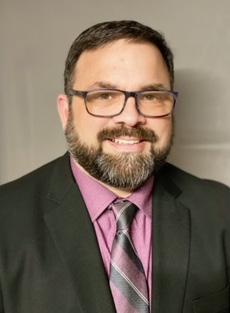
Welcome to the Fall 2022 Triad and welcome to a new school year! I am humbled and excited to begin my first term as OMEA President. I look for ward to serving our membership in this position and consider myself fortunate to work alongside the best educators in the state of Ohio! Thank you for the vital role you play by enriching the lives of so many students in a creative, safe and nurturing environ ment. Your influence is felt daily throughout the buildings and communities in which you live and teach.
As I was driving to the first day of school, my mind was racing with all the typical first day thoughts, consumed with so many what-ifs and first day butterflies. My commute to school takes me past Grand Lake St. Marys. As I turned the corner I was greeted by a beautiful sunrise and decided to pull to a little parking area and enjoy the view for a moment. For the rest of the drive, I kept reflecting to the view over the water, and the peace it brought me. Later that evening I had marching band practice. I was once again greeted with a beautiful view. This time it was a view of a gorgeous sunset from the marching band tower. My marching band is used to me taking a second to pause (and take photos) during these sunsets. What struck me the most this time as I thought about both of these visually spec tacular events that day is that they always occur during a time of transition. It is a great reminder to
all of us that whether it’s a new school year, a new position, retirement, OMEA office, etc., your transi tion will offer you some beautiful moments as well.
This will be an exciting year for OMEA. We wel come Jay Wardeska as our new Executive Director. Jay’s knowledge and experience in OMEA makes him the perfect fit for this position. We are fortunate to be in such great hands! Roger Hall will continue to work this year as past-executive director. Thank you to Roger for continuing to serve OMEA during this transition. We are extremely grateful for your many years of service and stewardship and the strong foun dation we have today.
As OMEA members we will continue to benefit from those events which have added to our rich his tory. We can look forward to reconnecting to our col leagues at our outstanding Professional Development Conference in Columbus on February 2-4, 2023 filled with great clinics, performances, a large trade-show, as well as our premier All State Ensembles. We look forward to watching so many students participate in Adjudicated Events from the stadium to the concert stage. Our members will continue to plan and partici pate in district and regional honors events and profes sional development.
I look forward to working with the leadership of our state board. As the voice of the thousands of OMEA members, they will help guide OMEA as the organization continues to evolve. We have heard from
8 TRIAD
THE
Degrees Offered
Offered
a part of
music
OF MUSICAL ARTS AT
Undergraduates and graduates work side by side, and form lasting connections with their peers and faculty. By honoring traditions and embracing innovation, we prepare students for diverse musical lives and life-long career growth. The College is a major cultural resource for the campus and northwest Ohio.
We are excited to be able to offer a range of events accessible through our live stream page located in the EVENTS section of our
Spring 2023 Admission: audition by December

Fall 2023 Admission Audition Dates:
Saturday, January 21, 2023: in-person
Saturday, February 18: in-person
Friday, February 24: virtual Saturday, February 25: in-person (Music Scholarship deadline)
February 27 - March 1: DMA Auditions
Saturday, April 15: in-person Senior & Junior auditions
Visit us at bgsu.edu/discovermusic for information and registration.
Apply by January 18, 2023 for BGSU Academic Scholarships and financial aid consideration.
Audition by February 25, 2023 for talent-based music scholarship consideration.

COLLEGE
BGSU
2
musicadmissions@bgsu.edu (419) 372-8577 Become
our
community.
website: BGSU.edu/discovermusic
In: Jazz Studies Music Composition Music Education Music History and Literature Music Performance Musical Arts World Music Minors
In: Jazz Studies Music Music Industry Recording Technology
Welcome Back
School,
Music Education Starts Here.
To
Teachers! We Hope to See You All at This Year’s OMEA Conference! www.musiciselementary.com info@musiciselementary.com / www.facebook.com/MusicIsElementary / 1-800-888-7502 We wish all of our home state’s teachers a successful and safe 2022-2023 school year. Visit Our Website for the Latest Back To School Specials, New Products, and Info
you, and that feedback has been the catalyst for our evolution. Beginning this Fall you will begin to see those changes in many facets of our organization. In addition, the planning stage of the next OMEA Strate gic Plan will begin. During this process, there will be several opportunities to share your thoughts and feed back. The first is a “Presidential Listening Tour” that I, along with Past-President Ann Usher and Presi dent-elect Brian Stevens have begun. Our goal is to attend in-person events in every OMEA district. While we will share items currently being worked on by the OMEA Trustees, the goal is to hear from YOU! We look forward to seeing so many of our members! Several times throughout the year, we will ask you to participate in short surveys to help guide in this important process.
I hope you find that you will be enriched, inspired, and excited as we continue to expand and evolve many of the activities and events that make us who we are. Moving forward, we need to remind ourselves
that WE are OMEA. We are student-focused and member-driven. With an emphasis on mentorship and servant leadership, we can continue to be the standard bearer of what a music education association should be. There is a bright future for OMEA and I look for ward to working with all of you. Good luck, and may you have an outstanding start to your school year!
Dan Ruckman is currently in his twenty sixth year of teaching and serving his twentieth year as the Director of Bands at Coldwater Exempted Village Schools where he directs the 5-12 concert bands, marching and pep band, Cavalier Steel Bands, and music theory. He has served OMEA as a solo and ensemble adjudicator, Past-President of OMEA District 3, and State Secre tary. Dan is a member of the National Association for Music Education, Ohio Music Education Association, and Phi Beta Mu. Dan holds a bachelor of music edu cation degree and a master of music in education degree from Bowling Green State University.

OCTOBER/NOVEMBER 2022 11
CORPORATE/INSTITUTION PARTNERS
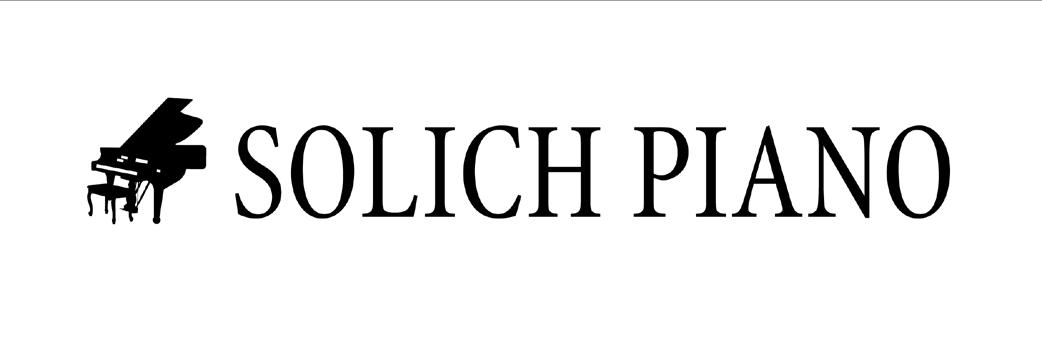
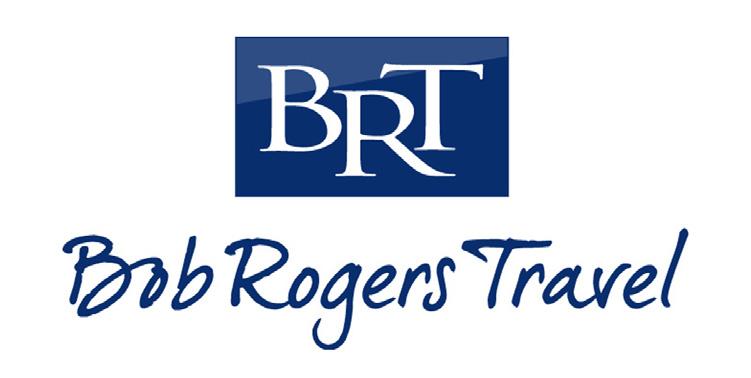
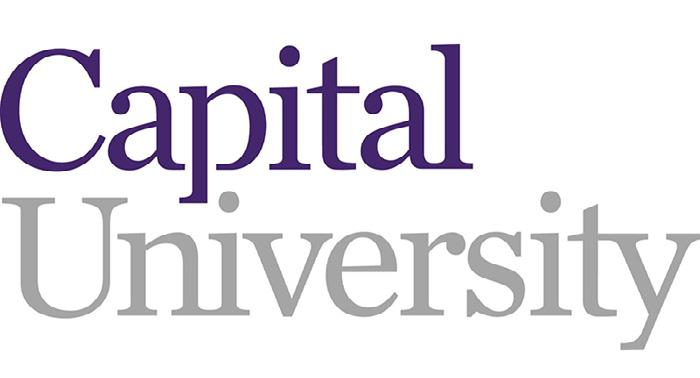
In these challenging times, the Ohio Music Education Association truly appreciates the support of the following organizations

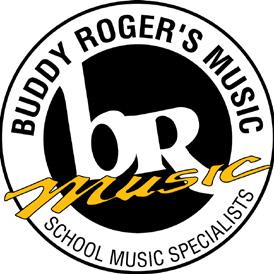


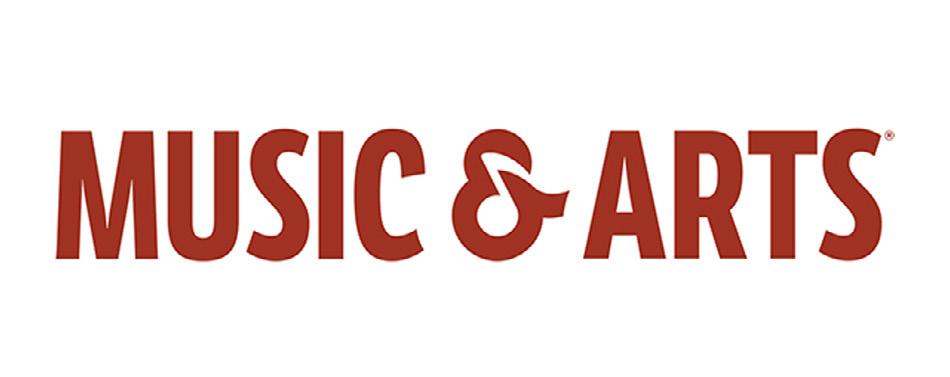
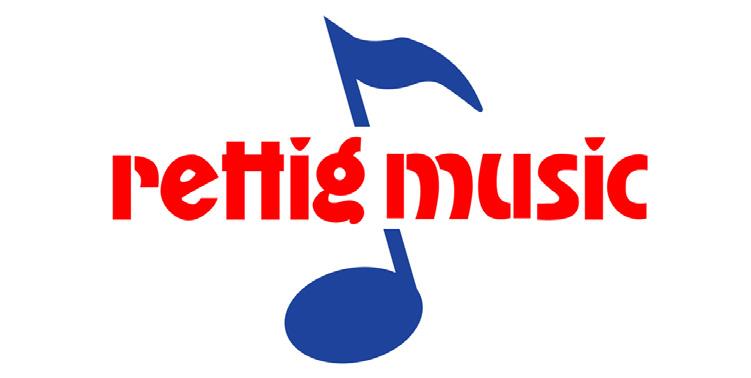
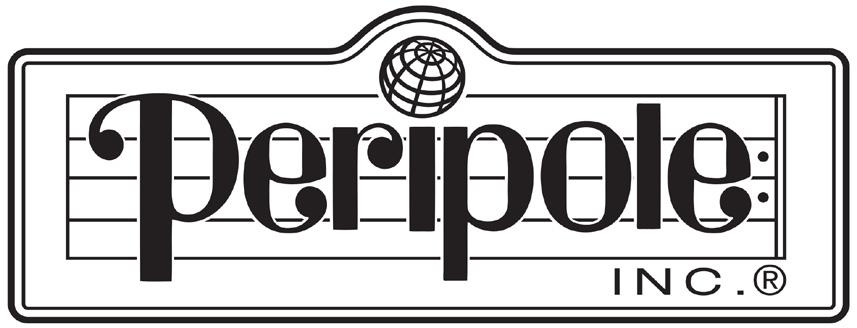
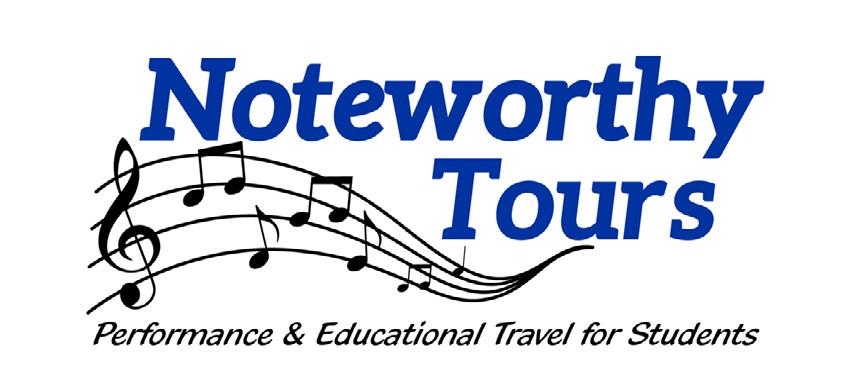


12 TRIAD



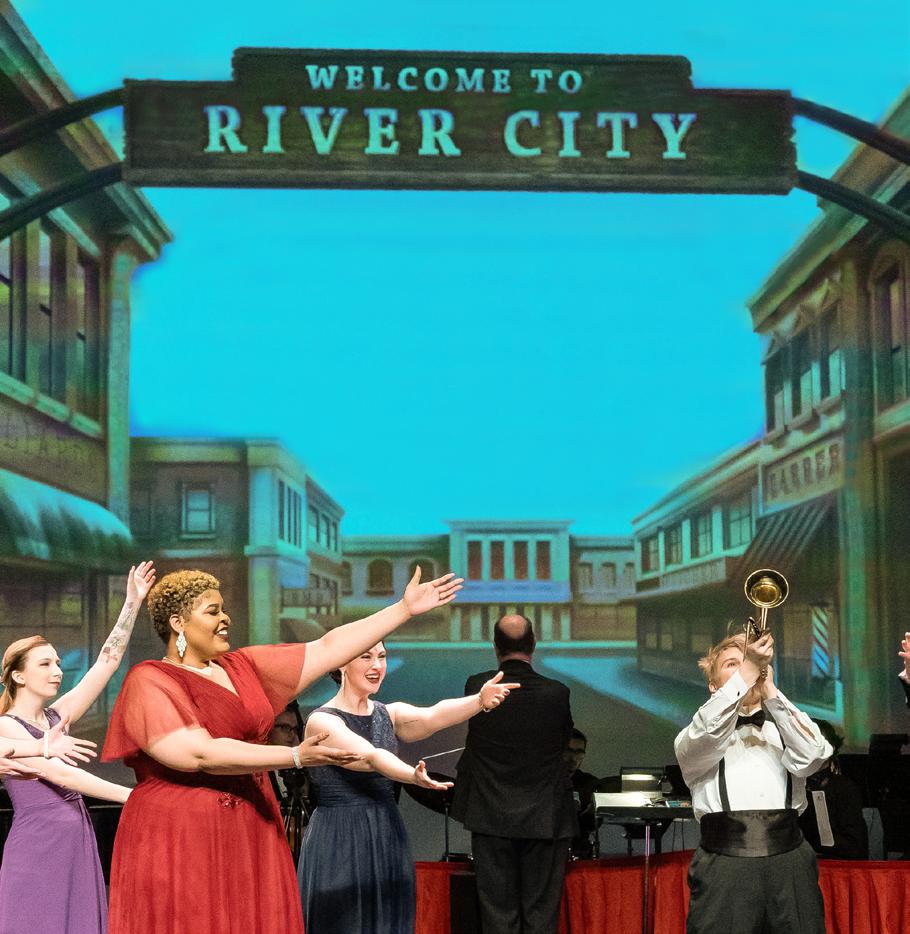

PARTNERS LEVEL III - PRESIDENT’S CLUB organizations who have become Corporate/Institution Partners in our efforts to support Music Education throughout Ohio. REGISTER ysu.edu/ccca BLISS HALL • 8:30AM - 4:00PM OCT. 19, 2022 330.941.3636 QUESTIONS? DANA SCHOOL OF MUSIC & UNIVERSITY THEATRE OPEN HOUSE The Dana School of Music & University Theatre welcome you to experience life as a music or theatre major, learn about our outstanding programs, meet our students, and work with our world-class faculty. OCTOBER/NOVEMBER 2022 13
CORPORATE/INSTITUTION PARTNERS
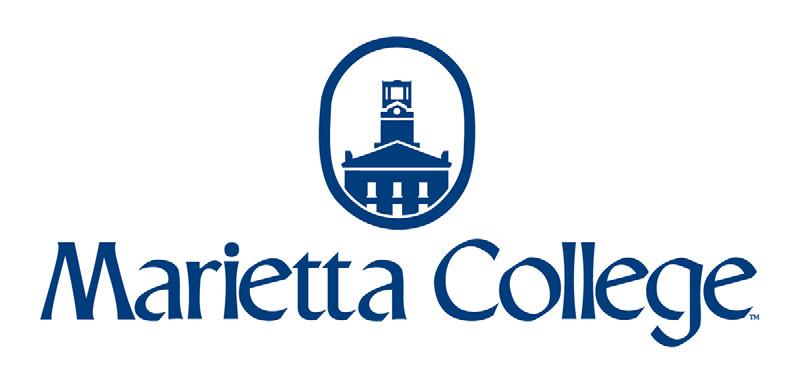
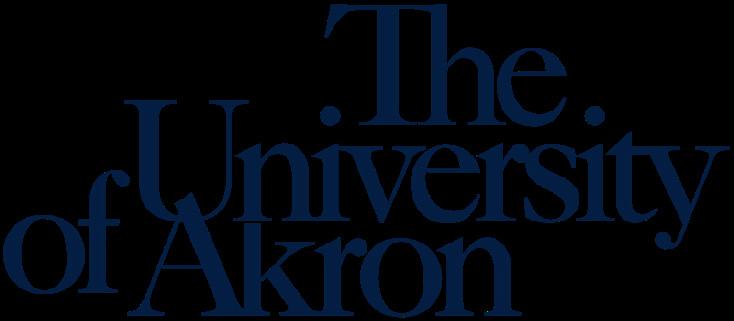

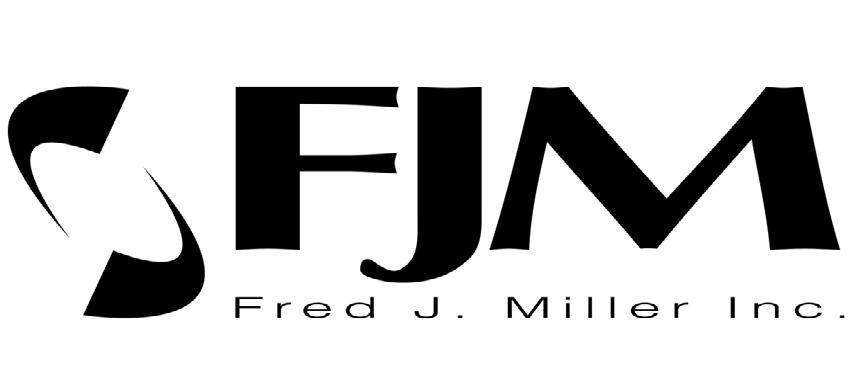
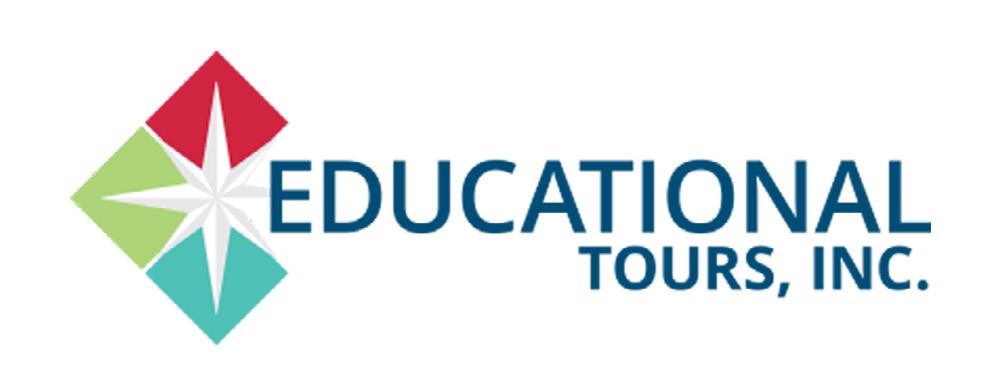
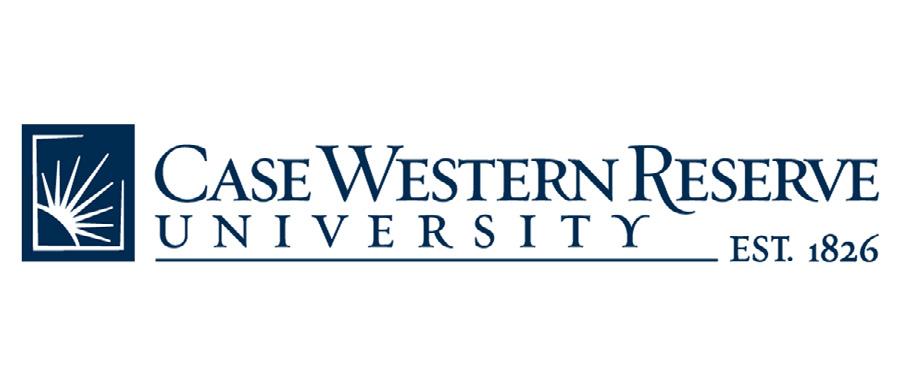
In these challenging times, the Ohio Music Education

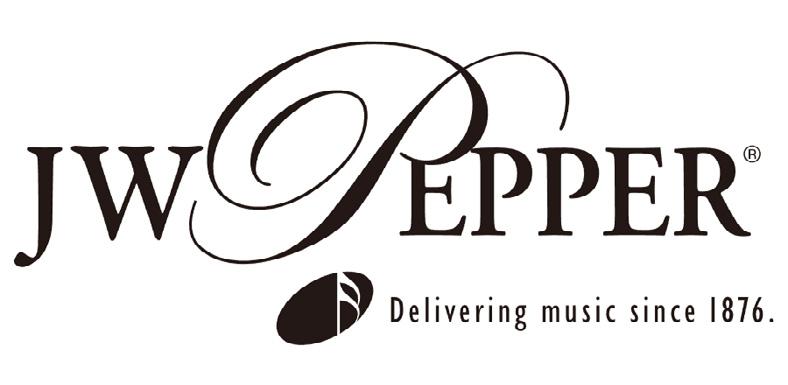

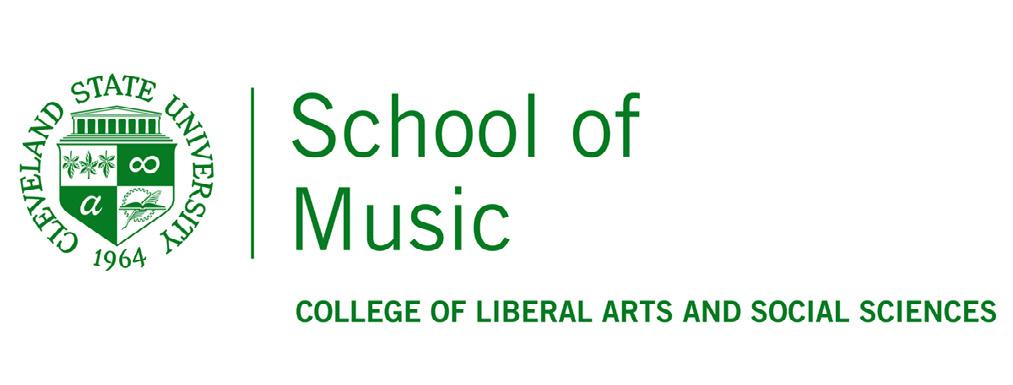
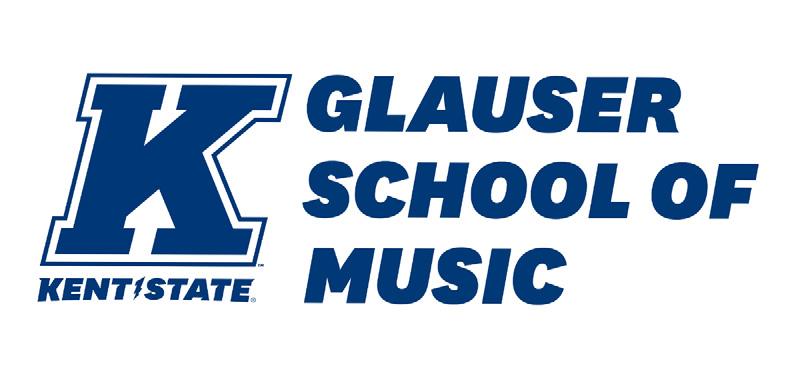
truly appreciates the support of the following

Association
organizations FERMATA, LLC 14 TRIAD
PARTNERS LEVEL II - CONDUCTOR’S CLUB

organizations who have become Corporate/Institution Partners in our efforts to support Music Education throughout Ohio.


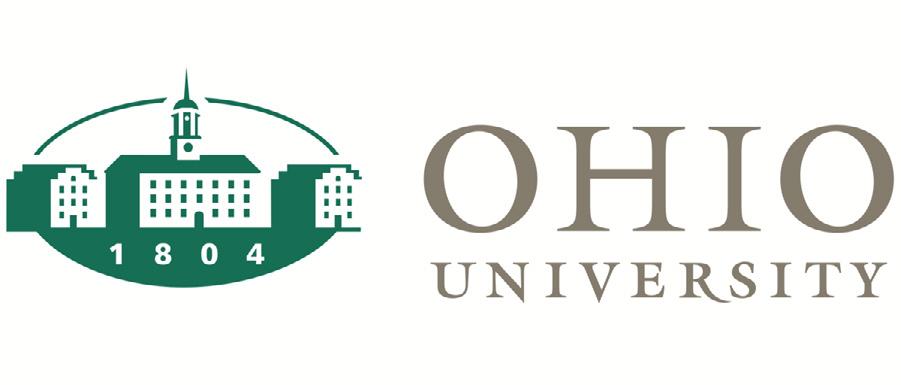


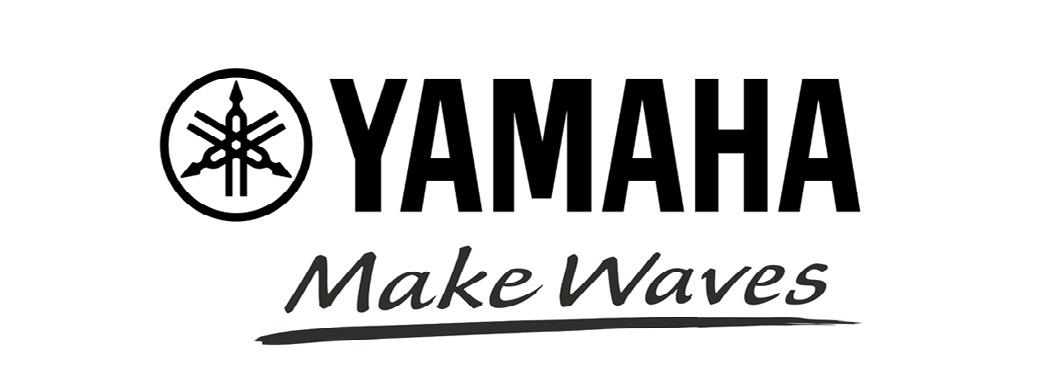

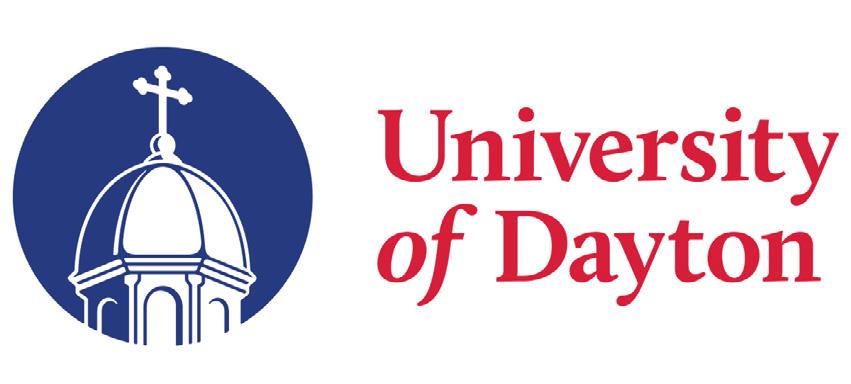
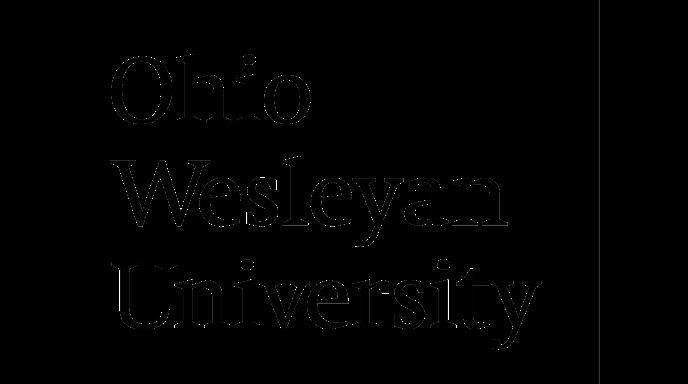

OCTOBER/NOVEMBER 2022 15
CORPORATE/INSTITUTION PARTNERS



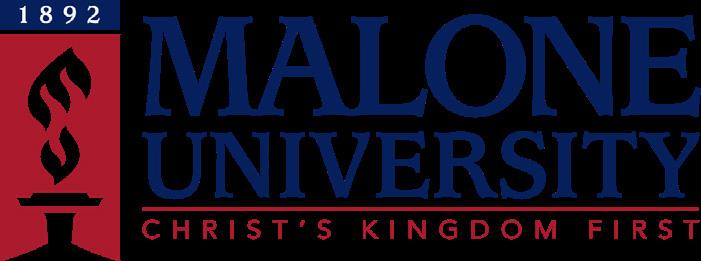

LEVEL I - MUSICIAN’S CLUB

In these challenging times, the Ohio Music Education Association truly appreciates the support of the following organizations who have become Corporate/Institution Partners in our efforts to support Music Education throughout Ohio.

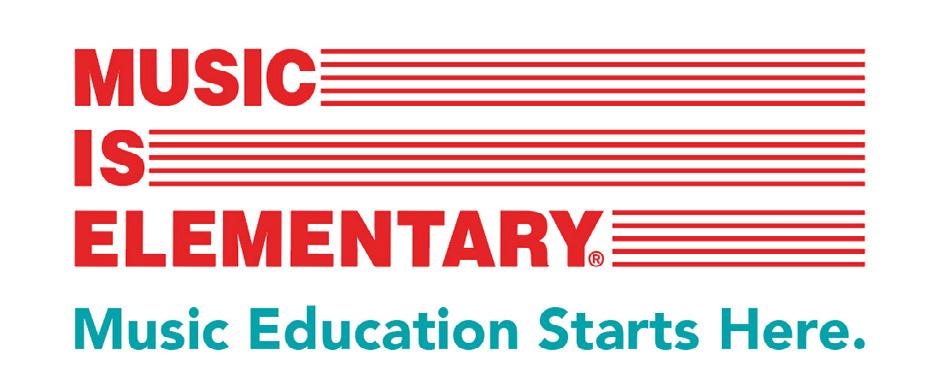
16 TRIAD
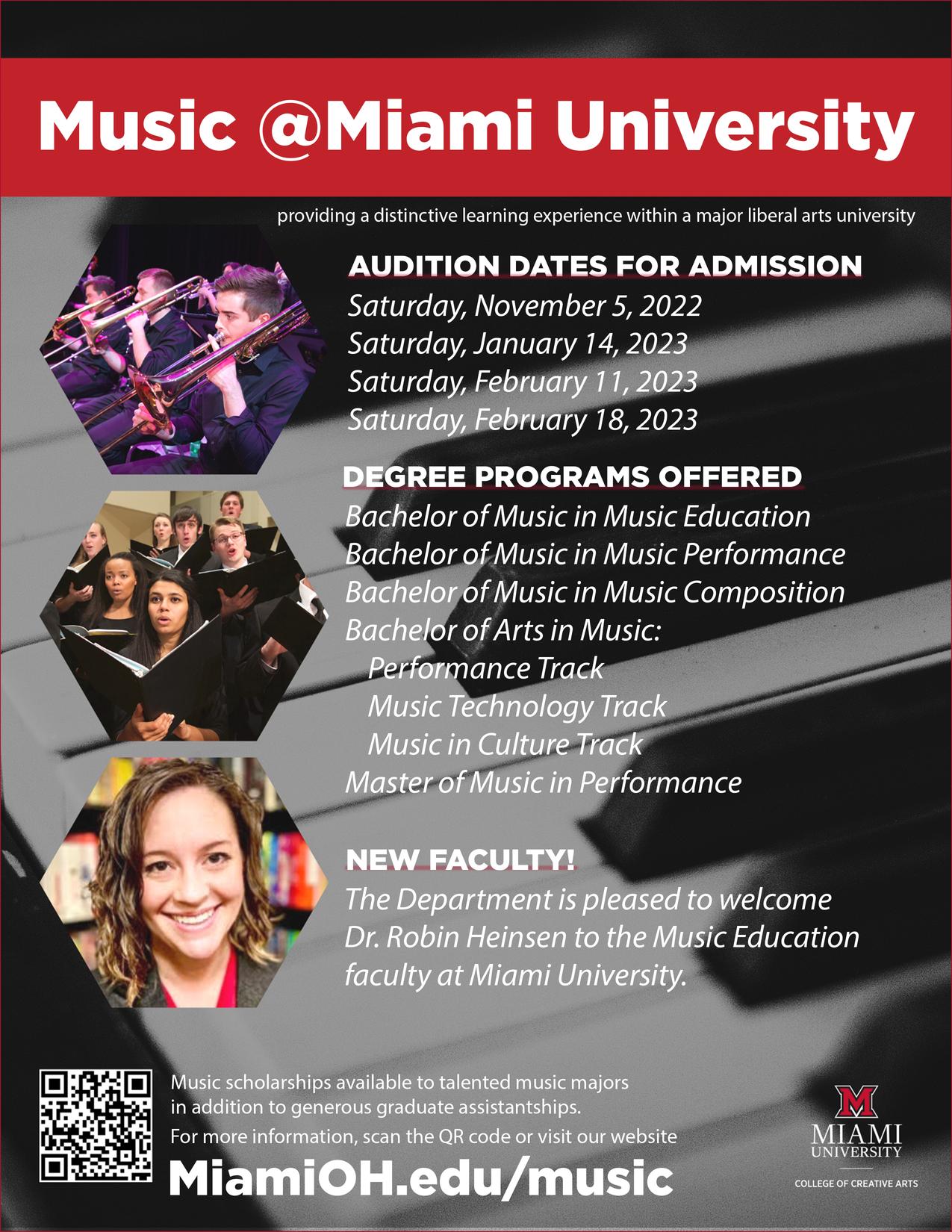
State and federal dollars through the Ohio Arts Council support artistic resources throughout the state.
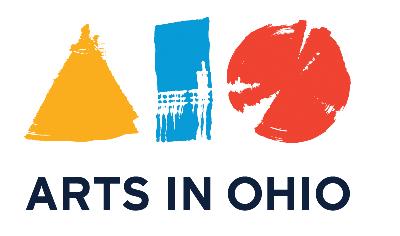


Support the Mission of the Ohio Music Education Association with a donation to the Ohio Foundation for Music Education.

Yes, I want to support music education in Ohio and insure that the benefits acquired by students experiencing music are available for them now and in the future. Please apply my gift as indicated.
Donor Information: (Please print legibly or type this form.)
Name: Street Address: City: State: Zip + 4 Email Address: Best Phone:
Member
Member
_____Friend of Music Education Donation Information: Donation Amount: $
Donation Category: _______ Foundation General Fund for Financial Growth
(Check area for donation)
OMEA Memorial Scholarship Fund _______ Charles H. Benner Leadership Academy _______ This is my Annual Campaign Contribution for calendar year 2022.
Recognition/Memorials: Please list how you wish to be recognized on our website and in our publications. (Example: John and Jane Smith) , or please do not list my/our names.
This gift is: In Recognition of: In Memory of:
Certificate or _____ Card of Donation Acknowledgment. Send to: Address City State Zip
Note: The Ohio Foundation for Music Education is a 501(c)(3) non-profit organization under the Internal Revenue Code. A donation acknowledgment letter will be provided for tax purposes. Checks made payable to: Ohio Foundation for Music Education
Send this completed form with check to: Ohio Foundation for Music Education Attn: Roger Hall, Executive Director 8227 Audubon St. NW Massillon, Ohio 44646
_____OMEA
_____OCMEA
_____Parent
_______
_____
OCTOBER/NOVEMBER 2022 19
The Other Professional Wind Symphony…. Right Here In Ohio!…. The Packard Band

Musicians spend years perfecting the art of playing their instruments or singing music at a high level in their college music degree. Upon graduation, some never touch their instruments in a wind ensem ble or concert band situation again due to the demands of the teaching profession, or simply the lack of high-level performance opportunities beyond the college campus. Many winds and percussionists find themselves not having an outlet to continually further their performance skills so that their teaching skills may also improve. This may lead to compla cency, not having a rewarding musical outlet as fam ily life and teaching life take over our time. That thrill of performing in a high-level ensemble that we worked hard to perfect during our degree disappears in our professional years.
In the Northeast corner of the state is a gem that provides many instrumental musicians with the opportunity to play in a professional wind ensemble while still going about their daily lives in their
everyday careers. Even better, these musicians are paid to play in this group! Many are current or returned music educators, but many have varied other careers both in and out of music. Most have at least one music degree, but many have two or three music degrees. Regardless, this is one of the few professional wind ensemble/concert bands where members are auditioned and paid to play in the ensemble. This amazing band is known as the W.D. Packard Band of Warren, Ohio. The home of the band, the W.D. Packard Music Hall, is nestled on the outskirts of Warren right in the middle of OMEA District 5.
This group of 52 professional instrumentalists in and around Northeast Ohio and Western Pennsylvania is a unique opportunity for these musicians, who spent years perfecting and being passionate about playing high level band literature, to provide monthly (and sometimes more!) high level musical perfor mances of various styles of music.

Shawn Reynolds, TRIAD Editor, with the assistance of Thomas A. Groth
20 TRIAD
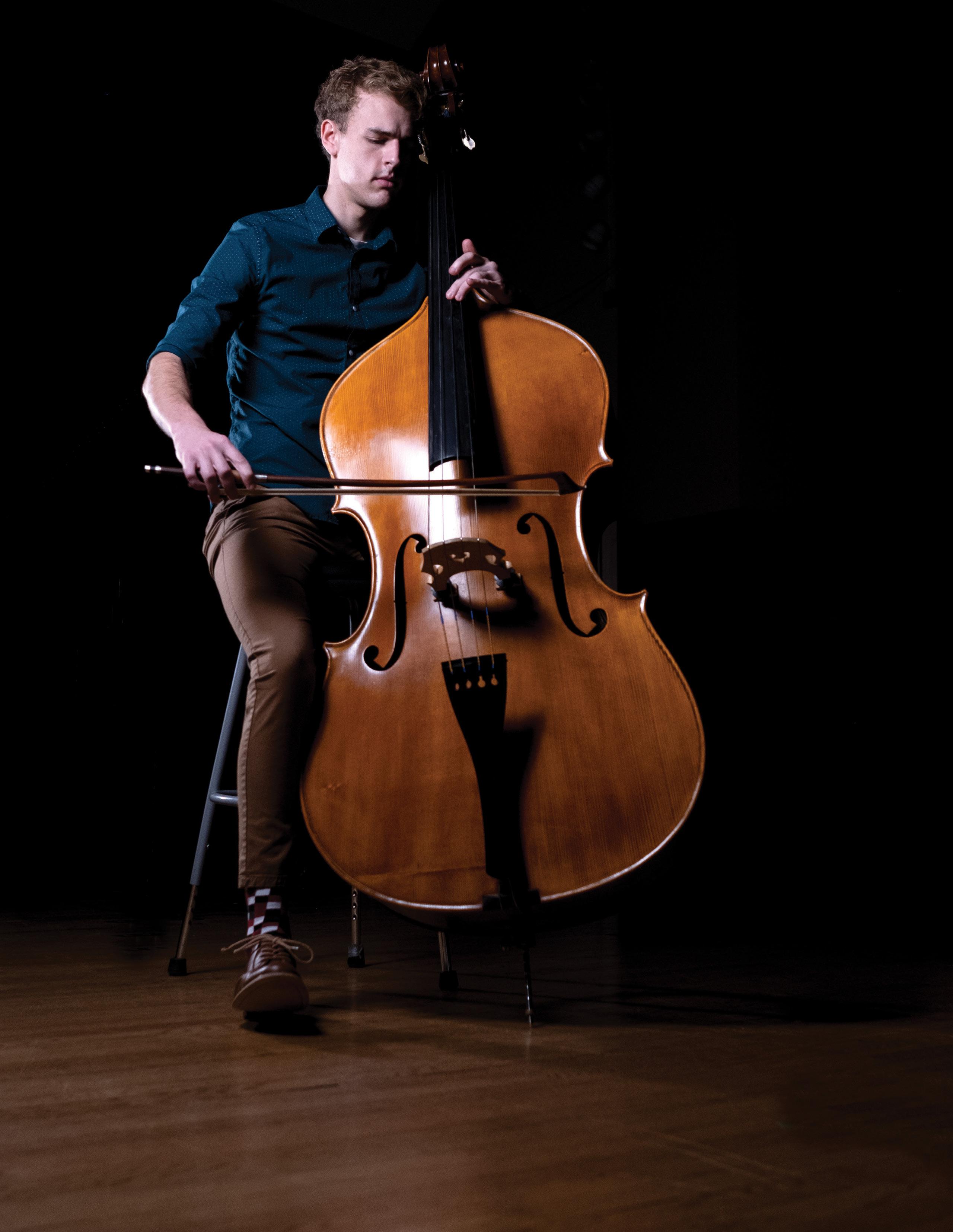
JACOB KAMINSKI ’22 Double Bass Performance major Student of Charles Carleton, The Cleveland Orchestra Student Assistant Conductor 2021 Lauria Concerto Competition winner Photo credit Kevin Ng ’21 Pursue your passions. bw.edu
PROGRAMS
School of Music

Zip to UA Music Day
Wednesday, Oct. 12, 2022
Guzzetta Hall, 157 University Ave.
The University of Akron School of Music
To register for Zip to UA Music Day, visit
Collage 2022
Thursday, Nov. 3, 7:30 p.m.
E.J. Thomas Hall, 198 Hill St.
Experience the best of UA’s School of Music in one exciting, non-stop event. Part of the School of Music’s Kulas Concert Series. Visit www.uakron.edu/music for details.
51st Annual Ohio Band Directors Conference
Saturday, Dec. 3, 2022
UA Student Union Ballroom
Medina High School Symphony Band, Hoover High School Symphonic Winds, OBDC Honor Bands, and UA’s Concert Band, Symphony Band and Wind Symphony. Guest composer Steven Bryant. Guest conductor Verena Mosenbichler-Bryant, Associate Professor of Practice at Duke University.
Deadline for OBDC Honor Band applications is Monday, October 17. For more information, visit www.uakron.edu/bands.

42nd Annual TubaChristmas
Saturday, Dec. 17, 2022
noon and 2:30 p.m.
E.J. Thomas Hall, 198 Hill St.
Scholarship Audition Days
• Monday, Feb. 20, 2023
Saturday, Feb. 25, 2023
Friday, March 3, 2023
Virtual auditions by appointment. Sign up online at www.uakron.edu/music.
For more information: 330-972-8301 music@uakron.edu www.uakron.edu/music
• Outstanding programs, ensembles, and facilities • Numerous performance opportunities • Master classes and residencies by acclaimed guest artists • Affordable tuition and generous scholarships • Internationally renowned faculty-musicians DEGREE
Bachelor of Music (B.M.) • Music Education • Theory/Composition • Performance • Jazz Studies • Accompanying Bachelor of Arts in Music (B.A. in Music) Bachelor of Arts in Music with Business Cognate Master of Music (M.M.)
Dr. Marc Reed, Director 330-972-7590 • music@uakron.edu www.uakron.edu/music The University of Akron is an Equal Education and Employment Institution www.uakron.edu/eeo ©2022 The University of Akron
Free, fun, and informative for high school students and parents. • Attend classes, lessons, and rehearsals • Learn about the application and audition process • Tour campus • Enjoy lunch at Rob’s Café • Meet the School of Music faculty and students
www.uakron.edu/music or email music@uakron.edu.
•
•
Photo Dale Dong
FRANK COSENZA, CO-PRINCIPAL TRUMPET & FORMER DIRECTOR OF BANDS AT WEST GEAUGA SCHOOLS:
“The experience of the Packard Band is the band itself. No other band funded through an endowment is in the area, to my knowledge. Since I joined the band, the level of musicianship has improved to a first-class orga nization. Very-Very fine musicians who are dedicated to take playing in the band seriously. There is also a cama raderie that goes along with band members. After a successful concert, there is a level of satisfaction by all for the elixir of music making. Thomas Groth is the man responsible for the improvement in the band and for the daily administration of the group. He has done a profes sional job! It is also quite nice to have a variety of con ductors grace our stage. Having Arnold Gabriel conduct the group was certainly a highlight for me!
Also, the fact that the band is a steady ‘gig’ is quite nice along with covering so many standard pieces of the concert band medium, in addition to new works written specifically for band.”
What is even more astonishing is that the band is funded fully by an endowment left by William Doud Packard in his will.
In his will, Packard designated that funds would be set aside in a trust to build a music hall and finance the establishment of a band to play in it for the “edification and entertainment of the people of Warren”. The city of Warren became beneficiary after Katherine Packard, W.D. Packard’s wife, died in 1940. Costs had increased from the 1920’s when the will was written and the $150,000 allocated for the hall was hardly adequate in the 1950’s to build the hall Packard had envisioned. 1.4 million was used from the trust to build the W.D. Pack ard Music Hall with the remainder of the income from the trust to be used to maintain the band.
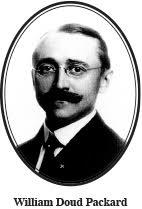
The city of Warren, very early in her history became a center for brass bands, band music and had in residence, several talented men in the field of music. From his boyhood home on Courthouse Square, young “Will” Packard was able to enjoy the varied sounds of music at the Opera House, the nearby Dana School of Music, and the outdoor concerts from the Park’s ornate central bandstand.
Today, the Packard Music Hall is the center of cultural and entertainment programs in the Warren area and averages over 200,000 in attendance each year. It is the site of a wide variety of events including ballet, children’s programming, theater, corporate meetings, high school graduations, dance recitals, dances, and of course, the free monthly Packard Band Concerts. The Hall has also been used annually by organizations such as the Warren Civic Music Associ ation, Trumbull Town Hall Lecture Series, The War ren Barbershoppers, The American Association of University Women, among others.
A BRIEF HISTORY OF W.D. PACKARD AND THE ENDOWMENT OF HIS BAND:
William Doud Packard was a man with a dream when it came to music. He loved marches, band music, military music and the musicians who per formed the music. He also loved the city of Warren. When he wrote his will in 1920, three years before his death, Packard made sure that a dream of keeping music alive in Warren would come true after he had passed on. Now, many years later, that dream has become an important part of the cultural and entertain ment life of the Warren area.
BECKY BICKEL, PRINCIPAL OBOIST OF THE BAND & RETIRED DIRECTOR OF BANDS IN THE MAPLEWOOD SCHOOLS:
“I think the one unique thing that the Packard Band brings to my musical experience is the support from all of the other members of the Packard Band. I really appreciate how every member is rooting for each other to perform well. We are like a family-a lot of us went to school together at YSU’s Dana School of Music. I also greatly appreciate Shawn Reynolds. It’s wonderful how I can talk to another oboist about reeds and life, at every concert.
OCTOBER/NOVEMBER 2022 23
In the past - every concert that Robert Fleming conducted was special. He was such a fine teacher and conductor! We played so much great band litera ture! Also, it was so exciting to be one of the first women to conduct the Packard Band on the March Madness Concert.”
Bickel is also a member of the Bravura Woodwind Quintet, an independent ensemble within the The Packard Band.
“The Bravura Woodwind Quintet was a featured soloist in February 2020 and was featured again in September 2022 with the band. The group plays spe cial music in various venues around the Mahoning and Shenango Valleys (Western PA).”
The band is currently led by principal conductor Dr. Stephen L. Gage. Gage is most recently retired Director of Bands from Youngstown State University, and current acting director of bands at Indiana State University. The band also has list of talented and dis tinguished visiting conductors including Dr. Frank Tracz (Kansas State University), Dr. Galen Karriker (University of Akron) and Dr. Jeffrey Gershman (College Wooster) and Loras Schissel, internation ally acclaimed conductor. The band’s long-time con ductor emeriti include Robert Fleming and Donald W. Byo, among others.

The band’s programming is diverse and is mod eled after the concert programming of the Sousa Band, but with a modern take. Any given concert may include Irving Berlin tributes, Broadway Showstop pers, and grade 5 wind-ensemble masterpieces, big band swing charts, vocal or instrumental soloists, and of course, patriotic numbers all on the same concert. The band gets their music one month in advance, through the efforts of its librarian Jim Jackson.
JIM JACKSON,
RETIRED DIRECTOR OF BANDS IN HOWLAND LOCAL SCHOOLS; TROMBONIST; BAND LIBRARIAN:
“Being able to continue performing with a quality organization and quality players in both the concert band and the big band is an incredible opportunity. Additionally, seeing the next generation of musicians embrace the goals and standards of the W.D. Packard Band is exciting.
I always enjoy performing the old ‘war-horse’ orchestral transcriptions, as well as getting to experi ence the performances with so many find musicians, conductors, and soloists. The concert with Col. Arnold Gabriel was something I never thought would be possi ble. Finally, I always appreciate that I was brought into the band under my college conductor Robert Flem ing…this means a lot to me!”
Each October the band performs its annual anni versary concert featuring works that have been composed specifically for the band over the years by composers such as Ryan Nowlin, Jerry Ascione, Charles “Charlie” Sayre, Dr. John Petrone, William Pruyn, Dr. Brett Miller, Dr. David Morgan, to name a few. Additionally, a highlight for many of the band members is the November concert, conducted each year by renowned historian and conductor Loras John Schissel.
TOM BRUCOLI, RETIRED DIRECTOR OF BANDS FROM CHAMPION HIGH SCHOOL & BAND STAFF:
Dr. Stephen L. Gage
“Performing in the W. D. Packard Band gives the musicians an opportunity to be an “individual player” in a fine instrumental ensemble. This is refreshing, because most of our musical experiences are spent
24 TRIAD
being responsible for an entire ensemble as a conduc tor. In addition, we are given the opportunity to per form some of the finest band literature ever written. Watching and listening to each performer is a tremen dous gift. The Packard Band is truly a family, and all of us share the privilege of witnessing the growth and maturity of the ensemble members and conductors.
I have been a member of the Packard Band for over thirty-five years. During that time, we have had numerous profound soloists and guest conductors. One of my fondest memories was the solo performance by my college trombone professor Dr. Vern L. Kagarice. He magnificently performed an iconic solo written by Alexandre Guilmant, titled “Morceau Symphonique”.
It is a great honor to be a member of this ensemble, and we must graciously thank William Doud Packard for his gift to the community of Warren. We also must thank the band executive director’s and managers for this continuing legacy and musical opportunity.”
The concert band performs one free concert every month from September through May, which is pre ceded by one hour and a half long rehearsal. Members receive their music for each concert one month in advance to prepare the literature for that themed con cert. During the summer months the band performs two concerts per month on an outdoor stage attached to the concert hall. Its audience has a wonderful view of the outside performance shell on a sprawling lawn that slopes gently giving the audience a wonderful view of the band during their performance. It is the perfect place to listen to a summer concert series with the family while having a snack or picnic accompa nied by amazing band music.
NANCY MOORE, CLARINET & RETIRED DIRECTOR OF BANDS IN THE HOWLAND SCHOOLS:
The Packard Band gives me the experience of play ing with other advanced musicians of various age lev els. I tried to think how I can describe it to a non-musician…. What if the best English teachers and professors got together and collectively wrote poetry? Or, what if art teachers, professors, and professional painters did a combined mural? I am a better, more effective teacher because I hear the band from the inside out. Playing is so different than conducting. We
must share control and work together to make the notes on the page come alive for the audience.
My most memorable concert was when Col. Arnold Gabriel conducted the Packard Band. He had every score detail memorized. We were playing a chorale section within a larger piece. He had every musician’s eye and soul. The result was so beautiful that tears ran down my cheeks as we played. I will never ever forget that sound or Col. Gabriel!
LESLIE CORE, TROMBONE & MUSIC TEACHER IN THE MINERAL RIDGE LOCAL SCHOOLS:
“While studying for my master’s degree, the then personnel director of the W.D. Packard band, Adone Calderone stood behind me while playing in the wind ensemble one day. He asked me if he could get my resume and contact information in order to sub with The Packard Band. I had attended many Packard Band concerts for many years. After subbing for several years, an opening came up and I auditioned and was awarded the position. I love playing in the band for many reasons. Many of my musical colleagues play in the band but more so, during breaks we can discuss things we are doing in our classrooms which help me to become a better teacher!
During our concerts there is something magical that happens when listening to other musicians play. We feed off one another and create musical emotions that are unlike any other situation I have every experi enced. The musicianship in the band makes me want to be the best musician I can be.
One of my favorite moments with the band was our holiday extravaganza several years ago. Our executive director Thomas Groth is very in tune with the music that resonates with the younger generation for our chil dren’s concerts. A young lady was singing the popular “Let It go” from Frozen, complete with costume and choreography. The auditorium, filled with children between the ages of 5-12 was a buzz and spontaneously erupted in singing along with the young lady singing on stage. The joy of all of those little voices singing in unison completely filled my heart!”
Each December the band performs a holiday spec tacular featuring local competitive dance studios, local school music groups, soloists, other special guests, and
OCTOBER/NOVEMBER 2022 25
of course Santa and Mrs. Clause. It is the band’s chil dren’s outreach concerts. The band performs two fully sold-out performances of 1800+ students each, on a Friday in early December. The amazing experience is often one of the bandmembers fondest of memories in performing with the band.
ANDREA LEWIS, FLUTE & BAND DIRECTOR IN THE HUBBARD LOCAL SCHOOLS:
“I love playing in the Packard Band because of the conductors and musicians we get to work with regu larly. You do not realize how talented your musical colleagues are until you sit next to them and play with them in the band. I have learned so much from playing in the band. I strive to live up to their expertise and become a better musician myself and try to pass this onto my students as well!”
One of Lewis’s most magical memories is also of the same concert mentioned above where 1800+ chil dren began singing “Let It Go” in unison with a vocal ist dressed as Elsa during our children’s holiday concerts.
BOB ANTONUCCI, TUBA, BAND DIRECTOR IN THE LOWELLVILLE SCHOOLS, & TUBA PROFESSOR AT WESTMINSTER COLLEGE (PA):
“The Packard Band provides a unique opportu nity to regularly perform band music at a very high level. A bonus is continuing to make music with your friends in the process! It serves us a reminder of why I pursued a career in music. Working under a variety of conductors is like a masterclass in rehearsal tech niques and programming every month! The concerts are also a wonderful stress-release, good for the mind, body, and soul. The W.D. Packard created an outstanding legacy with his gift to the people of War ren and the surrounding area.”
Each October the band performs its annual anniver sary concert featuring works that have been composed specifically for the band over the years by composers such as Ryan Nowlin, Jerry Ascione, Charles “Charlie” Sayre, Dr. John Petrone, William Pruyn, Dr. Brett Miller, Dr. David Morgan, to name a few. Additionally, a highlight for many of the band members is the
November concert, conducted each year by renowned historian and conductor Loras John Schissel.
Even more unique is that the concert band is not the only ensemble funded by the W.D. Packard Trust. In addition to the concert band are The Packard Dixie land band and “The Big Band Sound of Packard” (a fully staffed jazz big-band) also performing concerts in and around the W.D. Packard complex and beyond.

The “Big Band Sound of Packard” is conducted by band member and tenor saxophone soloist Daniel Cari oti, who is a retired band director from the Brookfield Local Schools and the Warren City Schools. The Big Band Sound performs concerts, dances, and often fea tures talented vocal soloists such as Helen Welch, and Tania Grubbs a Dana School of Music graduate. Each October “The Big Band Sound” performs a Sweetest Day performance complete with dancing for audience members. In addition, a massive Valentine’s Day Cele bration is put on The Big Band Sound, also including dancing and refreshments for the audience. The “Big Band Sound of Packard” also hosts a big band jazz fes tival for local high school jazz ensembles to celebrate jazz appreciation month each year. All concerts are listed on the main website (listed below).
The Packard Dixieland band also performs through out each summer and as requested at various locations around the area. Perhaps one of the highlights for the Dixieland are its annual performances at the Packard Car Museum, which is on the same property as The W.D. Packard Hall. This incredible museum features vehicles by W.D. Packard himself and has a rotating display of vintage and antique cars. Packard Dixieland band ushers in each Lenten Season with its annual Mardi Gras at the Museum, held at the National Pack ard Museum on Fat Tuesday, each year.
26 TRIAD
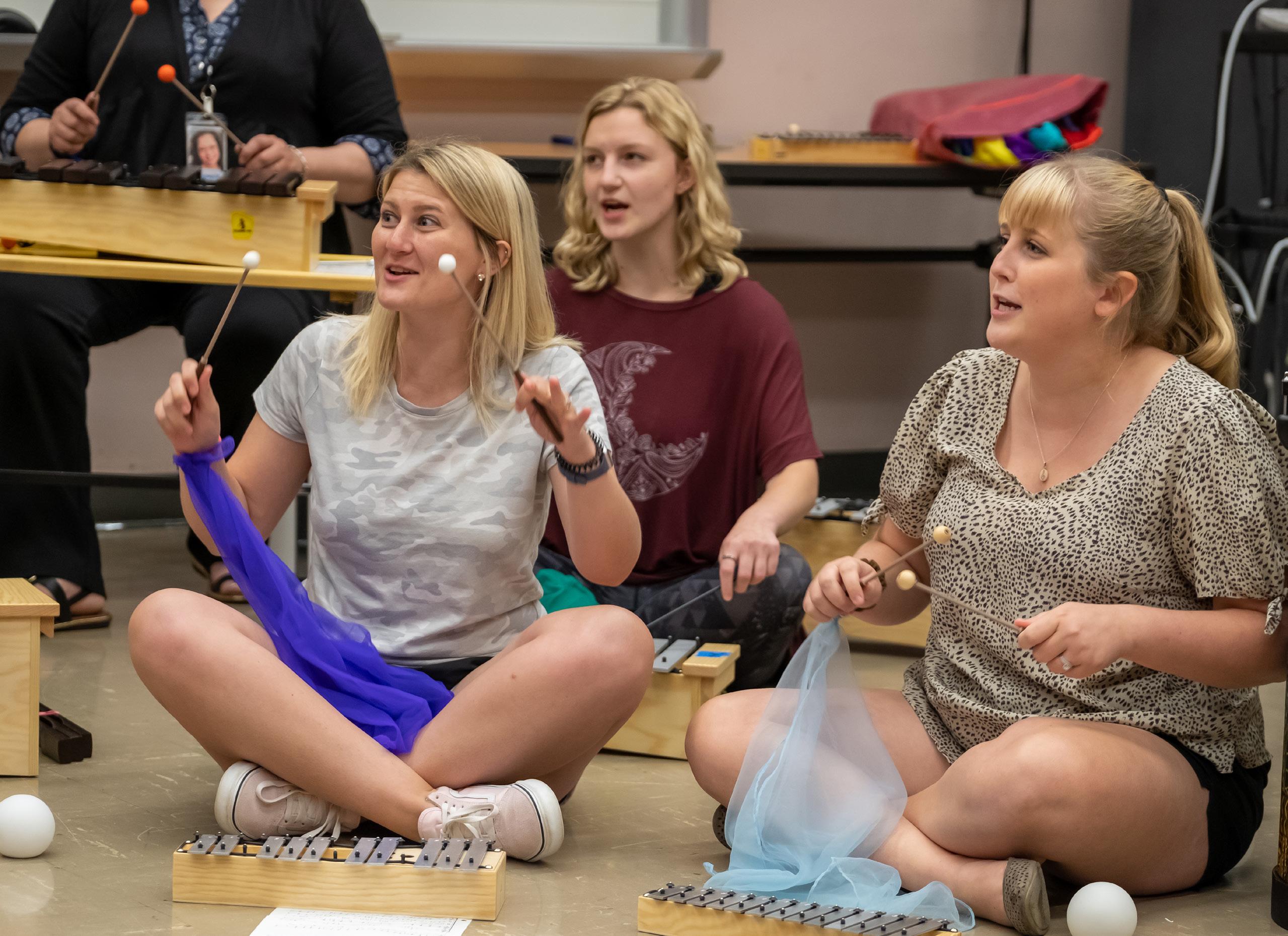

MUSIC EDUCATION IS THE HEART OF WHAT WE DO WWW.KENT.EDU/MUSIC 15 UNDERGRADUATE & GRADUATE DEGREES 450+ MUSIC MAJORS & MINORS 40+ ENSEMBLES & MUSIC ORGANIZATIONS 54-YEAR CLEVELAND ORCHESTRA PARTNERSHIP MUSIC ADMISSIONS EMAIL OR CALL: MUSICADMISSIONS@KENT.EDU 330-672-2172 ANDREW SHAHRIARI GRADUATE COORDINATOR ASHAHRIA@KENT.EDU 330-672-2830 JENNA SEPULVEDA SENIOR ADVISOR MUSIC EDUCATION JBICE@KENT.EDU 330-672-2418 ADMISSIONS & AUDITIONS GRADUATE ASSISTANTSHIPS 100% ONLINE MASTER’S Programs in chamber music, collaborative piano, composition, conducting, ethnomusicology, jazz studies, music education, performance, theory, and technology (Stark Campus).
BILL FORRESTER, TROMBONE & RETIRED DIRECTOR OF BANDS FROM HUBBARD LOCAL SCHOOLS:

“For me, playing in The Packard band for almost 40 years has given me the unique opportunity to play with so many outstanding musicians and play under the leader ship of so many great band conductors. The most memo rable concerts for me were those led by my college band director, Robert Fleming…but especially his July 4 spec tacular concerts!”
SHAWN REYNOLDS, 2ND OBOE/ENGLISH HORN, 5-12 BANDS IN THE HOWLAND LOCAL SCHOOLS & PROFESSOR OF OBOE AT YOUNGSTOWN STATE UNIVERSITY:
“I guess I am what is considered the next generation of musicians, even though I am of similar age to most of my colleagues in the band. Executive director Thomas
Groth gave me several opportunities to sub with the band, and subsequently I was lucky to win the audition to be play in the band permanently. I am so privileged to be able to once again play under the baton of one of my mentors and my college band director Dr. Stephen Gage, as well as so many other talented and insightful conduc tors. One of my fondest memories was being asked to solo with the band on Copland’s “Quiet City” for trumpet and English horn. It was an ethereal experience of which words cannot describe! Performing such an amazing piece under Dr. Gage’s baton and with my amazing musi cian colleagues was an honor! I am lucky to be able to play monthly in this magnificent ensemble with such incredible musicians and more importantly, my amazing colleagues and friends! Playing in this band truly makes me a better teacher because the band plays all levels of literature. Playing this varied literature allows me to be able to find great band works that I can then perform with my own middle and high school bands.
W.D. Packard Music Hall has a seating capacity of 2,200 that also includes small meeting rooms, a kitchen, and dressing rooms. The Packard Will provided nothing for maintenance, so annual operating costs are covered by hall rentals and city subsidies. The hall officially opened on October 15, 1955. Because of W.D. Packard’s generosity, Warren area residents can appreciate today a heritage that dates back to the 1800’s when town bands were a part of American life. W.D. Packard took pride in this aspect of American Heritage and his dream lives on many years after his will was written and the first musical notes were sounded in the hall named after him, The W.D. Packard Music Hall, by his band, The Packard Band.

28 TRIAD

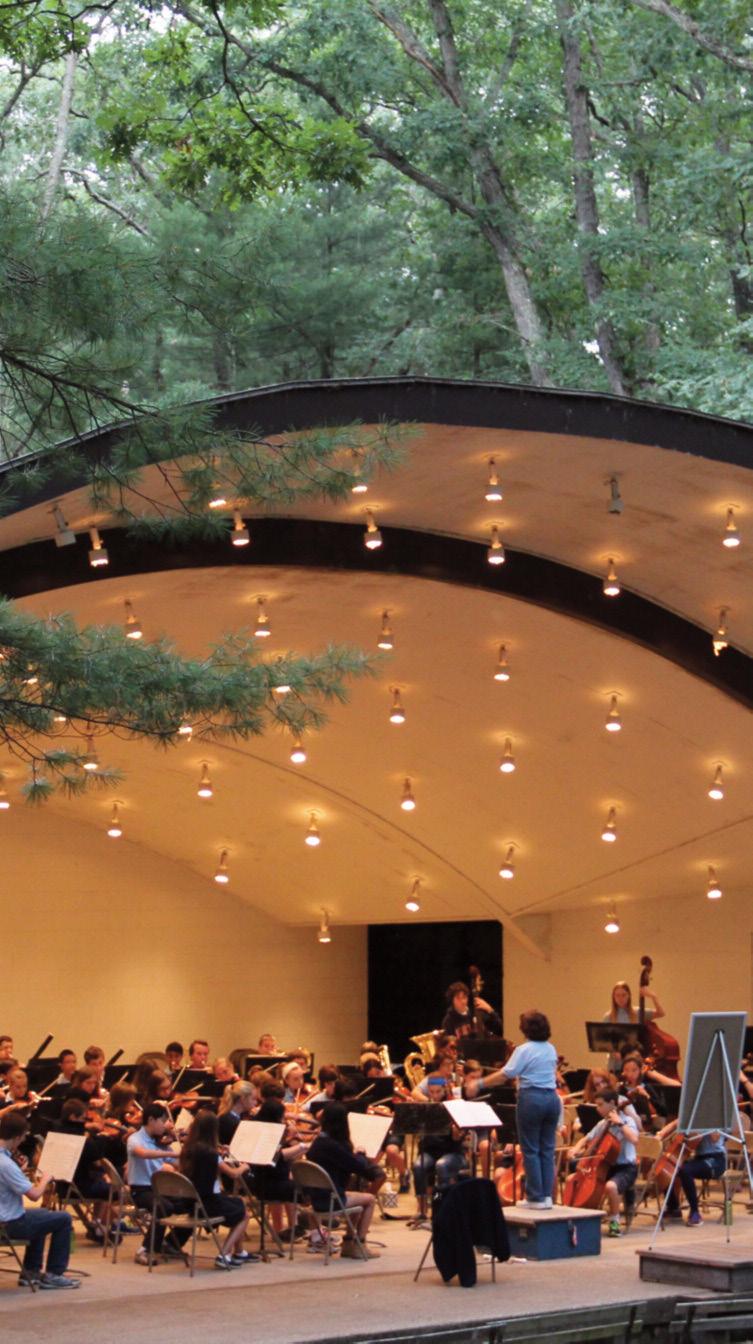




2023 PIANO DANCE VISUALARTS CREATIVEWRITING ORCHESTRA JAZZ BAND THEATER HARP CHOIR fineartscamp TM ITSTARTS HERE 300E.CRYSTALLAKERD.TWINLAKE,MICHIGAN49457SINCE1966 800.221.3796231.894.1966 TWOWEEKSESSIONSFORGRADES5-12 JUNE-AUGUST2023 Nowacceptingapplications Scholarships&financialassistanceavailable BLUELAKE.ORG

No group of this magnitude can function without an executive director to oversee the plethora of events and meticulous planning and programming that must occur throughout the year. The current executive director is Mr. Thomas Groth, retired director of bands in the Boardman Schools. All oper ations of the band, personnel, as well as manage ment of the W.D. Packard Trust are overseen by this amazing man, musician, teacher, and friend to many, Thomas Groth. In conjunction with The Packard Park Board of Trustees and the city of Warren, Mr. Groth sees to it that W.D. Packard’s dream remains a reality and continues, based on his will.
BECKY BICKEL STATES:
“Thomas Groth is our outstanding band man ager and is very creative in programming meaning ful and inspiring music for our concerts. I have so many wonderful memories of playing patriotic music and music honoring our veterans!”
THOMAS GROTH, THE W.D. PACKARD BAND EXECUTIVE DIRECTOR, FORMER BARITONE SAXOPHONE CHAIR, & RETIRED DIRECTOR OF BANDS BOARDMAN SENIOR HIGH SCHOOL:

“I have been a member of The Packard Band for 63 years since auditioning into the clarinet section my freshman year of college. I switched to saxophone as an opening came available. The band has come a long way since those years, and I am proud to have been a member and now the executive director. I was extremely honored to be named the executive director. I feel a tre mendous responsibility to Mr. Packard’s legacy making sure The Packard Band continues to perform as he wanted…free concerts for the edification and enter tainment of the people of Warren, Ohio…. and to pres ent the very best in concert band literature to all audiences!”
In an era when we are seeing almost daily cuts to music education, large shortages in educators, specifi cally music educators, and constant cutting of the arts in our society due to standardized testing and a focus on STEAM, The W.D. Packard band provides an amaz ing realm of possibilities. It is a true gift that W.D. Packard has left to the people of Northeast Ohio in his funding of an incredibly talented professional band, with paid musicians, to entertain its audiences for free! This is a truly magnificent gem in the middle of Trum bull County featuring some of the finest music teachers and musicians in NE Ohio and Western PA. Innovative ideas and featured artists are always being implemented and new literature is always being added. Per haps even more important is that the band is a catalyst for what music education can and should be for every one – an enjoyable experience; an aural bath of the best and most amazing music they can hear, played by pro fessional musicians who are passionate about sharing their love of music and of music education as they play music! This group should be on your bucket list of experiences in the state of Ohio. You can find all con certs presented by all groups on the band website at www.wdpackardband.com. You owe it to yourself to make it a point to visit The W.D. Packard Music Hall to experience the amazing gift this group has to offer your ears and please….bring a friend!
Thomas Groth
OCTOBER/NOVEMBER 2022 31
Modern Band: Getting Started
Martina Vasil & David Dockan
For both authors, modern band has been a relatively new label for something they had already been doing in their teaching careers. For Martina, her mid dle school general music lessons consisted of students creating beats on GarageBand, composing their own raps, and salsa dancing to popular R&B songs set to salsa beats. Students engaged in informal learning— they had choice in repertoire, learned music by ear, and had time for self-directed and peer learning (Green, 2008). She taught non-formally, or acted as a facilitator and co-creator with students. For David, his 6th and 7th graders performed student-selected music that was learned informally by ear and in peer groups (Green, 2008). The students also used Digital Audio Workstations to create beats, record raps, and write riffs. He also taught non-formally, coaching students, alongside traditional choral rehearsal techniques. All of this was done within the framework of a choral program with the popular music selections being per formed alongside the choral works.
It was only within the past decade that the authors heard about a non-profit organization called Music Will (formerly Little Kids Rock), which essentially was helping teachers create “garage” bands, or “mod ern” bands, in their schools. Music Will provides a support system for music teachers who want to bring popular music into schools, including financial sup port and free online resources. Music Will helped both authors develop their skills and knowledge in


modern band and they continue to grow. However, where do you start if you have never heard of modern band and if you have never taught or performed in this way before?
The purpose of this article is to share what mod ern band is and is not, why this kind of programming is needed in K–12 music education today, and how to get started using modern band in your classroom. There was no incentive from Music Will to write this article, nor is the purpose of this article to promote or advertise for the non-profit. This is an article written from the perspective of teachers who want as many students involved in school music as possible.
WHAT IS MODERN BAND?
With input from K–12 music teachers, the term “modern band” was coined by Music Will founder and CEO, David Wish, to encompass a kind of music education programming that places popular music at the center of its canon. Just like choir, band, and orchestra have a typical set of instruments that are a part of the ensemble, a typical modern band includes drum set, bass guitar, electric/acoustic guitar, vocals, and computer music software. It is worth mentioning that the “band” term in modern band does not mean that there has to be band instruments or even group performance. Some modern band teachers are doing beat making and audio production, neither of which are a “band”. Styles of music that are commonly
32 TRIAD
taught in modern band include rock, pop, reggae, hiphop, rhythm & blues, electronic dance music, and other contemporary styles that students prefer (Music Will, 2022). Overall, modern band utilizes student voice through non-formal teaching (teacher as facili tator) and informal learning for students to develop musicianship skills and learn musical concepts.
Modern band is not a program for music educa tion that is set in stone. It is not just “garage band.” It goes far beyond that and is much more flexible. Teachers who want to include modern band program ming are encouraged to start where the students are. What music do they like? What skills do they already have? How can the teacher start with these interests and skills and help move students beyond that?
WHY IS MODERN BAND IMPORTANT?
Band, orchestra, and choir directors have attempted to utilize music that students listen to, how ever the performance and teaching process tends to reflect the hegemonic structures of the western Euro pean classical music ensemble. This style of teaching and learning tends to be teacher centered (formal instruction) and has a rigid pedagogy (formal learn ing). As previously discussed, modern band empha sizes non-formal teaching and informal learning. Modern band, in its philosophy and theory, reflects the principles of culturally relevant teaching (CRT) by shifting the power structures and focus. The three components of CRT—student learning, cultural competence, and critical consciousness—still hold true today, according to culturally relevant teaching scholar, Gloria Ladson-Billings (Will, 2022).
Modern band classes include one of the main components of CRT—student learning. While that may appear to be an obvious statement, music teach ers can teach all the aspects of music through reper toire that is chosen by students. In student-selected music there is form, dynamics, beat, rhythm, mel ody, etc. Students will grow as musicians and music consumers by learning and performing popular music. Music Will’s program focuses on students feeling successful quickly. When a student feels suc cessful early, they are more likely to learn and con tinue with the task.
Modern band teachers encourage another compo nent of CRT—cultural competence. This is where students “maintain some cultural integrity as well as academic success” (Ladsen-Billings, 1995). When students are able to select their own music, they are able to have their own musical identities validated. It is important for teachers to not label the music of stu dents as “good” or “bad” because that will only con tinue to push a narrative of their music being lesser than the music of a traditional band, orchestra or choir.
Modern band embraces the last component of CRT—critical consciousness. Students must be allowed to critique the social norms and become critically conscious of the world they are navigating. This can be accessible to students through song writing. When students are writing music, they can write something that is from their lived experiences, and “there is the potential to promote artistic citizenship, which is centered on the practice of ‘music-making as ethical action’ and includes a focus on social justice and care for oneself and for the health of social com munities” (Powell, 2021, p. 58).
The shift in dominant power structures, validation in musical identity, and student directed pathways to learning help students to become independent learners and musicians. Modern band helps to empower stu dents to be musicians not only for the ensemble, but for themselves. The implementation of modern band programs has been shown to increase diversity and enrollment in school music programs without taking students away from the traditional school music ensembles (Clauhs & Cremata, 2020; Powell, 2019).
HOW DO YOU START?
Teachers typically follow four routes for starting modern band programming in their schools: extracur ricular programming, “pull-outs”, revised classes, or new classes. Extracurricular programming can occur before school, after school, or during lunch/recess in the music room. “Pull-outs” are when teachers use their planning time or extra time in their schedule to invite students to the music room (similar to when band students are pulled out of class for lessons). Revising the curriculum for an existing class can occur easily at the elementary level when teachers
OCTOBER/NOVEMBER 2022 33
decide to do a unit on ukulele, for example. This may be more difficult at the secondary level, but it is pos sible with a proposal and administrative approval. Offering a new class is often the most extensive pro cess, with a proposal, committee approvals, and vari ous administrative levels to navigate.
Instruments used in modern band are whatever the teacher has on hand and what has been acquired through donations, grants, school funding, or support from non-profit organizations. For example, there have been modern band programs that are all maria chi music or that include Appalachian dulcimers. This may also look like an after school mixed age choir, grades 3–8, using a canon of R&B and hip-hop music, where students sing mashups of songs and learn everything by ear. It may be a lunch/recess music club for middle school students (grades 7–8) using class room instruments (e.g., xylophones, unpitched per cussion, glockenspiels) to cover popular songs the students enjoy. While it may not look like it at first glance, these examples are modern band classes. Pop ular music is the central canon, student preferences are taken into account, the teacher facilitates learning, and students are largely self-guided and learn the songs by ear.
Instrumental, choral or general music classes can also use ideas from modern band to engage students in creating arrangements. For example, students can form groups and select music to cover. The teacher guides students to listen to and emulate the percussion, bass, guitar, keyboards, and melody parts to create an arrangement (acapella, instrument ensemble, elementary classroom instruments, etc.). This could be a great way to get your feet wet using non-formal teaching and informal learning in your classroom. Go here to see what the first few classes of modern band might look like: https://musicwillresources.kinsta. cloud/lessons/modern-band-in-context-introduction/
GRANTS AND EQUIPMENT ACQUISITION
Many teachers are hesitant to try new pedagogies, ensembles, or practices because they do not have the budget for instruments or method books. While the teaching approaches and ways of learning within modern band can be used universally, the instruments typically used in popular music are what often make
up the modern band ensemble. In this section we offer ideas for funding and acquiring instruments.
A current trend in departments of education across the country is the development of career and technical education (CTE). The Perkins Grant is used to fund CTE. In Ohio, music engineering programs are con sidered to be a CTE program in Arts and Communica tion. A modern band program would fall into this category and therefore you would be eligible for funding from the Perkins Grant. This would help to fund a new class. Talk to your CTE coordinator and or district finance office about using those funds.
There are many non-profit arts organizations that provide grants for music classrooms across the country. One organization, Save the Music Foundation, offers the J-Dilla Music Technology Grant, which provides a full modern band set up along with 15 midi keyboards, ipads, microphones and much more ( https://www.savethemusic.org/how-we-work/ explore-music-tech/). This grant could be used to revise a class that you are currently teaching or create a new class. Through a quick Google search you will be able to find some other organizations that offer funding for modern band programs.
The community you work in wants you to suc ceed. It is okay to reach out to them for assistance in supporting and developing your music program. Some programs get instruments from their community by sending out a newsletter asking for donations of gui tars, drums kits, basses, and PA systems. You may receive a variety of instruments, but they are great instruments to start on. Some teachers receive funding and supplies through organizations like Donor sChoose or GoFundMe. Donations and funding web sites are great to build investment from your community. Community investment could be used to help develop extracurricular, pull-out, revised classes, or new classes.
RESOURCES
The top resource we recommend is the organiza tion that created modern band, Music Will. Their website provides teachers with lesson ideas with and without instruments. There is also a section for stu dents to look up song charts and take beginner video lessons on modern band instruments. Moosiko is
34 TRIAD
Fine
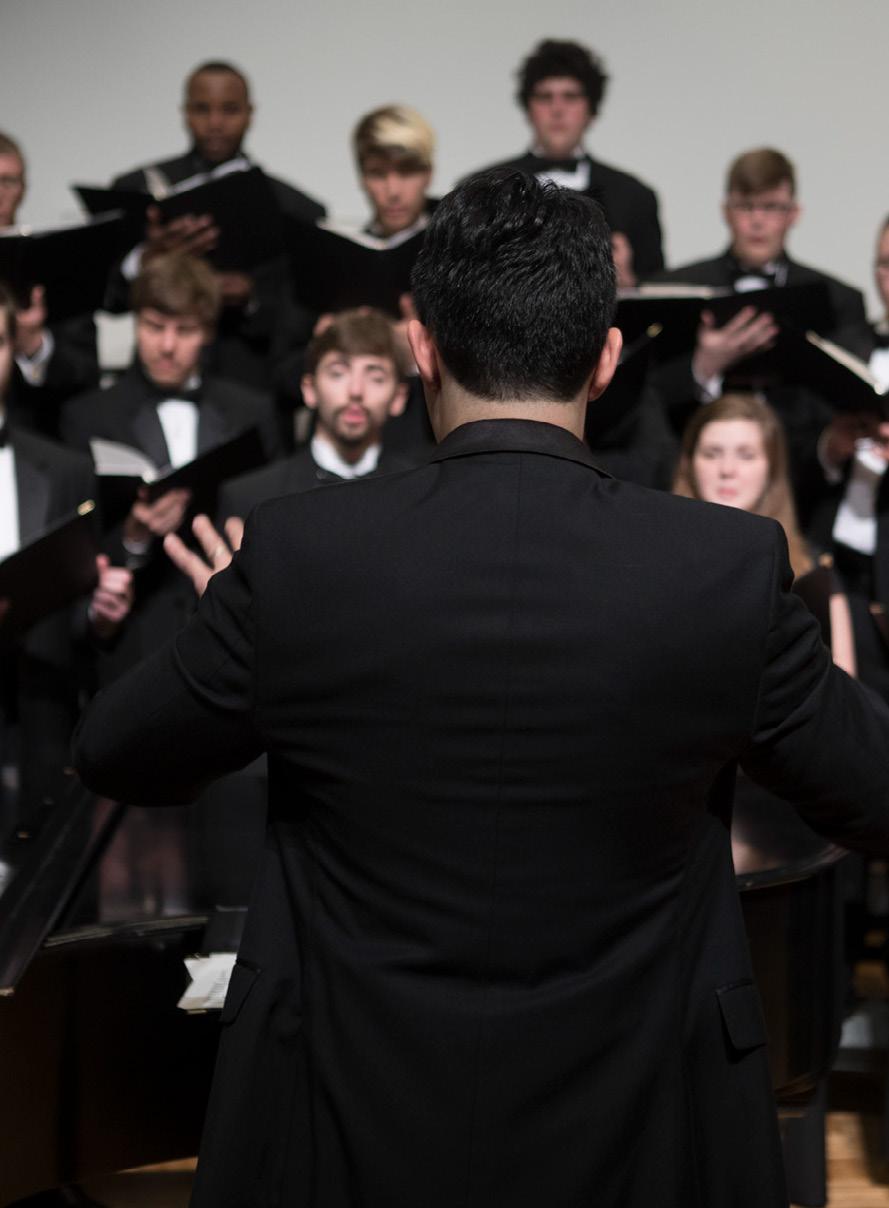
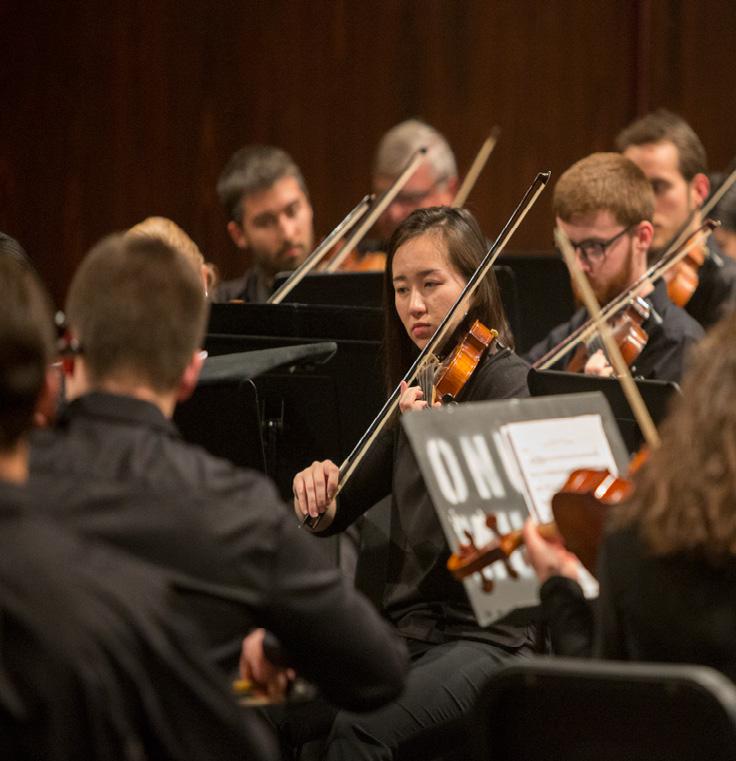
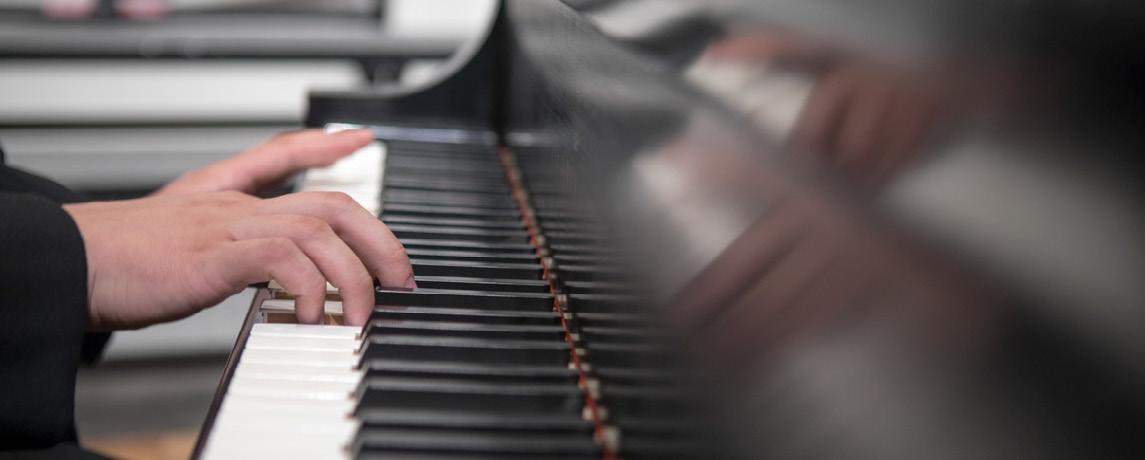

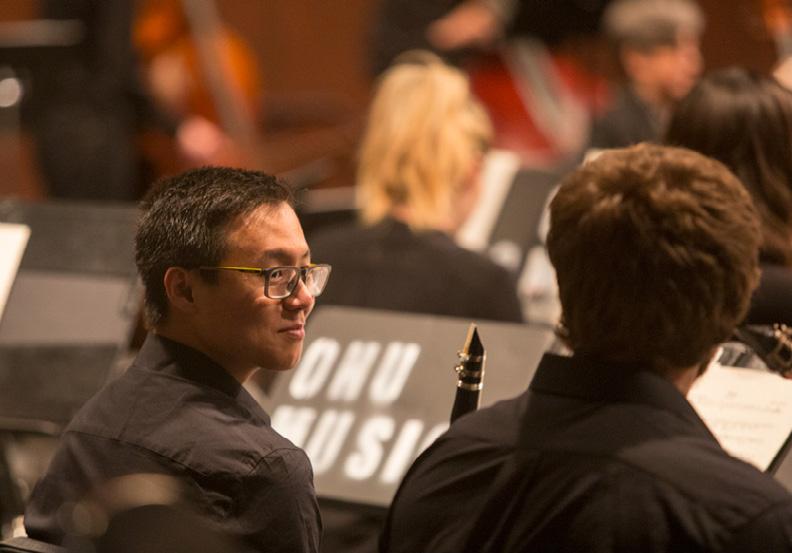
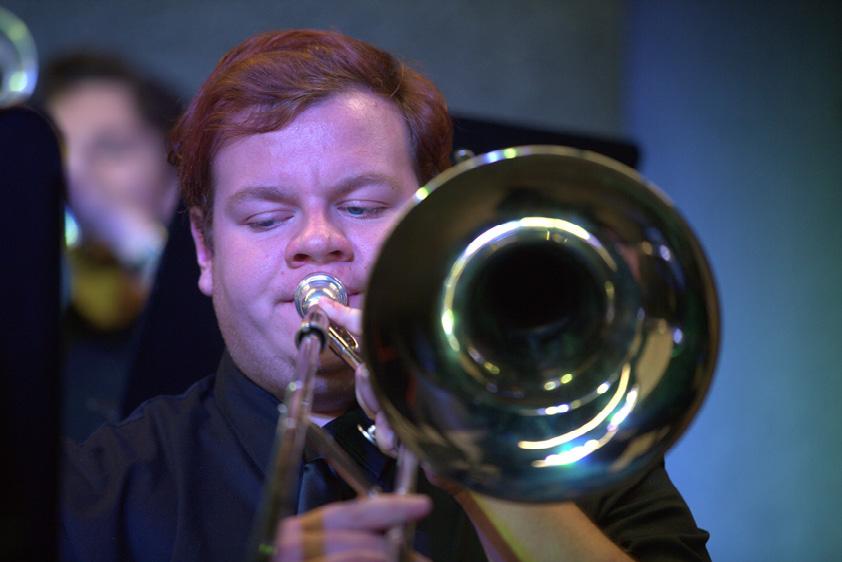
OHIO NORTHERN UNIVERSITY PROGRAMS IN MUSIC Fully accredited by the National Association of Schools of Music Outstandingorchestra,choralandpianoprograms State-of-the-artExceptionallyaccomplishedanddedicatedfaculty facilities•Generousscholarships Explore O NU ’ sprogram s i n dnoitiduadnfrocisumta e s a t ONU.EDU/ ACADEMICS Offering the following degree programs: • Bachelor of Music in Music Education • Bachelor of Arts in Music with concentrations in: Sound Recording Technology, Composition, Music History & Literature, or Applied Studies • Bachelor of Arts in Music with Pre-Med track (Music to Medicine) • Bachelor of
Arts in Musical Theatre • Arts Administration Minor with ample internship offerings • Music Minor • Outstanding opportunities for double majors

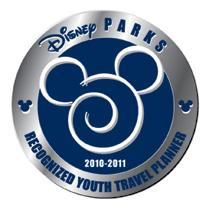
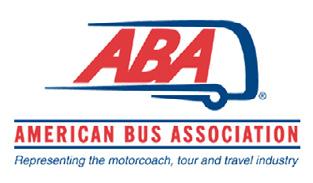
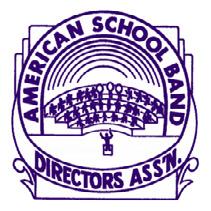
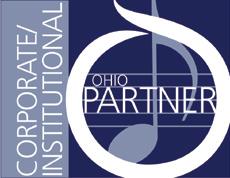
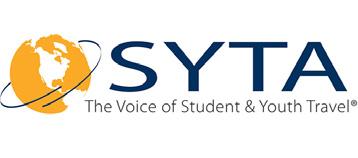

another great resource for chord charts and offers adaptive music learning through a personalized expe rience. The website offers a free trial where you can try out what it might look like for your classes. Musi cal Futures is based in the United Kingdom and pro vides lesson plans and visuals you can use with your classes. There are sample resources on the website. The Association for Popular Music Education is an international organization focused on promoting and advancing popular music education at all levels. The organization offers a blog, runs the Journal for Popu lar Music Education, and has conferences that include research presentations and practitioner workshops. (See the end of the article for links to all of these websites).
CONCLUSION
It is our hope that by reading this article, teachers become more aware of what modern band is and how it can co-exist with music courses currently being offered in schools. If one is interested in learning more about this kind of school music programming, there are plenty of professional development opportu nities to take advantage of—from the modern band workshops offered at the University of Kentucky to the Modern Band Summit (a conference) that occurs every July in Ft. Collins, Colorado. At the least, one can peruse the Music Will website (https://musicwill. org/) to access free materials and videos of what mod ern band is all about. In the end, the goal is to tap into the musicality of all children. Through modern band programming, we can continue to broaden music edu cation and make it more accessible for all.
LINKS
• Association for Popular Music Education www.popu larmusiceducation.org
• Modern band Summit in Ft. Collins, Colorado https:// musicwill.org/mbsummit/
• Moosiko: https://moosiko.com/
• Musical Futures: https://www.musicalfuturesonline. org/sample-resources/
• Music Will Website: https://musicwill.org/
• Music Will Free Resources: https://musicwill.org/free/
• Musical Will Academy: https://littlekidsrock.force. com/lms/s/
REFERENCES
Clauhs, M., & Cremata, R. (2020). Student voice and choice in modern band curriculum develop ment. Journal of Popular Music Education, 4(1), 101–116. https://doi.org/10.1386/ jpme_00016_1
Green, L. (2008). Informal music learning in the school: A new classroom pedagogy. Ashgate. Music Will. (2022). https://musicwill.org/about/ Accessed September 8, 2022.
Powell, B. (2021). Equity in music education: Addressing equity and social justice in music education through modern band: Opportunities and challenges. Music Educators Journal 108(2), 57–59. https://doi. org/10.1177/00274321211060534
Powell, B. (2019). Modern Bands impact on student enrollment in traditional music ensembles. School Music News, Fall, 20–23. https://digitalcommons.montclair.edu/cgi/viewcontent. cgi?article=1041&context=cali-facpubs Will, M. (2022, May 11). What should culturally rel evant teaching look like today? Gloria Lad son-Billings explains. Education Week, 41(33). https://link.gale.com/apps/doc/A703631995/ OVIC?u=uky_main&sid=bookmark-OVIC&x id=2d84a766
Martina Vasil, PhD, is Associate Professor of Music Education and Director of Music Education Summer Training at the University of Kentucky, which has included modern band training for the past five years. She is president of the Association for Popular Music Education and was an inaugural member of the Mod ern Band Fellowship in 2018.
David Dockan is a PhD student in music education at the University of Kentucky. David is also a teaching assistant at the University where he teaches classes on music in the elementary classroom, rehearses the com munity music ensembles of New Horizons, and super vises student teachers. He is also an intern for the Association for Popular Music Education. David actively writes and presents on popular music educa tion, hip-hop, modern band, and Orff Schulwerk.
OCTOBER/NOVEMBER 2022 37
OTES Fall
Part 1 of 3
Dr. Rachael Fleischaker

Welcome to the 2022-2023 school year! Whether you are a first-year teacher or have 40+ years of experience, you will understand when I say that the last several years have been tumultuous. We have been on a journey with challenges, obstacles, and opportunities that we never imagined. Congratulations, you made it to this point. Our new normal is beginning and as you may have figured out by now, the only constant is change.
Changes can be scary or exciting. The newly revised and fully implemented OTES Framework has some exciting opportunities for music educators. Hopefully the mention of OTES will not be scary. The required compo nents of the revised OTES framework include a profes sional growth plan (PGP), observations and walkthroughs by a certified OTES 2.0 evaluator, presenting evidence of student growth through high quality student data (HQSD), and conferences with the evaluator to discuss growth on the PGP as well as a final summative rating. For a detailed description of the entire OTES 2.0 Frame work, please refer to OTES 2.0 Is Here! What Now? (Fleischaker, 2021) in the Fall 2021 Issue of the TRIAD. That article describes each component in detail.
This article is the first of a three-part series that will review components of the evaluation framework and envision ways that music educators can incorporate them into everyday rehearsals and classroom activities. This first installment of the series will unpack Professional Growth Plans (PGPs) and their relationship with High Quality Student Data (HQSD). The next will dive deeper into HQSD and include examples from general music,
choral, and instrumental settings. The final article explores various types of evidence and ways to present it to your evaluator so that you can get the most from your evaluation cycle.
IT CANNOT BE STRESSED ENOUGH THAT YOUR OTES PATH IS DETERMINED BY YOUR LOCAL BOARD OF EDUCATION.
The state of Ohio provides the framework, but each school district determines how to implement the various components (ODE, 2020). This is often referred to as locally controlled decisions. Statewide, the overall teacher ratings are reduced to four categories, Accomplished, Skilled, Developing, or Ineffective. The frequency of observations, walkthroughs, and conferences with the evaluator is based on the last rating received. Check with your principal, building administrator, or union represen tative to verify your school district’s policy.
The professional growth plan (PGP) and improve ment plan are key components of the OTES 2.0 frame work. Teachers who are rated Accomplished, Skilled, or Developing must create a PGP that include one or two professional goals. These goals must align with school district/building goals. Accomplished teachers determine their own goals. Skilled teachers decide jointly with an evaluator what their goals will be. Developing teachers write goals with guidance from their evaluator. Teachers who are rated Ineffective are placed on an improvement plan that is at the discretion of the evaluator. During the course of the school year, teachers are encouraged to
38 TRIAD
Music Education at The College
The College of Wooster offers comprehensive studies in Music Education, culminating in a Bachelor of Music Education degree and Ohio teacher licensure. Our students are mentored by expert musicians and educators, and graduate with a solid foundation of performance skills, content knowledge, and practical experience.
Field experience in K-12 music classrooms during your first semester at Wooster.
Small class sizes allow for personalized attention
Expert training in instrumental, choral, and general music teaching techniques
Perform each semester in ensembles dedicated to musical excellence
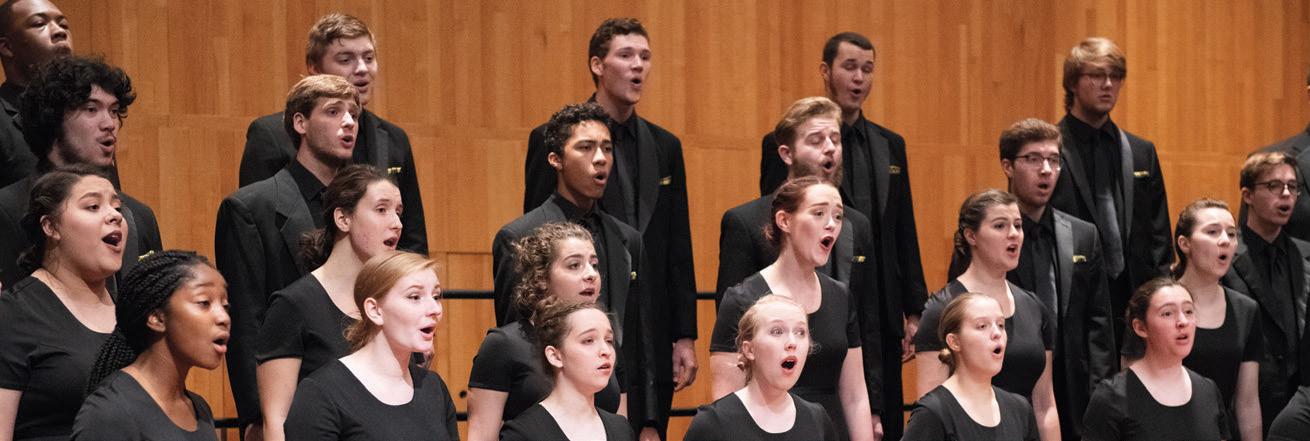

Study in a rich liberal arts environment alongside diverse and supportive peers
Dr. Lisa Wong, Associate Professor of Music at Lwong@wooster.edu

Independent Minds, Working Together www.wooster.edu
•
•
•
•
•
Visit: www.wooster.edu Contact
of Wooster
review and reflect on their goals and to collect evidence for how they are making progress towards achieving them.
As you begin this school year, having a plan for yourself and your evaluator is the most beneficial way to navigate your evaluation process. Whether you set your own goals or work with an administrator to develop your goals, this is an opportunity to reflect on your teaching in six specific areas: student learning; knowledge of students; lesson delivery; classroom environment; assessment of student learning; and pro fessional responsibilities. If you are unsure about what area to choose, log into your OhioES account which can be found through the Ohio Department of Educa tion website or by using https://www.ohioes.com. This interactive tool guides you through the various teaching standards allowing you to reflect on each as an area of strength or area of growth.
Decide what areas you would like to strengthen and then set a goal that is S.M.A.R.T. (Doran, 1981). A “smart” goal is specific, measurable, achievable, realis tic and timely. Make your goal specific to what you would like to accomplish. Is it a specific skill that you want students to learn? Is it a teaching strategy that you
want to try? Do you want to get more education? Set goals that are beneficial for you and your students.
Then think about how you will measure progress on that goal. Will you have written data (pencil paper quiz zes, Google forms, or similar) or will it be in the form of performance rubrics? Will you have graduate credit to show for your work? Perhaps you will be able to present at a professional development session for your colleagues. Whatever the goals are for your PGP, think about how you will show (measure) progress to your administration.
The next step is to determine if the goal is achiev able within the timeframe allotted. Set goals that are challenging, but manageable. As music educators, our year can very often revolve around concerts, programs, or performances. When determining your professional goals, keep those high-pressure situations in mind. Inte grate what has to be done with what you want to accomplish. A professional growth goal is a means to improve what you already do, not add more to your plate. Also, consider factors that might hinder your progress. Is it within your power to overcome those obstacles? For example, if the obstacle is a scheduling issue, are you able to change your schedule? If you do
SCHOOL OF MUSIC
Open House for the NEW Timashev Family Music Building Sunday, Oct. 23 • 1–5:30 p.m.

The Ohio State Marching Band Concerts Friday, Nov. 18 (grades K–12) • Sunday, Nov. 20 (public)
Music Celebration Concerts • Friday, Dec. 2 10 a.m. (grades 4–12) • 7:30 p.m. (public)
High School Honor Band Weekend
13–15, 2023
deadline: November 4, 2022
Audition Days for the 2023–2024 Academic Year
3,
events
Jan. 21, 2023
Feb. 11, 2023
January
Nomination
Dec.
2022 •
•
All
are subject to change. music.osu.edu 40 TRIAD
not have that control, then stay away from that particu lar goal. You must do what is achievable by you for your evaluation. While there are definitely obstacles worth tackling, for teacher evaluation purposes, you need to choose areas that are within your control.
Related to being achievable, is the idea of setting a realistic goal. What can you realistically achieve in the context of your school setting? Think about what time and resources you have available to you. Is the goal something that you can manage throughout the evalua tion cycle on your own. If the goal relates to student achievement and you work in a team-teaching situation, are you able to achieve the goal if other team members are not involved? Your professional growth plan must show your growth.
The last of the S.M.A.R.T. goal criteria calls into question time constraints. Can you show reasonable progress within the evaluation cycle? Rome was not built in a day. Taking small steps throughout the year will help to accomplish the big picture goals. Try to set deadlines for progress in order to create a sense of urgency. What would you like to accomplish before the December break? By spring break? By the end of the year? By periodically monitoring your progress, you
will be better equipped to discuss your PGP during the end of the year evaluation conference.
The ODE states that PGPs “must align to district and/or building improvement plans” (ODE, 2022). If you are unsure of what the building or district goals are, have a conversation with your building principal. Dis cuss the goals you would like to set and determine if they are appropriate to building goals. Many districts set goals related to increasing math and reading scores. However, music educators in Ohio are not required to use high stakes testing and shared attribution is no lon ger allowed. This means your professional goals do not need to be linked to math and reading scores. All school districts have a mission and vision statement. Many of them use phrases such as creating well-rounded stu dents, inspiring life-long learners, delivering high qual ity education, empowering students for success, providing opportunities, developing lifelong learners and the like. These statements are often the same types of goals that music departments endeavor to instill. You can build off those vision and mission statements.

ODE also requires that PGPs “should reflect the evidence available and focus on the most recent evalua tions and observations” and “be individualized to the


Scholarship Audition DatesBE vibrant (800)992-6682 mountunion.edu/dept-of-performing-arts Scholarships available for majors, minors, and participants in the band, choir, orchestra, and keyboard areas. E XPL ORE M USIC AT MOU NT U NION OCTOBER/NOVEMBER 2022 41
needs of the teacher.” (ODE, 2022). In other words, the same goal can be used for many years if necessary. The teacher must show progress toward attaining the goal, but that does not mean that the entire goal must be reached within the 8-9 month evaluation cycle. Goals should be revisited and revised as necessary. Have fre quent conversations with your evaluator on the progress you have made and the “next steps” that need to be taken. At the end of the evaluation cycle, you may decide to make new goals or continue working toward the same ones.
Finally, a frequently asked question is does the evidence need to be from my HQSD? Each district will determine if your PGP must include student growth measures. The Ohio Department of Education (ODE) states, “the PGP helps the teacher identify areas of pro fessional development that will enable the teacher to enhance practice” (ODE, 2022). While the goals for your Professional Growth Plan do not need to be linked to student growth, they must show that by reaching your goal, you have become a more effective educator. Progress is measured through the evidence presented at the end of the conference with your evaluator.
It is crucial to be able to articulate not only what you intend to accomplish, but also how you will show evidence of meeting your goals. The evidence can be in a quantitative (shown through numerical or measurable data) or qualitative (shown through words and descrip tions of factors that cannot be measured or counted) form. You must decide when writing your PGP which type of evidence will be used.
The evidence can be collected through HQSD. If your goal is to try a new teaching strategy, collecting beginning, middle, and end of the year data from the students would be a good way to show how the strategy is working for you. This data can be your HQSD if it meets the criteria (again see Fleischaker, 2021 for detailed descriptions). If you want to work toward hav ing more student input in your classes, you might want to have students write out suggestions or critiques throughout the year to show your evaluator.
While your goals can be linked to HQSD, it might not need student assessment data to show progress. Per haps you have a classroom management piece that you want to implement. Consider comparing the number of office referrals and/or parent contacts from one year (or semester) to the next. That would not meet high quality student data criteria, but it would show evidence of
how the goal is progressing. Another example of a PGP that would not need HQSD is deciding to have more parent involvement in your program. You can show evi dence by keeping track of how many parents attend concerts, volunteer for events, or become involved in the booster organization. These may support your pro fessional growth, but would not be HQSD.
You must present evidence of student learning during the evaluation cycle, but it may not be related to your PGP. Each district will have their own guidelines so have a conversation early in the process. As stated, HQSD is specifically meant to demonstrate student achievement and all teachers must show that they are using a minimum of two different assessments that meet the HQSD guidelines regardless of their profes sional goals on the PGP.
While pre-observation conferences are not required, they are a time to have conversations with your evaluator about the goals you have set for your professional development and in your classroom. Whether or not this is a requirement for you, having a pre-conference is an excellent opportunity to explain to your evaluator what your goals are and how you will measure your progress toward them throughout the school year.
All teachers are required to have at least one sum mative conference during the evaluation progression. During the final summative conference, the evaluator gives the teacher an overall rating of effectiveness. Evi dence used to produce this rating will come from the observation, the data collected from two forms of HQSD, and evidence gathered on the progress made towards the teacher’s PGP. The final conference hap pens toward the end of the school year. The evaluation process should be completed by May 1.
Navigating OTES 2.0 can and should be a positive experience! It is important to understand that OTES 2.0 is a framework. Your local district will develop and implement its own policies. Your evaluation will be more beneficial if you have conversations with your evaluator about expectations and protocols. Principals are not experts in every content area, so take the time to explain what you are doing in your classroom and why that is important. Use the conferences and/or informal meetings to educate your evaluator on your goals, expectations, and plans for growth.
Stay tuned for the winter TRIAD for examples, explanation, and tips from music colleagues from around the state who have implemented HQSD with
42 TRIAD
great success. You will see examples of the assessments they use, the ways that the metric meets the HQSD cri teria, how they have compiled their data, and the bene fits for their students. The final article in this series will focus on presenting evidence of progress toward your PGP and evidence of student achievement to your eval uators. Until then, have a wonderful school year!

REFERENCES
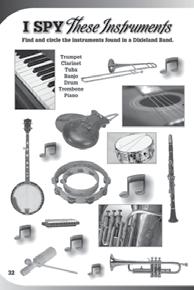


Doran, G. T. (1981). There’s a S.M.A.R.T. way to write manage ment’s goals and objectives. Management Review. 70(11): 35–36.
Fleischaker, R. (2021). OTES 2.0 is here! What now? TRIAD. 89(1), 33-38.





Ohio Department of Education. (2020). Ohio teacher evaluation system 2.0 model. Ohio Department of Education. Retrieved from http://education.ohio.gov/getattachment/ Topics/Teaching/Educator-Evaluation-System/ Ohio-s-Teacher-Evaluation-System/OTES-2-0/ModelOTES-2-0-Final-03-27-20.pdf.aspx?lang=en-US
Ohio Department of Education. (September 15, 2022). Teacher evaluations. Retrieved from https://education.ohio.gov/ Topics/Teaching/Educator-Evaluations/Teacher-Evalua tions


Dr. Rachael Fleischaker (rfleisch@kent.edu) has taught elementary general music, band, and choir in Canton, Ohio for over 25 years. She earned her B.M.E. from the College of Wooster. Both her M.Ed. and Ph.D. are from Kent State University. Research interests include cultur ally responsive music education, music teacher develop ment and support, and learning, assessment, and evaluation. She has presented numerous sessions over the years at OMEA Professional Development Conferences, at NAfME Professional Development conferences, and has reached international audiences by presenting at the 2022 International Society for Music Education Confer ence. Rachael is the chair of the OMEA Teacher Evalua tion committee.

KeysToImagination.com explore d i v e r s i t y & w o r l d m u s i c Combine music, social studies, geography & more in this customizable multimedia program OCTOBER/NOVEMBER 2022 43
Starting Students with Natural Breathing
Lauren Rudzinskas, DMA
When we first introduce brass students to the concept of breathing, the goal is to do anything to avoid the pinched, unfocused, airy sound often caused by a student hunched over, leaning in the chair, or holding the instrument completely incor rectly. In a valiant effort to get students to utilize air to create full sounds, we often resort to using words like big, more, or loud. I would like to suggest an alternate approach; instead, try using words like “open” and “relaxed.” When students are new to an instrument, the tendency is often to resort to short cuts to facilitate performing in a way that their tech nique has not caught up with. This can create bad habits which lead to longer term issues with per forming and even health issues. If students are not making an effort to breathe in a natural, relaxed manner, often the act of breathing to support the sound of a brass instrument can create a great deal of tension. This, coupled with improper posture and inconsistent inhalation creates sounds that are pinched, airy, and without a core. When working with brass players, a great place to start is to encourage students to relax and consider their posture. Ensure that students are sitting with their backs straight, feet touching the floor (if possi ble), and with their head and neck aligned with the spine, not angled forward or down. Students should be asked to bring the instrument to their face, rather than allowing the weight of the instrument to dictate
posture. For instruments such as trumpet, trombone, and mellophone, the tendency is to lean forward due to the weight of the instrument or to collapse back into the chair and pinch arms at the side of the body. With tuba, euphonium, and horn, the shape of the instrument often encourages students to contort their body to fit the mouthpiece. Wherever possible, it’s important to correct these issues; for example, using a block under a euphonium or a stand for the tuba. Posture is an important component of efficient breathing because improper posture creates tension in the body which interferes with the ability to get a relaxed inhale and can lead to a performance-related injury in the long term.
Some excellent ways to teach students to achieve relaxed, deep breaths are practicing long tones. One such example is to take the Remington F-Interval Study (a chromatic long tone exercise alternating between F and chromatically descending pitches) and allow the student to take as much time as needed between each set of two notes. Gradually have the student work to make this breath more efficient, until over time they can breathe in time. In the con text of a large ensemble rehearsal, this may not be possible. Instead, using the same exercise, require students to stop a half-note short every two measures so that they have time to breathe. Assigning a desig nated spot to breathe will encourage students to get in a great breath and have air to spare, rather than

44 TRIAD
waiting until they are on empty and breathing in a small panic that is sure to encourage tension. Over time, you can shorten the space to breathe, change how often it occurs, or change the range of the exer cise so that students can practice these skills in other ways.
Sometimes students need a more concrete, visual example. In this case, the physical effect of encour aging students to roll back or lower their shoulders can be a great place to start in eliminating tension. Especially in younger students, the act of holding a larger instrument can be physically taxing. Students often put themselves into uncomfortable positions to facilitate holding the instrument. Taking a step back to acknowledge the tension in the body, and release it, will allow the student to open-up and take a relaxed breath without tension-cultivated poor pos ture getting in the way. For this same reason, it can be beneficial to take students through a mindfulness relaxation exercise, encouraging them to close their eyes and notice the places where they hold tension. Imagine the tension blowing away in the wind and
take a relaxed breath. Further imagery such as pic turing a ping pong ball in the mouth to visualize opening the oral cavity can be particularly effective such as for low brass musicians.
Because the demands of playing a brass instru ment are significant, sometimes as musicians we complicate a process that the body has designed to be as efficient and natural as possible. The respiratory system is comprised of a series of components that allow your body to breathe. While both your mouth and nose do allow air into the respiratory system, beginner brass musicians should be strongly discour aged from breathing through their noses. This is a common problem in young musicians that can lead to significant issues. Not only is it more challenging to get a good quantity of air in through the nose, but breathing through the nose creates significantly more tension. Any tension created during the process of breathing negatively impacts the air brass musicians use to create sound and it is almost always the case that a breath taken with tension will result in a pinched sound when exhaled through the instrument.

For more information, please visit CSUOHIO.EDU/MUSIC/. EXPLORE THE POSSIBILITIES SEE WHAT CSU MUSIC HAS TO OFFER YOU! Undergraduate Degree Programs BM - Composition, Music Education, Performance | BA - Music | Minor in Music Graduate Programs MM - Performance, Composition, Music Education | Professional Studies in Music Performance Certificate Program Post Baccalaureate K-12 Multiage License in Music Education Post Baccalaureate Non-Degree Program Music Talent Scholarships Awarded to majors and non-majors for the 2023 – 2024 Academic Year! OCTOBER/NOVEMBER 2022 45
Once air enters through the mouth, it is delivered by the pharynx (a tube we all know as the throat) and into the trachea which connects the throat to the lungs. Air finally travels through the bronchial tubes before reaching the lungs where it is controlled by the muscles in the diaphragm.
When describing to students what it feels like to breathe, it is important to note that the shape of the lung differs slightly based on an individual’s gender at birth. Because of this, some students may respond differently to examples. Those assigned male at birth have lungs that are pyramidal in shape and people assigned female at birth have lungs that are more prismatic in shape. This means that common explanations of how to breathe such as expanding towards the belly, or down may not apply to everyone. Encouraging students to take a relaxed, deep breath like they are yawning and being aware of where they feel their body expanding can be a great way to include everyone and encourage exploration of breathing in a natural way. This also encourages stu dents not to “push” air into a specific place in their body (such as pushing into the stomach) which can create tension and feel unnatural for different body types. To dispel another popular misconception, despite anatomical differences, there is not one gen der that is able to breathe “bigger” or “better” and no one should ever be told that they do not have the lung capacity to play an instrument based on gender. “In other words, large lungs are not necessarily associated with a larger airways size than in a person with smaller lungs.” What is important is how efficiently the musician uses their respiratory system, not the
size of the person or their lung capacity. Teach stu dents to breathe properly and understand how their body can do so in a natural way and brass musicians will have a better sound and longer phrasing.
REFERENCES
Torres-Tamayo, N., García-Martínez, D., Lois Zlolniski, S., Torres-Sánchez, I., García-Río, F., & Bastir, M. (2018). 3D analysis of sexual dimorphism in size, shape and breathing kinematics of human lungs. Journal of anatomy, 232(2), 227–237. https://doi.org/10.1111/joa.12743
LoMauro, A., & Aliverti, A. (2018). Sex differences in respiratory function. Breathe (Sheffield, England), 14(2), 131–140. https://doi.org/10.1183/20734735.000318
Dr. Lauren Rudzinskas teaches trombone at the Univer sity of Akron. Rudzinskas has a dynamic career as an accomplished trombonist and pedagogue performing as a chamber musician, soloist, freelancer, clinician, and pre senter. She is a founding member of Calypsus Brass, an innovative ensemble praised for its commitment to per forming new works, giving masterclasses, and creating high-level professional recordings for underrepresented composers. Praised for her sound and technique, Rudz inskas has been a featured solo artist with a variety of ensembles as well as an active recitalist. As an accom plished arts administrator, Lauren serves as the General Manager of the International Women’s Brass Conference. Dr. Rudzinskas earned a Doctor of Musical Arts in Trom bone Performance and Literature with a minor in Peda gogy and an Advanced Certificate in College Teaching at the Eastman School of Music where she also earned a Performer’s Certificate and was nominated for the presti gious Artist’s Diploma. An advocate for diversity and inclusion initiatives, Rudzinskas serves on the advisory board for the Chromatic Brass Collective and is Presi dent of the Board for the Future in Music Program.
46 TRIAD

The Popularity of the Ukulele
Lisa Heinrich

As the ukulele gains popularity throughout the United States, teaching ukulele to students can make music class relevant to their musical lives outside of school. Ukulele enthusiasts have organized ensem bles in major U.S. cities, public libraries offer uku lele classes, and YouTube contains countless ukulele play-along and tutorial videos. By teaching all stu dents the basics of ukulele, they can play ukulele for their own enjoyment and with others.
If you are new to ukulele, there are three main options to learn how to play. The first option is to join a local ukulele club. The club experience can be valuable to observe how informally trained musi cians learn, rehearse, and perform because one can apply these strategies in your classroom. The second option is to enroll in a formal ukulele class or con ference workshop. The third option is to watch videos on YouTube. There are many ways to strum and hold the ukulele so it’s important to watch several videos, so you are aware of the many ways to play. Finally, I recommend using the ukulele as an accom paniment tool with students. This method is a great way to quickly improve your own skills!
To procure ukuleles for your classroom, first educate yourself about ukulele, convey that knowl edge to your principal or PTO, and pursuade them to purchase a class set. I have one ukulele for each student, but you can start with one uke per every two musicians, where one child can sing / take a finger
break while the other plays. You can also write grants and reach out to local ukulele clubs. Some clubs are invested in donating ukuleles to schools. If you go with this last option, the ukuleles will likely be all different makes, models and sizes.
My goal for students is that they are able to strum and finger chords on a standard-tuned (GCEA) ukulele so that they can continue to learn on a soprano, concert or tenor ukulele outside of school. This means that students need to know how to inter pret a fret chart, hold the ukulele flat against their chest, and strum across all four strings. Most begin ner ukulele charts utilize C, F and G7 as I, IV, V7, so this is what I teach students. In the beginning, I engage in direct instruction but then say “practice on your own.” I put students in small groups and have them rotate to stations around the room to practice a specific skill at each station. This enables me to work individually with students and provide advanced charts to students who are excelling. Be explicit about what students should be practicing at each station and encourage them to play together and help one another.
Ukulele is a great instrument for differentiation as it can be played in a variety of ways. For students with limited fine motor skills, the teacher can place a Chord Changer device on the fret board to enable them to push a button for each chord. If a student comes to music with an aide, the aide can push the
48 TRIAD
button while the student strums. If teaching an entire class of students simultaneously, tell students to “choose your own adventure.” Give them choices so they feel comfortable as they learn ukulele. Students can play just one chord at the right time while rest ing on others, strum chords while audiating the mel ody, or perform all chords while singing the melody. For students who need an extra challenge, encourage them to create new strum patterns while singing and changing chords. And for those who need an even bigger challenge, teach them finger-picking patterns that they can perform while the class strums. Stu dents can also learn to read TAB and play the mel ody while others strum chords. Effective ukulele instruction can meet the needs of all students!
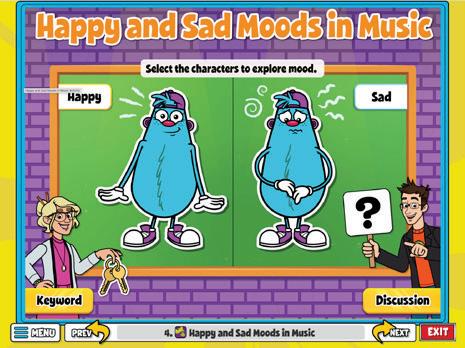
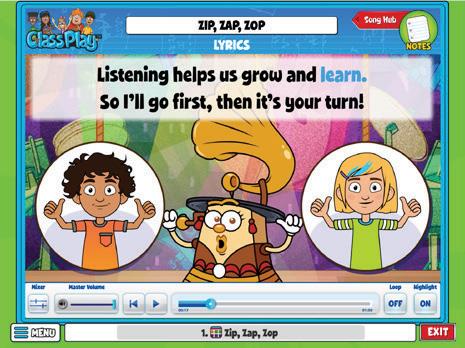
RESOURCES




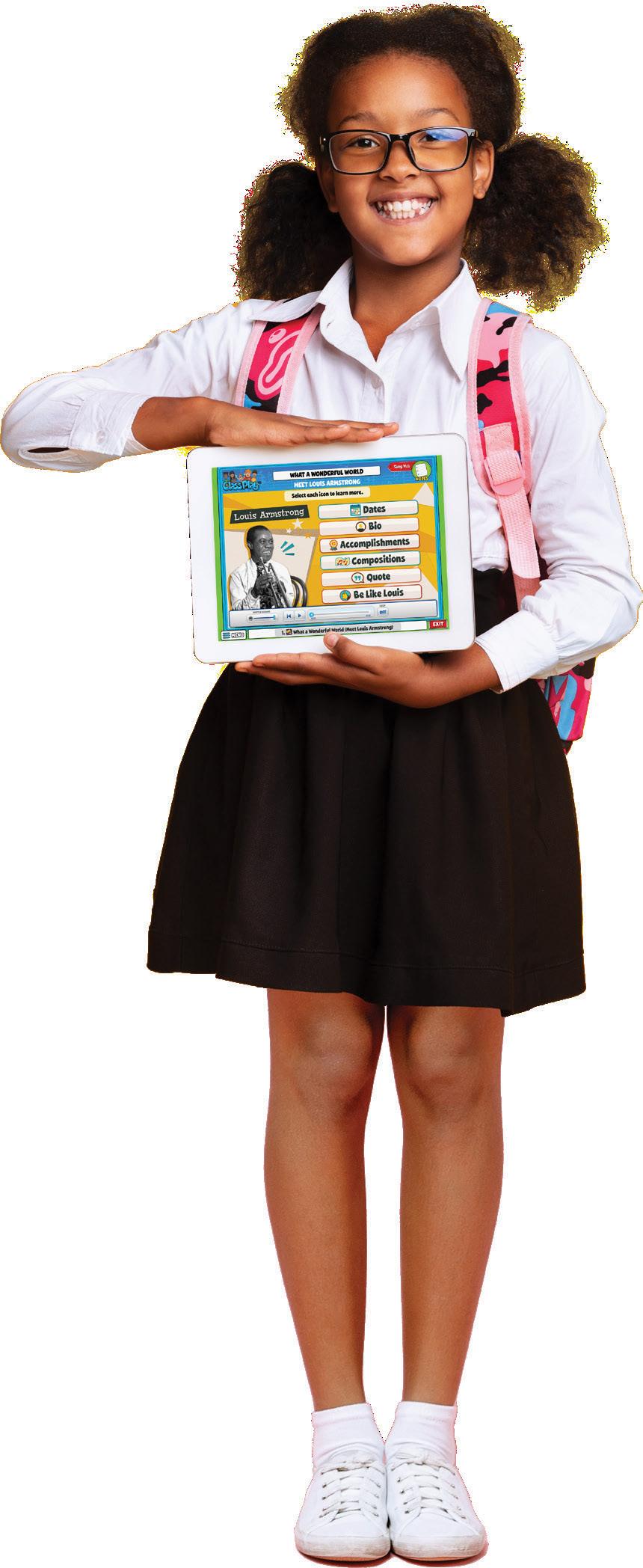

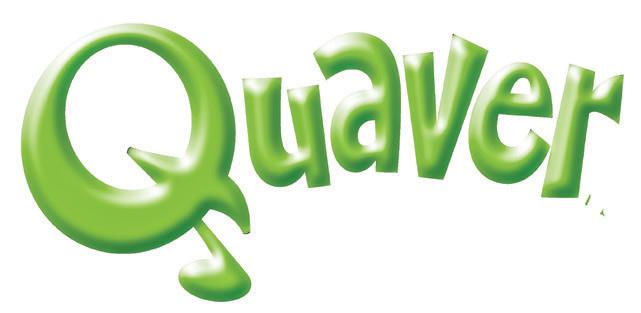
Bailey, J. (2016). Sing & strum ukulele. SingToKids. https:// www.teacherspayteachers.com/
Beloff, L. & Beloff, J. (Eds.). (2010). The daily ukulele: 365 songs for better living. Hal Leonard.
Highland Square Ukulele. (2022, August 14). https:// jmgd35.wixsite.com/highlandsquareuke



Reese, J. (2022, August 28). DrJillReese. https://www.you tube.com/user/drjillreese
Tamberino, P. (2014). Uke can do it! Developing your school ukulele program. Rowman & Littlefield.
Tomich, S. (2015). Rainbow ukulele. Pitch Publications. https://www.teacherspayteachers.com/
Lisa Heinrich teaches general music in the Cloverleaf Local Schools in Seville, Ohio. She has completed various teacher education courses in Orff-Schulwerk, Music Learning Theory, and Eurhythmics. Lisa appeared on the Cleveland TV show, Live on Lakeside, to encourage view ers to learn to play ukulele. She is the 2019 Medina County Teacher of the Year and a doctoral student at Kent State University.
Get started now at QuaverEd.com/Preview QuaverMusic is always growing. We're proud to partner with teachers across the Buckeye State. Copyright © MMXXII, by QuaverEd, Inc. All rights reserved. NEW: • Songs • Lessons • Activities • Student Avatars • and More! OCTOBER/NOVEMBER 2022 49
Tips for Teaching Beginning Woodwinds
Jodi Smith, Nancy Moore, Shawn Reynolds FLUTE
BEGINNING TONE PRODUCTION/DAY 1
Holding head-joint (HJ) with RH, use the LH index to feel the natural indentation below bottom lip when lips are relaxed. This is where HJ will sit.
The lip plate of head joint goes BELOW bottom lip (not on bottom lip) in that indentation
Catch the inner edge of tone hole below the bottom lip and blow straight across with a lot of air. They should feel the edge of the hole where the bottom of lip meets skin This one is incredibly important! Students will roll the HJ in OR place it too high on the lip
If this placement is not secure, they will never be able to play low notes loudly and high notes
Think “MMMMM” syllable to keep lips straight, then “POOO” to create a small opening in center
Think of spitting a tiny piece of rice through the opening
Use a straw (not big McDonald’s or small coffee stirrer, but somewhere in between) and place between lips forming embouchure and blow through the straw. Don’t pucker lips.
DAY 2- ARTICULATION AND HAND POSITION
Review and reinforce head joint placement and tone production
“TOO TOO TOO TOO” syllable; make each sound touch and the airstream continuous Once articulation has been taught, play head joint songs.
“Mary Had a Little Lamb” - hold head joint with left hand below the lip plate so it doesn’t block airflow. Utilize RH index finger to insert in open end of head joint to lengthen and shorten the instrument changing the pitch. This also reinforces articulation.
Call and Response: close HJ end with right hand while still holding with left hand below lip plate. Alternate open and closed tones while tonguing each one. Teacher demonstrates 4 count quarter note pattern, rest 4 counts, students respond back.
Hand/finger placement: Use pieces of blue painters’ tape in the following spots ON THE FLUTE. (Students should be instructed to always ‘touch the tape’ at these points)
Should be on the back side of the tube directly under index finger under because it allows flute to roll in

50 TRIAD
o 2 small pieces on the LH first key and the 4th key where LH fingers DO NOT GO; We should be able to see those pieces of tape
• Use the Bb thumb key for every note that uses thumb key. Yes, the long Bb fingering is more stable and helps them hold the instrument, but it doesn’t do anything to help with C where there is no fingers to support the instru ment.
o When they learn B natural, then teach the other thumb key. There are scenarios for all 3 Bb fingerings on flute, just like clarinets using the appropriate pinky fingerings and oboes using the correct F.
• Assembly Tip: Teach students to push head joint in, then immediately pull back out about ¼ inch. Flute is made to be played in tune when head joint is slightly pulled out.
o It is perfectly fine to see un-plated metal at bottom of head joint when assembled
o Line up middle of tone hole of HJ with middle of C key.
o Line up the foot joint rod in the center of D key, at bottom of the body
• First note is 4th line D
o Why? Student uses 4 holding points:
o (1) Right hand thumb on tape (holds flute up and out)
o (2) LH thumb on Bb thumb key
o (3) LH 1st finger pushes the flute into chin o (4) RH Pinky (except for this D)
• Always bring flute to you. Do not move head to flute. o Find the edge of tone hole under bottom lip again o Don’t ever look at fingers
DAY 3 - REVIEW
• Whole note/whole rest on loop pattern. Tongue the beginning of each whole note.
• More HJ songs/call and response (about 15 minutes total of HJ only work)
• Review finger placement and hand position
• Helpful pointers for first notes, which are D and C in most method book
o Do lots of finger only work
o Place head joint on left shoulder to help hold. Then, move fingers simultaneously from D to C (I count 1-2-ready-change-GO back and forth). This is the only time they can see their fingers.
• Switch all fingers at the same time/slam them down/robot fingers and keep them close to the keys o Say note names while moving fingers in rhythm with book songs (I do this with EVERY song in the book the first month or so)
• Usually by the end of day 3 thumb Bb is introduced. Be sure to CHANGE the fingering in their books.
OTHER HELPFUL THINGS:
• Use a thin coffee straw to visualize air direction
o Range- I mentioned the thin coffee straw. Many people use Pneumo-Pro’s to help students visualize the air stream. These are amazing!
o Make flute face and place straw barely in aperture, held by lips.
o Blow through the straw.
o Make straw go higher by manipulating bottom jaw and bottom lip (move out).
o Make straw go conversely, lower. (This represents air direction needed for lower notes)
ß In this order: low straw, air into the flute, blow on your chin.
ß To achieve higher notes – air stream is up with more across the flute.
o Don’t try to go too fast. The other woodwinds can wait until the flutes conquer the first 3 notes with good hand position, articulation and tone production and not breathing between every single quarter note!
OCTOBER/NOVEMBER 2022 51
CLARINET

• Make sure students can get correct pitch on mouthpiece and barrel alone. This will ensure their embou chure has the correct pressure/fulcrum balance
• The vibration of the mouthpiece on the top teeth bothers many young students. Invest in mouthpiece patches. Full size saxophone mouthpiece patches can be cut in half to make them last longer.
• Don’t use stock mouthpieces. Instead choose: Premier by Hite or a Debut by Clark Fobes. This will fix many problems right away.
• Always use AT LEAST a size 2.5 reeds and the best brand of reeds they can afford.
• Bottom lip: Just a little pink if your lip covers the teeth correctly.
• Top teeth on the mouthpiece and have students close their lips around the mouthpiece
• Blow a laser beam of air
• Always have a mirror available
• Have students look at their instrument and talk about the size of the tone holes. As soon as they can play middle C, have them stand up and start covering the holes on the lower joint. Do this at least once a week, without associating note names. The kinesthetic experience alone is beneficial! Beginners can play a descending F scale in 10 weeks or less. Once you get to these notes in the book, students can already play them – they just start to learn the note names with fingering patterns they already know!
• As soon as they know low A and G, show them the register key. Again, kinesthetic experience alone with out note reading, will make a huge difference!
52 TRIAD
SAXOPHONE
• Reinforce correct embouchure by checking that students can achieve and maintain correct pitch on the mouthpiece and neck alone. This will help fix tone as well as intonation.

• Look at the mouthpiece/reed sideways: The point where the reed begins to separate away from the mouthpiece is a good gauge for where to place the bottom lip.
• Once the upper teeth are firmly on the mouth piece and the bottom lip is slightly over the bottom teeth, use the words “simply close your lips around the mouthpiece like you are tight ening the string on a comfy pair of sweat pants”. Evenly close lips around mouthpiece in an “oooohhhh” syllable.
• The vibration of the mouthpiece on the top teeth bothers many young students. Invest in mouthpiece patches. You can buy these in bulk, and they often fix many problems. Many students won’t put their teeth correctly anchored on top of the mouthpiece simply because the vibration feels awful for them.
• The center/side debate (holding the instrument) has been going on for many decades. Do what is best for the size of the student at the given time. Start students holding the instrument to the right side and then eventually move them to the center when they are tall enough. If stu dents don’t eventually move to the center, I have found that they will have tone issues in upper junior high and high school due to the incorrect angle of the mouthpiece.
• If the neck strap is the correct length, the mouthpiece should come directly to the mouth perfectly horizontal. Enforce that the neck strap is there for a reason and to utilize it for correct mouthpiece placement and angle.
OCTOBER/NOVEMBER 2022 53
OBOE
• There are companies that specialize in double reed items. Please consider buy ing hand-made reeds from these sites rather than mass-produced reeds from music stores.
• The correct pressure/fulcrum balance is essential for excellent tone, on the reed alone. Students should be able to achieve a 3rd space C or slightly below (B) on the reed alone. This indicates the correct embouchure.
• If a student cannot get this pitch
o The reed is too hard or too soft. Most often its too thick/too hard!
o Or, the bottom lip support and air speed is incorrect.
• The chin should be mostly flat and pointed downward with the bottom lip “cushioning the reed with a bit of pressure”. Do not allow students to play with a flat-lip (straight across) embouchure.
• Band books often start in Bb or Eb thus causing oboe players to be forced to learn Fork F and only fork F. Insist that they learn Regular F first, then Left F (if they have one) and lastly, fork F.
• On most student oboes, students should try to avoid using Fork F since it sounds stuffy and causes bad finger technique. Although, there will be unavoidable keys and combinations that students will need to use Fork F (Gb, Db) as they become more technically advanced.
• There are companies that specialize in double reed items. Please consider buy ing hand-made reeds from these sites rather than mass-produced reeds from music stores.
• When switching other instruments to double reeds, flute and saxophone play ers make the best switches because their embouchures are not too firm yet. In my experience, clarinet players do not make the best switchovers because their bottom lips are too stretched and flat for a correct oboe embouchure.
o Clarinets with a looser, less-focused bottom lip may make good oboe swi tchoevers.

54 TRIAD
BASSOON
• It is important that bassoon players learn to “crow” the reed alone cor rectly, in order to have the correct embouchure setup.
• Students should be able to crow the reed with little to no pressure from the lips and achieve a very rattly unfocused sound (unlike oboe).
• If the crow is high in pitch or does not have many different pitches, the students are either crowing with too much pressure from the lips OR the reed is too closed (usually).
• One of the most effective ways to teach beginning bassoons is to model for them by playing ‘call and response’ patterns.
o Example: Teacher: C D E. Student echo: C D E
Teacher: C D E F E D C Student Echo: C D E F E D. C
Teacher: C D E F E D C B D (Student echoes pattern)
Teacher: C B A B C
Teacher: C B A G A B C.
Student Echo: C B A B C
Student Echo: C B A G A B C
This allows the student to focus solely on finger patterns as well as basic ear-training.
• When looking for students to switch over to bassoon, look for someone with a flexible embouchure. I have often found that saxophone players who have an unfocused and loose embouchure make GREAT bassoon players! The air column needed is very similar. However, the fingering patterns of clarinets are very similar, so clarinets also make great swi tchovers for bassoon players.

• Don’t be afraid to learn the bassoon this way yourself! You are their best model. If there is no professional bassoonist in the area to teach lessons, you are the next best thing. Even if you don’t feel confident at teaching the bassoon, there is no better way to star then simply by jumping in headfirst and learning like your students will learn.
• While seat straps are commonly accepted as normal on bassoon, often full body harnesses are the best option for bassoon players because they allow the entire body to support the instrument rather than simply the leg. They also allow bassoon players to easily stand up and play when needed. Invest in full body harnesses for your bassoon players. By the way, there are separate ones for male and female students! Be sure to purchase the correct ones.
OCTOBER/NOVEMBER 2022 55
Uncharted Waters: Finding Your Orchestra Sea Legs
Dr. Lisa Martin

In my sixth year as a K12 music educator, I accepted a position that involved teaching equal parts middle school band and middle school orchestra. As a self-identified “band person,” it had been ‘more than a minute’ since I had any for mal instruction on string pedagogy, and my own string performance skills were less than stellar.
In most music teacher preparation programs, preservice teachers select an area of pedagogical focus. For example, one might specialize in band, orchestra, choir, or classroom general music. How ever, in the state of Ohio, approximately 80% of music teachers report teaching in at least one area of music that is outside their primary specialization (Butler, 2022), and this trend is evident else where, as well (Baker, 2010). In other words, regardless of specialization, it is quite possible that job responsibilities will include content out side one’s primary area of expertise. While this can initially feel like an intimidating situation, there are a range of ways one can meet such a challenge. The following article reflects strategies I found helpful when teaching middle school orchestra for the first time. Although my experi ence was centered on strings, many of these ideas are certainly transferrable to any situation where one finds themselves with a teaching assignment outside their main focus area.
OBSERVE MASTER TEACHERS
One of the more helpful strategies I employed was observing middle school orchestra teachers in my local area. The majority of these teachers were string specialists, so it was especially help ful to see how they approached tuning, bowholds, shifting, and additional string-specific content. Following these observations, I was able to ask questions about various teaching strategies, as well as about composers who wrote effectively for developing string musicians. It was through these conversations I discovered composers such as Soon Hee Newbold, Richard Meyer, and Doug Spata.
In order to facilitate such observations, con sider approaching your administration for release time – these observations are certainly profes sional development after all! In instances where release time is not possible, ask master teachers if they might be willing to record their rehearsal for you to observe outside of school hours.
Beyond observing master teachers, it can be helpful to invite an experienced string music educator into your classroom to observe your practice and provide you with feedback. Doing so can spark a meaningful discussion around opportuni ties for growth in your practice.
56 TRIAD
SCHOOL AND TEACHER DISCOUNTS
SIMPLE AND AFFORDABLE RENTALS
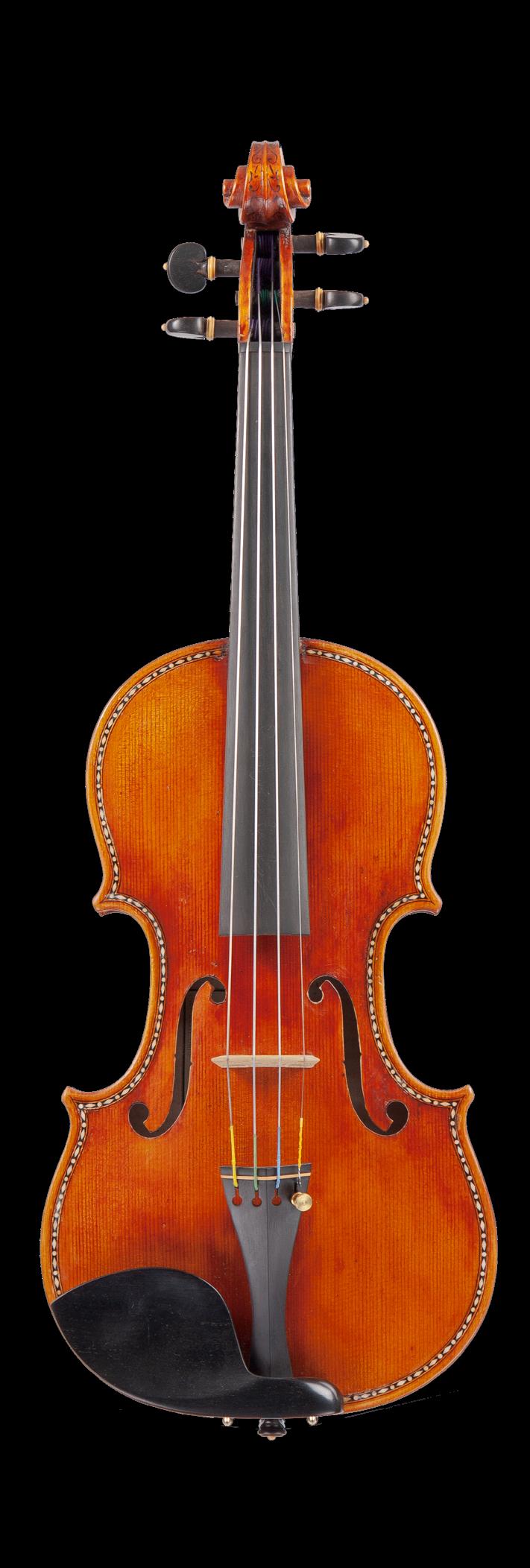
75 LEGENDARY EXPERIENCE TRUSTED QUALITY
We offer substantial discounts for school purchases as well as discounts on personal instruments for teachers. This is our way of thanking you for all you do for music education.
Rental programs should be easy to understand and provide exceptional value for students and parents. We rent high quality instruments at remarkably low prices and all of our rentals include maintenance, insurance and a starter kit at no additional cost. Baroque Violin Shop | 1038 W. North Bend Rd. Cincinnati, OH 45224 | 513-541-2000 OHIO’S PREMIER STRING INSTRUMENT RETAILER www.baroqueviolinshop.com/teacher
Worth noting, it can also be useful to seek out other music teachers who have found themselves in the same position as you. For example, I gleaned many useful tips from a choral specialist friend who had been assigned to teach several sections of middle school orchestra at a school down the road. Such teachers can be a tremen dous resource for learning practical strategies, as well as what not to do!
TAKE LESSONS
It is certainly easier to teach something that you know how to do yourself! As access to resources allows, consider taking private lessons on one or more string instruments. Should you teach in an area where these options are limited, explore opportunities over Zoom, or find a qual ity series of educative videos online that can help guide your development.
While modeling on a string instrument is a useful goal, it is important that any modeling you provide represents the quality you expect of your students. For me, although I took some les sons, a left wrist injury (and subsequent surgery) limited my ability to demonstrate effectively. As such, I often recruited student leaders in class to model musical lines. These leaders were also helpful as peer teachers throughout the school year.
SECTIONAL HELP
In addition to considering lessons for yourself, it can be especially beneficial for your stu dents to be connected with specialists on their instrument. If resources allow, invite guest teachers to your class to help with sectionals. These guest teachers could be amateur or profes sional performing musicians from the area, retired music teachers, or even teachers in training. For example, if a college or university music education program is nearby, it is possible that undergraduate music education students may be able to visit your classroom as a comple ment to their practicum requirements.
When inviting a guest teacher into your classroom, you can play along with your stu dents to improve your own skills on a given instrument. Alternatively, you can simply observe the guest teacher’s approach, while tak ing in some of their content expertise. These guest teachers can also provide helpful insights on bowing choices and other considerations in the classroom.
SEEK OUT OPPORTUNITIES
There is a wealth of opportunities to learn more about string performance and pedagogy. The American String Teachers Association (ASTA) website has a page dedicated exclu sively to teaching resources and assessment tools (Teaching resources, n.d.). ASTA also holds a national conference each year, with vari ous professional development sessions that can help supplement your skills and knowledge. Here in Ohio, the Ohio String Teachers Associa tion (OSTA) also offers options for professional development. This October, for example, there is a fall workshop at Upper Arlington High School, where participants will explore topics such as instrument repair and technology resources. Continue to add to your toolbox by seeking out professional development that addresses any gaps you feel you might have.
BE TRANSPARENT
Especially in my first year of teaching orchestra, I embraced transparency with my stu dents regarding where I had opportunities to learn as a string teacher. While it was not always easy to be vulnerable in this way, the students appreciated when I was clear about what I felt confident with and where I could grow in my knowledge and skills. Demonstrating this vul nerability also opened a safe space for students to feel secure in sharing their own strengths and opportunities for growth, shaping a more empa thetic classroom overall.
Ultimately, teaching strings helped me grow
58 TRIAD
as a music educator in so many ways. The chal lenge was initially intimidating, but the experience deepened my understanding of and appreciation for another essential area of our field. Through seeking out others’ expertise, exploring mentorship, and tackling professional development opportunities, educators can effec tively address the needs and musical develop ment of students in a range of content areas.
REFERENCES
Baker, W. R. (2010). A descriptive analysis of the academic training experiences and teaching responsibilities of high school music educa tors within the state of Florida [Unpublished doctoral dissertation]. Florida State University.




Butler. T. (2022). Ohio music teachers’ perceptions of undergraduate coursework [Unpublished Master’s thesis]. Bowling Green State Uni versity.
Teaching resources (n.d.). American String Teachers Association. Retrieved September 13, 2022.
Dr. Lisa Martin currently serves as Associate Professor of Music Education at Bowling Green State University, where she teaches undergraduate and graduate music education courses. Prior to her appointment at BGSU, she taught middle school band and orchestra in Illinois and Colorado. Her research interests include music teacher identity development, assessment practices in music education, and music in charter schools.
Play an instrument? Sing in a choir? AUDITION FOR SCHOLARSHIPS before march 31 CONTACT US TO LEARN MORE! Brianna Ferris 419-358-3254 ferrisb@bluffton.edu Visit www.bluffton.edu/music for application and requirements. Scholarships available for music majors and non-music majors, ranging from $1,000-$8,000, renewable for four years! OCTOBER/NOVEMBER 2022 59
What Have We Learned from E-Learning? (And Where Do We Go From Here?)
By Michelle Leasor
The past two years have given music educators quite a lot to process. What do you mean I have to put all of my lessons online? How do we rehearse online? How do I recruit students for my program without being able to meet them first? This online thing just… doesn’t work! Most of us experienced emergency remote teaching (ERT), beginning with school closures in March 2020, and most of us came back to the class room partially or fully during the 2020-2021 school year and beyond. Was all the effort worth it? The answer is a resounding YES!
Music classes - and fine arts classes in generalare difficult to replicate in a virtual environment. Music classes don’t translate very well unless teachers are in the room with students. Yes, there are great e-learning products available to us, but unlike in math or science classes, where students are learning similar topics across school districts, the content and curricu lum in music classes often varies both year-to-year and from teacher to teacher. Music teachers are also highly protective of their curated resources, with many of us determined to teach things our own way. Figuring out how to quickly recreate virtual lessons and activities was exhausting, and many of us also wondered if what we were doing was actually working.
THE 3 E’S: EFFICIENT, EFFECTIVE, ENGAGING

What many of us came to realize is that we can transform the way we teach and review musical con
cepts in a virtual environment. We can do this through keeping the 3 E’s in mind: Efficient, Effective, and Engaging. An understanding of how the 3 E’s work in both live and e-learning activities makes for a better experience for everyone.
E-learning activities should be efficient for both teachers and students, just like in a live classroom set ting. In a general music classroom, e-learning could be simple note name games or exploring various instru ment timbres. These e-learning activities extend the live classroom and provide additional practice. However, efficient e-learning doesn’t require multiple steps for logging in. It also doesn’t require students to jump through several login screens and passwords, frustrating students and making it less likely that they will com plete those activities. When choosing any e-learning, make sure that you know how to navigate everything from a student perspective and try making access to e-learning activities through one click or a link posted on your LMS or website.
The effectiveness of e-learning activities can be dif ficult to measure because teachers aren’t necessarily working with students in real time. One way to gauge effectiveness is to make sure that students can view their progress and results. For example, on a quiz about note names with a Google form, make sure that students can see their results, edit, and resubmit. If you use a vid eo-based tool like SmartMusic or FlipGrid for students to submit playing exercises, include a student self-as sessment so that they can evaluate themselves in addi
60 TRIAD
tion to the teacher evaluation. Additionally, don’t choose e-learning activities just for the sake of including e-learning. E-learning activities should always be tied directly to what you are teaching in class.
Adults don’t always need to be entertained while learning, but our students are part of a “video game gen eration.” If something doesn’t go well for them in a video game or it’s not fun, they stop playing. Younger learners will do that with online activities as well if those aren’t engaging. They are accustomed to seeing professional ‘YouTubers’ and well-designed websites. For instance, if we create instructional videos of our own, we need to keep in mind that things like good lighting, sound quality, camera angle, and formatting and looking somewhat professional. Likewise, when choosing or designing e-learning activities, we need to look at all digital learning through a student’s viewpoint and ask ourselves if it is truly entertaining or engaging. I think some digital content is never tested with real learners - or tested enough, and I’ve heard complaints from my own children about certain websites or activi ties being boring. Taking a few minutes to reflect on how students would react to any e-learning activities will help encourage students to complete them, and even better, testing e-learning with your own children or your colleagues’ children is a great way to find out if your e-learning is engaging.
TAKEAWAYS FROM E-LEARNING EXPERIENCES
Not everyone has the skills, time, motivation, or patience to totally transform all of their teaching content to a digital format, and putting everything online isn’t necessary. There are still many positive takeaways from our experiences with e-learning:
• We are better at distinguishing between what pro grams and websites are beneficial and which ones to avoid for our own teaching situations.
• We have a better understanding of digital tools that can streamline our programs and classes, enhancing communication and providing online resources for students.
• We are better at asking for assistance and sharing lessons and resources with peers, even with those who we only know via social media groups.
• We have better camaraderie with other educators due to our shared experiences with e-learning.
• We are better with adapting our activities to individ ual learners’ needs - some students need additional intervention while others could use enrichment activities.
• We are better with planning our lessons and have developed strategies to continue the teaching and learning with students who are absent from class.
WHERE DO WE GO FROM HERE?
All was not lost when we transitioned overnight to emergency remote learning. We’ve learned about our capabilities with digital content, and we’ve learned what works with our students. Will we ever need to com pletely go back to remote learning? No one knows, but now that we have some experience with e-learning, we are better prepared for various future teaching situations and environments. Keep the 3 E’s - Efficient, Effective, Engaging - in mind when choosing any e-learning activ ities for your students, and be sure to continue reaching out to other music educators for strategies and encour agement.
Michelle Leasor is a passionate music educator who has vast experience creating technology-rich and stu dent-centered engaging experiences for both students and other educators. Michelle is currently a general music specialist in Pickerington Local Schools and has served in this role for six years. Prior to teaching in Pickerington, she was a high school band and orchestra director in Columbus City Schools, Dayton Public Schools, and Xenia Community Schools for 16 years, and in those roles she also taught Advanced Placement music theory, class piano, and music appreciation courses. Michelle is an active clinician at the Ohio Music Education Association and Technology In Music Education annual professional development conferences and serves as a marching band adjudicator with OMEA. Michelle has earned bachelor’s and master’s degrees from Ohio University and University of Phoenix and is currently a doctoral candidate at Northcentral Univer sity. She has conducted research into the experiences of music educators during hybrid and remote learning, and she specializes in adapting digital content and delivery to a variety of students’ and educators’ needs. Michelle resides in Pickerington with her family.
OCTOBER/NOVEMBER 2022 61
DOUG O’NEAL, PRESIDENT
When the “official” end of summer was a cold and rainy Labor Day weekend, I thought back to how great the summer season actually was! In addition to being able to freely travel, we were able to gather again as col leagues for the OCDA Summer Conference. It was exciting to hear from Elaine Hagenberg, Jason Max Fer dinand and Lisa Wong as they provided insight and inspiration as well as to be with our colleagues again in person.
There are some changes coming for the 2023 OCDA conference! We are excited to announce that the confer ence will be held this summer at Capital University. The facility will offer incredible opportunities for us to expand the schedule with the flexible use of Mees Hall, Huntington Recital Hall, Trinity Lutheran Seminary and classrooms. A big thank you to Lynda Hasseler and Tom Zugger for welcoming us to the Conservatory.

While many events surrounding the conference are still in the works, we are excited to announce three of our headliners: Joe Miller, Stacey Gibbs and Jessica Nápoles as we “Tune Your Toolbox”.
A former middle school educator, Jessica Nápoles is Professor of Choral Music Education at the University of North Texas. In addition to conducting the Concert Choir, she mentors graduate students and teaches under graduate coursework in choral methods. An assistant chair for the 2019 Kansas City ACDA Conference, Dr. Nápoles is “fabulous” to quote colleagues.
Now the Director of Choral Activities at the Univer sity of Cincinnati Conservatory of Music, Joe Miller has impressed the choral community for years through his work at Westminster Choir College. Joe also impressed Ohio in the past through his work as the 2013 Ohio AllState Choir Conductor.

Conductor and composer Stacey Gibbs will bring his exciting compositions and insight into performing
spirituals as he joins us once again in Ohio. Known for bringing new excitement without sacrificing authenticity, he earned quite the acclaim from his last appearance at the OCDA Summer Conference.
However, let’s not jump to Summer 2023 too quickly! There is so much going on in Ohio this coming season! Allyson Bates will be working to bring back the Treble Choir Festival (formerly Elementary Choral Fes tival), there will be reading sessions and OCDA spon sored clinicians at the 2023 OMEA Conference, and other professional development webinars offered through our YouTube channel. Our OCDA website con tinues to be a great resource for the Ohio choral profes sional. Everything from former repertoire lists, archived news articles, jobs bulletin and the ability to notify about milestones or nominate a colleague for the Distinguished Service Award can be found at Ohiocda.org.
Probably the most exciting news is that the 2023 ACDA National Conference will be in Cincinnati from February 22-25, 2023. The conference planning committee has some new and exciting offerings planned and we know the performances will be outstanding!
It is an exciting year to be a choral musician in Ohio! We hope to see you at an OCDA event at OMEA, the ACDA National Conference or our 2023 Summer Conference at Capital University.
Doug O’Neal serves as Director of Choirs at Olentangy Liberty High School where he conducts four concert and two ACAPOP choirs. A former music minister and con ductor of Illuminati from the Columbus Gay Men’s Chorus, Doug also enjoys performing musical theater. He has degrees from Bowling Green State University and Univer sity of Dayton and has served as Co-Chair of the OMEA All-State Choir.
62 TRIAD
B R E A K Y O U R S O U N D B A R R I E R
I F F I N U N I V E R S I T Y
Students pursuing all majors are eligible for substantial music scholarships

Students can work on original music
popular styles like rock, jazz, R&B, hip hop, gospel and more. All students focus on
of these principal performance areas: voice, piano, bass, guitar, drums, beat making or songwriting.

Scholarships are available for all arts participants, regardless of major. For info visit tiffin.edu/arts/scholarships or email arts@tiffin.edu.

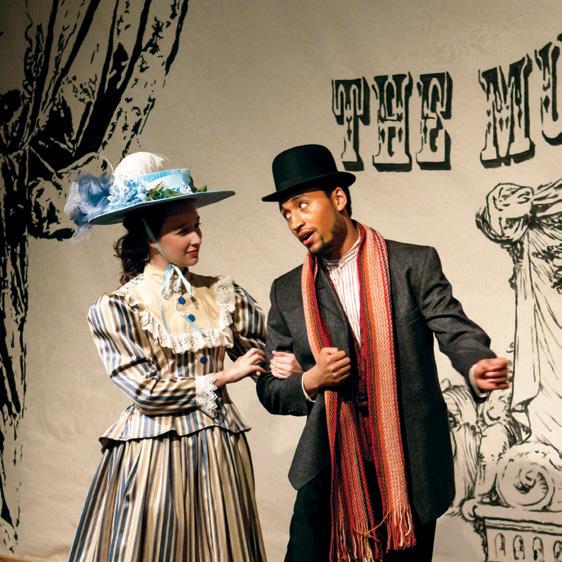
To schedule a scholarship audition,
www.wittenberg.edu/music/audition.

more information about our music programs and scholarships,
Dr. Daniel Kazez, dkazez@wittenberg.edu,
of Music and Music Audition Coordinator,
ext.
Dec. 9, 2022 Jan. 16, 27, Feb. 11, 20, 25, 2023
visit
For
contact
Professor
tel. 937-327-7354 (or 800-677-7558,
7354) 2022-2023 Audition Days WIT-MUS-017-Music_Triad_2022_v2.indd 1 8/5/22 12:31 PM A T T
TU prepares students for the diversity of opportunities in today’s ever changing professional music industry through a variety of practical coursework in performance, music technology, music entrepreneurship, a required internship and experience working in TU’s state of the art professional recording studio Tiffin University offers cutting-edge degrees in Commercial Music
or in diverse
one
OCTOBER/NOVEMBER 2022 63



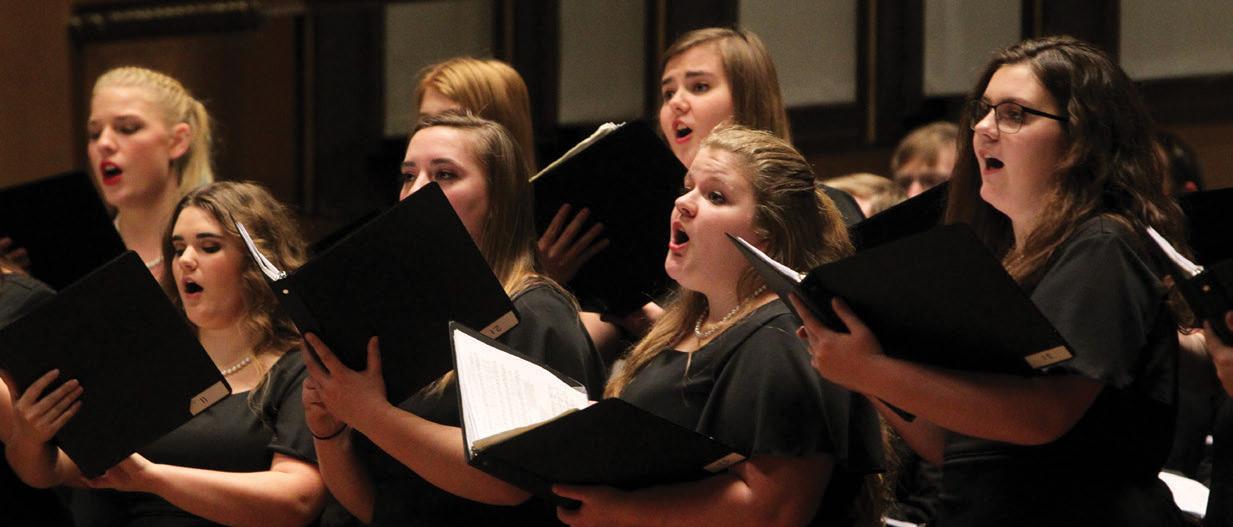

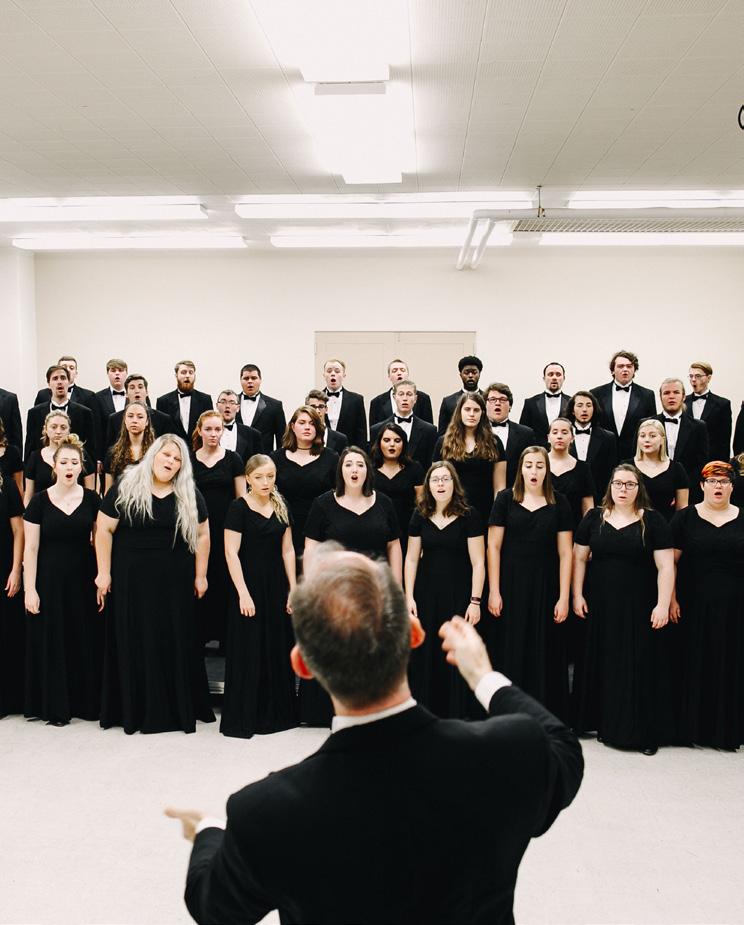



MUSIC AT MUSKINGUM AUDITION DAYS Saturday, January 14, 2023 Monday, February 20, 2023 74 0-8 26 - 80 9 5 | MUS I C@ MUSKIN G UM.EDU | MUSK I NGUM.ED U/MU S I C Heidelberg University School of Music & Theatre | Tiffin, Ohio | 419.448.2073 | www.heidelberg.edu/visit Music & Theatre Open House November 11, 2022 | Brenneman Music Hall Craft your future with ensembles, productions and majors with a track record of success. Build Your PASSIONS 64 TRIAD
LESLIE SCHULTZ, OHIO CHAPTER PRESIDENT
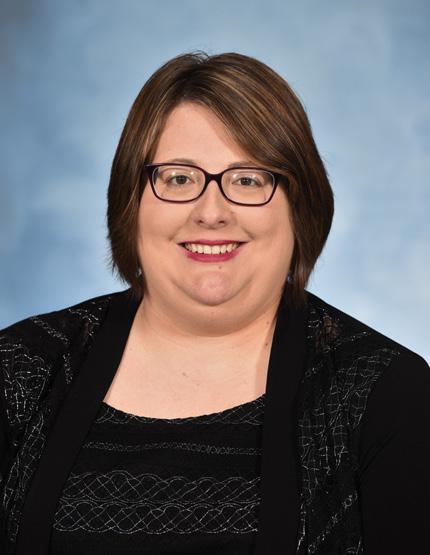
What is TI:ME?
Maybe you have been at OMEA convention and seen the table. Maybe you have come to a few sessions under the TI:ME banner. Maybe you have no idea what TI:ME is. Well let’s clear up some of the confusion, TI:ME is a group of Music Educators that use technology in their classrooms. That statement pretty much applies to all music teachers these days. The whole point of the organization is to help music educa tors around the world integrate technology into their classroom lessons. TI:ME sponsors sessions around the country every year at music education professional development conferences such as OMEA, TMEA, NYSSMA, NAMM and others.
We exist to help you find and use the resources to transform your classrooms with technology, whether that is having your students work through uploading playing tests through Google Classroom or other learning manage ment systems or in getting yourself organized by using digital tools, like digital scores. We are here to support you in whatever way we can.
At our website www.ti-me.org there are countless resources available for all grade levels and disciplines of music from elementary through college. I want to personally invite you to get involved in our regional chapter of TI:ME, we hold meetings at least once a quarter via zoom. If you are interested in seeing what we are all about don’t hesitate to contact me to attend a meeting at lschultz@vikingmail.org.

At OMEA this coming February we have a wide variety of sessions that can help you use technology in your everyday teaching practice, whether it is sessions on Google, to Audio and Recording Tips, to using Smart Music more effectively there is something for everyone in the sessions that are planned for OMEA 2023. Stop by the TI:ME table and meet both national and regional leaders of TI:ME. We have a wide slate of presenters from around the country com ing to Columbus to share their expertise. Hope you can join us in 2023 in Columbus for a great conference!
Lesley Schultz currently teaches Secondary Gen eral Music and Orchestra at Princeton City Schools (Cincinnati, OH). She earned her Bache lors of Music Education from West Virginia Uni versity and her Masters of Music Education from Ohio University. Lesley is a Level 2 Google Cer tified Educator. Lesley keeps an active perform ing schedule around the state of Ohio, performing with several regional symphonies on viola. She is a member of TI:ME (Technology In Music Educa tion) and serves as the Ohio Chapter President and on the National Conference Committee. Les ley is a columnist for SBO Magazine. In her copi ous amounts of spare time, she enjoys knitting, watching West Virginia Mountaineer sports and spending time with her family and making Tik Toks about her cats.
OCTOBER/NOVEMBER 2022 65


HIGHER EDUCATION NEWS

CASE WESTERN RESERVE UNIVERSITY
Dr. Matthew Garrett, Director of the University Center for Innovation in Teaching and Education (UCITE) and Coordinator of Undergraduate Studies in Music Education was recently promoted to the rank of Professor of Music Education at Case Western Reserve University.
Dr. Lisa Huisman Koops, Area Head, Coordinator of Graduate Studies, and Professor of Music Education, launched Parenting Musically, a podcast supported by the GRAMMY Museum and an ACES+ grant from CWRU (https://anchor.fm/parentingmusically). The podcast features interviews with well-known musicians and their parents paired with interviews with music education research ers. Koops also co-authored two articles and a book chapter with collaborators from CWRU and beyond: “’A piece of normal life when everything else is changed’: Remote early childhood music classes and toddler socialization,” Early Childhood Education Jour nal; “Documenting ‘The Early Childhood Music Collaborative’: A multi-organizational response to early childhood music in the time of COVID-19,” International Journal of Music in Early Childhood; and “Music programs for young children during the COVID-19 pandemic: Stories from across the world,” in The Impact of COVID-19 on Early Childhood Education and Care (Springer).
Congratulations to Dr. Adrienne (Ageh) Bedell (CWRU PhD ’22) who defended her dissertation, A Case Study of Mentors’ Expe riences Integrating Trauma-Informed Musical Engagement in Hos pital-Based Violence Intervention Programming.
Congratulations to Dr. Jason Falkofsky (CWRU PhD ’22) who defended his dissertation, An Exploration of Collegiate Glee Club Participation and the Identities of Male Novice Choral Singers.
CWRU Music Education hosted Dr. Colleen Conway, Professor of Music Education at the University of Michigan School of Music, Theatre & Dance for a residency in April, 2022. Dr. Conway led an undergraduate seminar in “Uncovering the Hidden Curriculum in Music” and a graduate seminar entitled “From Wonderment to Publication.” She presented “Teaching Music in Higher Education: Understanding the Learners” for the Music Department Colloquium.
OCTOBER/NOVEMBER 2022 67
COLLEGE OF WOOSTER
The College of Wooster is delighted to welcome two new faculty members in Music Education. Dr. Jeffrey Gershman is our new Director of Bands, directing Wooster’s Symphonic Band and Concert/Community Band, overseeing the Scot Marching Band, and teaching courses in conducting and instrumental music education. Prior to coming to Wooster, Dr. Gershman was on the faculties of Capital University, the Indiana University Jacobs School of Music, and Texas A&M UniversityCommerce. Daniel Singer is a Visiting Instructor, teach ing coursework in music theory, choral conducting, and choral music education. In addition, he directs Wooster’s newest choral offering – The Harmony Project, a col lege/community ensemble designed to build connections, foster healing, and inspire social change. In addition to his responsibilities at Wooster, Mr. Singer is the Assistant Director of Choruses for The Cleveland Orchestra and Director of the Cleveland Orchestra Youth Chorus. Dr. Gershman can be reached at Jgershman@wooster.edu, and Mr. Singer can be reached at Dsinger@wooster.edu
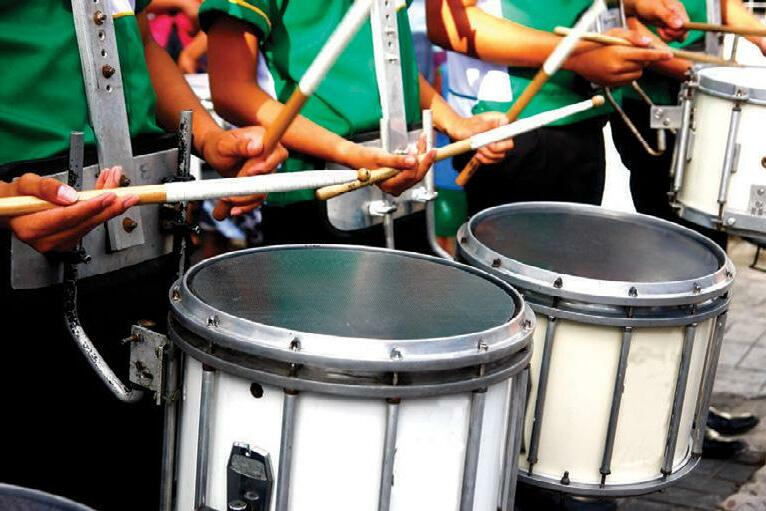



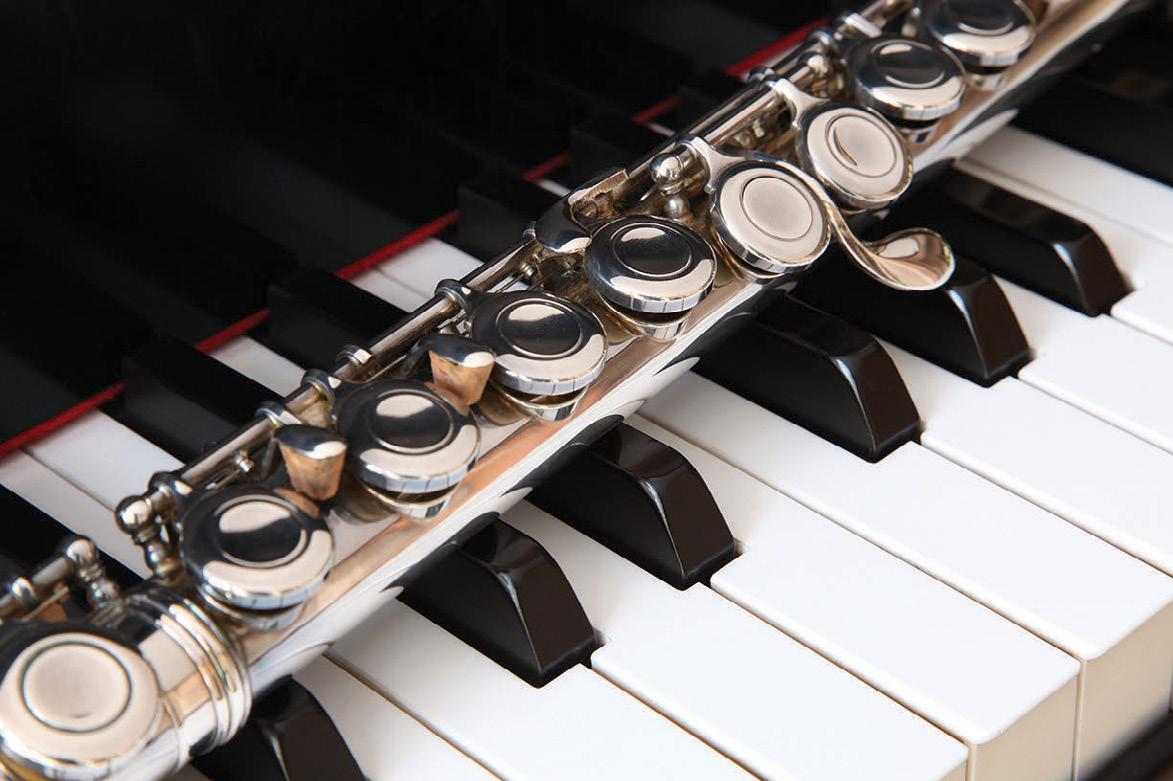
COLUMBUS STATE COMMUNITY COLLEGE
Columbus State Concert Band, under the direction of Thomas Lloyd, performed their Spring Concert on April 26th. Continuing the band’s study of African American composers of the early twentieth century, the program included two pieces newly arranged by Thomas Lloyd: “Clef Club March” composed in 1910 by James Reese Europe and “The Call of the Woods” by William H. Tyers from 1916. The band performed the premiere of the wind band version of “St. Denio Variations” by John Lloyd. Other music included “And the Night watchers Awake (2017) by Carrie Magin, “As the Moon Whispers” (2010) by Benjamin Yeo “Trailer Music (2014) by Alexander Reuber “April” (2008) by Aaron Perrine and “Our Cast Aways” (2018) by Julie Giroux, the latter featured projected images of adopted and res cued pets. Two classic band pieces were also performed: “The Two Minute Symphony” (1988) by Bob Margolis and “Prospect” (1983) by Pierre La Plante.
Since
2011 usic Store
Ohio’s
only
Music • Rentals • Lessons • Repairs • Kindermusik • Accessories Competitive School Bids • Music Therapy • Pro Instruments 10167 Royalton Rd. North Royalton, OH 44133 (440) 237-9400 www.royaltonmusic.com 68 TRIAD
KENT STATE UNIVERSITY
The Hugh A. Glauser School of Music is pleased to welcome Dr. Benjamin Lorenzo as our new Director of Bands and Associate Professor of Music. Dr. Lorenzo joins the faculty most recently from the University of Arkansas and has high school teaching experience from Florida and Texas. He holds the DMA degree in Wind Conducting from the University of Texas. He is an accomplished arranger and author, and he is committed to amplifying diverse voices in music education. Dr. Lorenzo looks forward to meeting Ohio’s music teachers at upcoming KSU bands events and in your classrooms.
Dr. Craig Resta held a guest residency at Towson University in February during which he delivered six lectures addressing topics of advocacy, philosophy, his tory, psychology, sociology, social justice, and string pedagogy. Dr. Resta also gave four presentations at the International Society for Music Education conference in Brisbane, Australia in July.
Dr. Butch Marshall is currently serving as president of the Gordon Institute for Music Learning, guiding an ever-expanding international organization of musicians, teachers, and researchers, providing online content, in-person professional development, and a biannual
WE
DEGREES OFFERED
•Bachelor of Music Education
•Bachelor of Music in Performance
•Bachelor of Arts Concentrations in General Studies, Theory and Composition, History and Literature
Contact: Christina Pelletier 614.823.1508 pelletier1@otterbein.edu

otterbein.edu/music
Otterbein is an accredited member of

National Association of Schools of Music
in-service conference. GIML’s next conference will be August 1-3, 2023, in Chicago.
With in-person teaching in the air for fall, Dr. Mar shall enjoyed meeting P-6 teachers in the Stow-Monroe Falls schools as well as the Tri-County schools (Ashland, Holmes, Wayne), as they engaged in back-to-school pro fessional development.
Dr. Jay Dorfman co-authored a chapter on teaching with technology in music and art with KSU Art Educa tion Professor Robin Vande Zande in the book Integrat ing Educational Technology into Teaching (9th edition).
In June, Kent State hosted three levels of Orff Schul werk teacher education. This year’s courses featured a new partnership with Cleveland Metropolitan School District, with CMSD supporting a dozen of their general music teachers in completing advanced study at Kent State.
Kent State will hold the Wind Band Conducting Symposium on November 4th and 5th with special guest Scott Steeple from the University of Wisconsin. All-Star Band, our annual high school honor band, will be Janu ary 13-14, 2023. Please visit https://www.kent.edu/ music/clinics-workshops-masterclasses for more infor mation about our on-campus events and workshops.

the
(NASM)
ARE building your future...one note at a time. 2022 - 2023 Audition Dates Sat., Dec. 10 | Sat., Jan. 14 Tue., Feb. 21 | Sat., Feb. 25 (Virtual) Sat., March 18 OCTOBER/NOVEMBER 2022 69
think in sound
MIAMI UNIVERSITY
The Department of Music at Miami University is pleased to announce two recent tenure-track appoint ments in the area of Music Education.
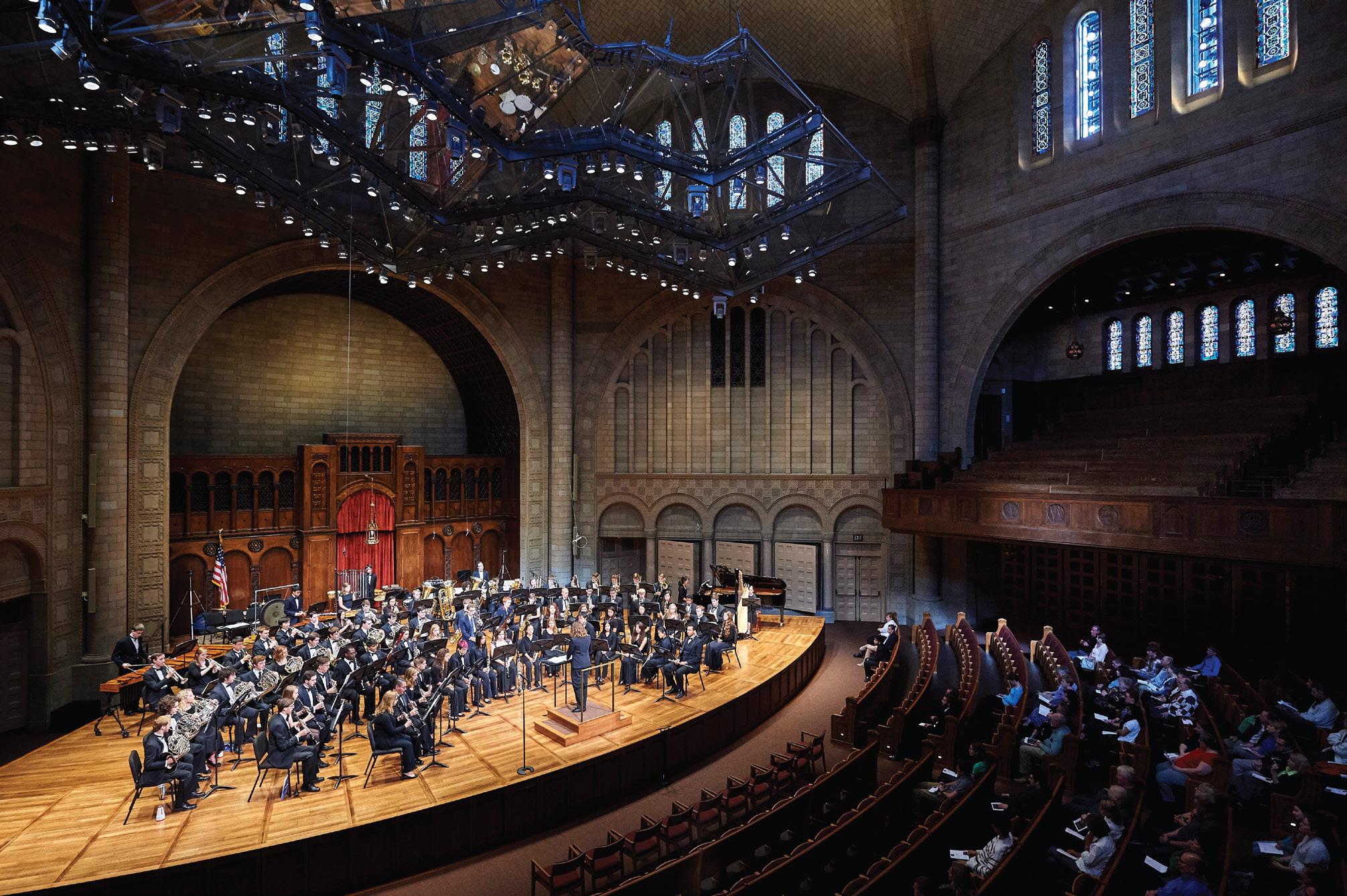
Dr. Elizabeth Reed joined the faculty in Fall 2021. She received her Ph.D. in Music Education at the Uni versity of South Carolina. Since 2018, Dr. Reed has been the Executive Director of the National String Proj ect Consortium. Dr. Reed has taught beginning to advanced levels of orchestra to students in Fairfax County Public Schools and Lexington-Richland School District Five.
Dr. Reed has guest conducted for the South Carolina Junior All-State Orchestra, Fairfax, Loudon, and Prince William County District Honor Orchestras in Virginia, MMEA Eastern District in Massachusetts, and the GMEA Middle School Honors Orchestra in Georgia. As a researcher and clinician, she focuses on professional music teacher identity, culturally responsive teaching, the String Projects, and pitch perception. Dr. Reed has published in the American String Teacher and Teaching
Undergraduate Programs
BS in Music Education
BA in Music
Double Major
Dual Degree (e.g., with Engineering BS)
Minor in Music
Graduate Programs
MA in Music Education with Licensure (MAL)
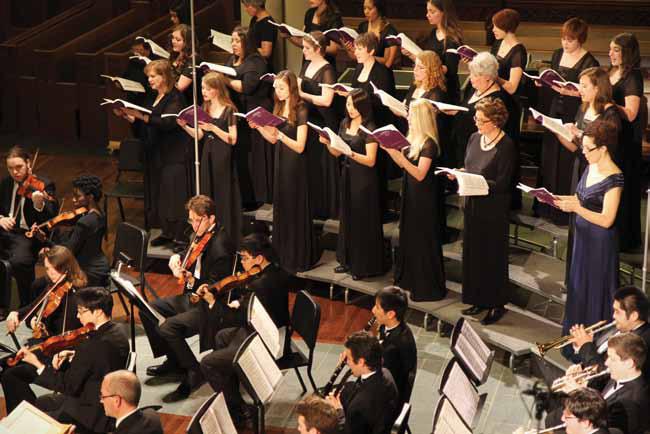
MA in Music Education
PhD in Music Education
PhD in Musicology
MA in Historical Performance Practice (HPP)
PhD in Musicology with HPP Concentration
DMA in HPP
Music Through Performance in Orchestra, Volume 4. Additionally, she has presented clinics and research poster sessions at a number of national and international professional conferences.
Dr. Robin S. Heinsen joined join the faculty effec tive Fall 2022. She earned her Ph.D. in Music and Human Learning from The University of Texas at Aus tin, and her B.M and M.M. in Music Education from the University of Georgia. Dr. Heinsen previously taught middle school band for eight years in Gwinnett County, Georgia, where she served as the middle school band chair for GMEA District 13, receiving three National Band Association Citations of Excellence.
Dr. Heinsen’s research interests include cognition of expert and novice teachers, preservice teacher skill development, learner-centered pedagogy, and lifelong music learning. She uses eye tracking technology to study attention allocation and momentary thought pro cesses of music teachers and shares her work consis tently at national and international music conferences and in research journals.
music.case.edu p 216.368.2400
70 TRIAD
OHIO UNIVERSITY
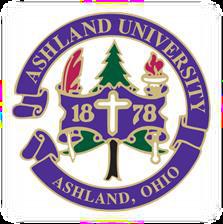
Ohio University School of Music is excited to be back on stage and in the classroom with our students and faculty, and looking forward to making music with our community in the region and beyond.
We invite you to submit your creative and research projects to the 3rd Global Arts Conference and Festival planned for April 13-15, 2023 at the Baker University Center at Ohio University in Athens, OH. This threeday event will feature an international arts conference alongside free and public performances and other events under an umbrella theme of “Global Arts in the Digital Age.” Those interested in submitting to the conference are encouraged to explore the full scope and list of categories and topics, as well as the detailed submission instructions found at www.ohio.edu/finearts/global-arts-festival or contact professor of Music Education, Paschal Yao Younge at youngep@ohio. edu or (740) 236-0521 with your questions.

Our long time adjunct instructor, Music Therapist Jessica Fletcher, has moved into a new full time fac
ulty position, now Assistant Professor of Instruction in the Music Therapy program. Fletcher has served the regional community as a music therapist for ten years with Central Ohio Music Therapy.
We want to celebrate our new adjunct faculty Jus tin T. Swain, Adjunct Professor of Classical/Musical Theatre Voice & Lyric Diction, a Columbus native, who you may know through his work as teaching artist with Opera Columbus, with the Harmony Project Columbus, the New Albany Symphony Orchestra, Opera Project Columbus, or on tour with projects at BalletMet and the Columbus Symphony Orchestra. We also welcome Jiao Sun, Adjunct Professor of Piano and Collaborative Artist in Residence at the School of Music in 2021. A Silver medal winner at the 2021 Washington International Piano Competition, Jiao Sun was born in Harbin, China and grew up in Beijing. Finally, we are overjoyed to add new collaborative pia nists Sooyeon Baik and Richard Blumenthal to our community, solidifying our Student Accompanying Program.

WWW.ASHLAND.EDU/MUSIC o:419.289.5100 e:music@ashland.edu Scholarships available to music majors, minors, and ensemble participants! OCTOBER/NOVEMBER 2022 71
Our very own Alison Sincoff’s flute ensemble PAN demonum4, a super group of four Ohio-based teach er-performers, will perform at this year’s OMEA conference in Columbus, in celebration of the newly established Ohio Young Composers Initiative!
Take a look at the growing list of high school music engagements we offer all year round at Ohio University, featuring instrument specific intensives, music ensemble festivals, and summer music academy opportunities online at www.ohio.edu/fine-arts/music/high-school.
THE OHIO STATE UNIVERSITY
We are pleased to welcome new School of Music Director, Michael G. Ibrahim. A multifaceted per former, Ibrahim is an administrator deeply committed to creative expression and inclusive musical excellence. Previously he served as Director of the School of Music at West Virginia University. Originally from Vancouver, Canada, Ibrahim studied at the University of Regina, the Université Européenne de Saxophone (France), and earned his Bachelor of Music degree with distinction from the University of Calgary, a Master of Music degree from Bowling Green State University, and his Doctor of Musical Arts from the Manhattan School of Music. Prior to his appointment at West Virginia Uni versity, he taught at Columbia University, the University of Calgary, and at Mount Royal University.
The Timashev Family Music Building is officially open as part of the new Arts District on the Ohio State University campus. The four-story addition to Weigel Hall features a new 250-seat recital hall, a large state-ofthe-art ensemble rehearsal room, a jazz suite, several high-tech classrooms, 36 additional practice rooms and a dedicated research lab. Completion of the new build ing for the Department of Theatre, Film and Media Arts next door is nearing completion and will open in July 2023.
THE UNIVERSITY OF AKRON
The University of Akron School of Music welcomes Dr. Gretchen Pohlman-Bassett as Visiting Assistant Profes sor of Music and Assistant Director of Bands. Prior to her appointment at UA, Dr. Pohlman-Bassett was Director of Bands and Assistant Professor of Music at West Liber ty University and taught public education in the state of Missouri. She was All-State Band French Horn adjudica tor and a District Music Festival adjudicator for the Mis souri Bandmasters Association and the Missouri State High School Activities Association. She is a member of
the Collegiate Band Directors National Association, the Ohio Music Educators Association, the National Associ ation for Music Educators, Mu Phi Epsilon, Kappa Kap pa Psi, Pi Kappa Lambda, and is an Honorary member of Tau Beta Sigma.
Jacob Young joins UA as Visiting Assistant Profes sor in Music Education. As a choral music educator in Ohio and Kentucky for the past 11 years, Young was most recently the Vocal Music Director at the School for Creative and Performing Arts in Cincinnati, OH where he directed 4th-12th grade choirs, the Jr. Music Theater Company, and the school’s flagship ensemble, the Baby Grands. He is a member of the National Association for Music Education, the Ohio Music Education Associa tion, and the American Choral Directors Association.
After serving as adjunct lecturer, Christopher Coles (MM 2019) joins the UA family full time as Assistant Professor of Practice in Jazz. Featured in Cleveland Magazine as one of 2021’s “Most Interesting People,” Coles plays saxophone with the Cleveland Jazz Orches tra, records and produces original compositions, and is an active collaborator with Jazz musicians throughout Northeast Ohio.
Theron Brown joins the School of Music as Assis tant Professor of Practice in jazz piano, after receiving both his Bachelor and Master of Music at UA’s School of Music. In addition to producing his own recordings and commissioned works, Brown has performed with the Cleveland Orchestra, Akron Symphony, Cleveland Jazz Orchestra, Pittsburgh Symphony Orchestra, and the Glenn Miller Orchestra.
Also joining the School of Music this Fall are parttime instructors Jenny Robinson, flute, Carol Ross, violin/viola, Dr. Lauren Rudzinskas, trombone, and Nora Willauer, cello.
WRIGHT STATE UNIVERSITY
WSU has welcomed two new full-time music fac ulty members this fall. Stephen Wadsack joins the fac ulty as professor of trumpet and jazz studies. Dr. Nathan Nagir comes to us from UT Austin to serve as our new Director of Choral Studies following the retirement of Dr. Hank Dahlman. As always, new faculty bring new ideas and each of these new colleagues has started implementing new initiatives and festivals within the WSU School of Music.
The Wright State Fall Strings Festival was held on Oct 6-8 this year. This is the third year of the event and it brought high school students from throughout South
72 TRIAD
PERSONALIZING LEARNING
Real World Experience
You Are Not Just a Number
Scholarships Available

CONTACT US
western Ohio to work with WSU faculty and guest con ductor Ann Smith. Smith, an alumna of WSU, received the Outstanding Alumni Award in 2020 and is currently the vice president of the orchestra division for TMEA and teaches orchestra at East Plano, HS in Texas.
The Wright State Choral Festival will take place on Oct 27-28. Area high school vocalists will be coming to campus to work with WSU choral conductors Nathan Nagir, Ginger Minneman, and Jim Tipps in both full choir and in teble choir and bass choir settings. In addi tion, students will be working with WSU vocal faculty and musical theater faculty. For more information, visit the website at: https://liberal-arts.wright.edu/fine-andperforming-arts/wright-state-choral-festival
The festival will include a day of professional devel opment for area choral teachers.
The Wright State Honor Band Festival will begin accepting director nominations in November for the 2023 Honor Band Festival. This year the guest conduc tors include Alfred Watkins, and WSU alumni Heather Marsh-Myers and Matt Spradlin. The Festival include honor bands for high school and middle school students. https://liberal-arts.wright.edu/fine-and-performing-arts/ honor-band-middle-and-high-school
The Honor Band Festival will take place February
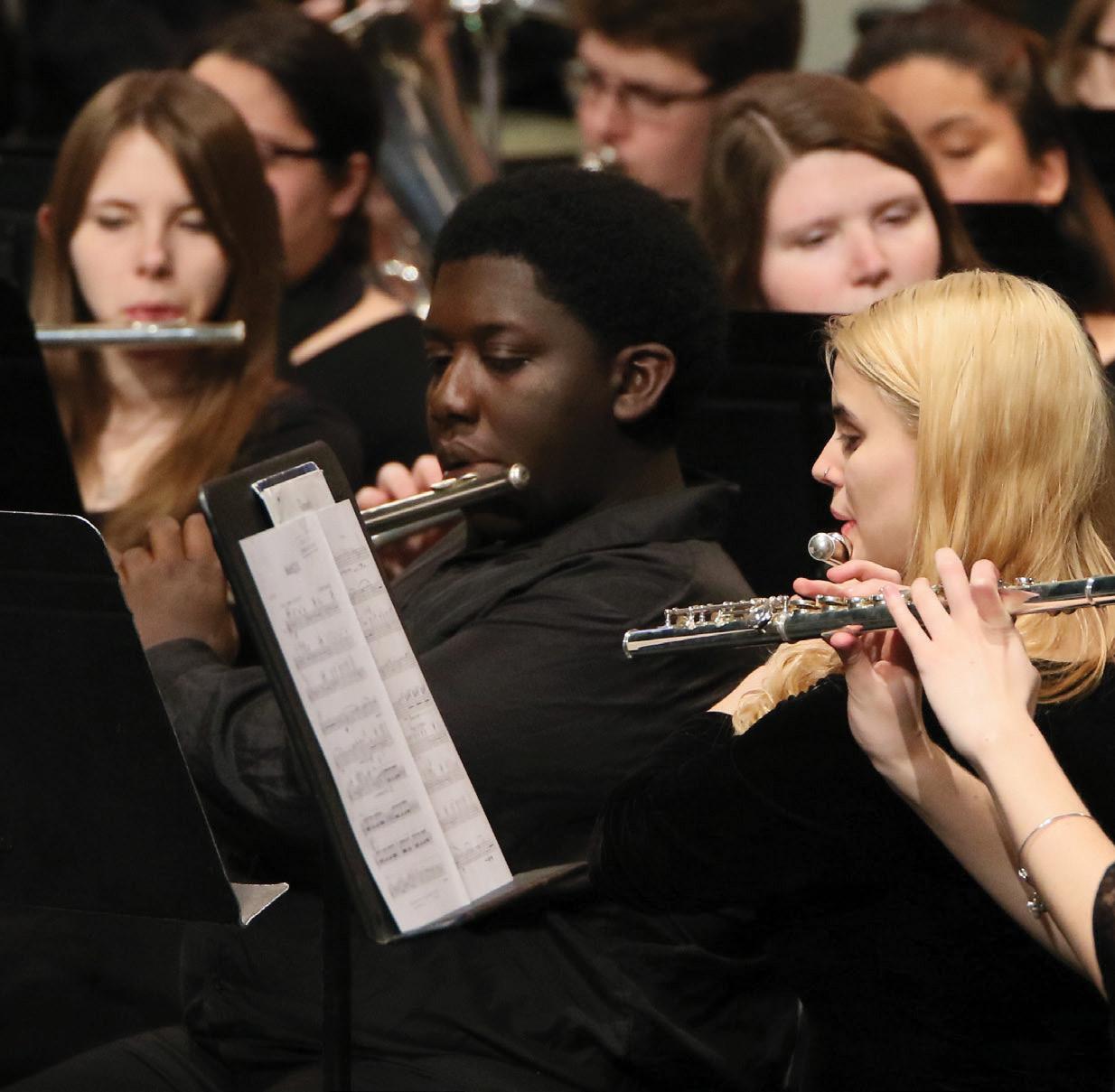
16-18 and will include a day of professional development clinics for band directors. New to this year’s WSU Honor Band Festival will be an Honor Jazz Band. This is the creation of new jazz director Stephen Wadsack,, trombone professor Gretchen McNamara, and percus sion instructor Jerry Noble. This year’s guest conductor will be WSU alumnus Matt Frost. Students will have the opportunity to work under both Frost and Wadsack during the weekend. Directors can nominate students for the honor jazz band on the same form as the concert bands.
In other faculty news, WSU oboe instructor Kathy Degruchy performed at the International Double Reed Festival in Colorado this summer. Degruchy premiered a newly commissioned work by composer Alyssa Mor ris for English horn, bassoon, and piano. WSU clarinet professor John Kurokawa performed at the International Clarinet Association’s ClarinetFest2022 in Reno Nevada this summer with his quartet the Prestige Clarinet Quar tet. And WSU trombone professor Gretchen McNamara presented clinics and performed at the International Trombone Festival in Arkansas. McNamara took a sab batical last fall to do extensive study to develop her clin ics on relaxation, breathing, and body awareness for pain and stress
free playing.
Sing with the Toledo Opera, perform in a jazz club, attend a Toledo Symphony performance, and intern in a professional recording studio. Located in a culturally rich Toledo region, UToledo provides opportunities for music students to hone their skills.
Professional training in a moderate-sized department where teachers know you by name.
Highly competitive scholarships are available for talented students. Apply for an audition online at utoledo.edu/al/svpa/music/degrees/audition.html
419.530.2448 n utoledo.edu/al/svpa/music/ OCTOBER/NOVEMBER 2022 73
OMEA
The 2023 Professional Development “Capital City” Conference Columbus, Ohio, February 2-4, 2023

Make your plans now to join us at the beautiful Greater Columbus Convention Center and Downtown Columbus Hyatt. Need help convincing your administrator to provide release time? Check out the updated “Letter to Administrators” which presents the conference through the lens of the “standards for the teaching profession” (www.omeapdc.com). The PDC site also includes information on contact hours and graduate credit opportunities.
Columbus offers several unique opportunities for your conference experience. The Hyatt, (conference headquarters), and Hilton Hotels are connected to the Convention Center and the Drury Inn is accessible through the CC food court. The Hyatt will host the All-State Children’s Choir, All-State Choir, All-State Jazz, research forum, and a variety of sessions and perfor mances. The Hyatt Big Bar on 2 will host the ever-popular late-night jazz events. The JECO Blizzard Jam Session of ‘22 was so successful that we are bringing back on Friday night in the Big Bar on 2, (hopefully without the blizzard this time!).
The Greater Columbus Convention Center will house the expanded “General Music World”. General Music attendees should also make plans to participate in the “Jump Start” sessions on Thursday morning starting at 9:30 AM (included with conference registration).
We are pleased to offer nearly 300 sessions presented by both national and homegrown clinicians. David Eccles, Anthony Maiello, Brenda Brenner, Stephen Meyer, Darcy Vogt Williams, Angela Ammerman, Phillip Hash, and Chet-Yeng Loong are just a few of the outstanding clinicians joining us in 2023.
We are also excited to host over 30 outstanding ensembles of all shapes and sizes - from percussion ensemble to full orchestra. TI:ME technology sessions, All-State concerts and a variety of networking/social opportunities guarantee another “must attend” event for Ohio music educators.
The exhibit hall in the Greater Columbus Convention Center will offer the latest and greatest tools and merchandise from our partners in the music industry. The highly popular 30-minute transition time has allowed for improved networking and plenty of time to visit with the vendors.
Still undecided? Take a tour of the PDC website (www.omeapdc.com) to read clinician spotlights; performing ensemble info; links to preregistration; Instructional-Hour Certificate Program (IHCP); Ashland graduate credit; housing reservations; and more! Housing reservations and conference registration are available NOW.
2023 PDC Team
Mark Hensler, Director of Professional Development pd_director@omea-ohio.org
74 TRIAD
2023
PROFESSIONAL DEVELOPMENT COMMITTEE
Mark A. Hensler, Director of Professional Development & Conference Management
ALL-STATE CHAIR
Rob Cebriak
CONTENT CHAIRS
Susan Bass Band
Eric West Choral
BethAnn Hepburn Julia Kandel General Music
Jill Wilhelm Jazz Jason Falkofsky Musical Theatre James Ledbetter Orchestra
Katrina Vissman Percussion Auditions
Brian McDonough Ensemble Auditions
PROPERTIES CO-CHAIRS

James DeFrancesco Alex Brough
STANDING CHAIRS
Stephanie Smith Adjudicated Events
Elizabeth Menard
Higher Education
Wendi Davis OCMEA
Eugenia Costa-Giomi Nathan Kruse Paul Louth Research
Rachael Fleischaker Teacher Evaluation
Veronica McMurray Special Learners
LOGISTICS
Dale Nawrocki
Registration
Kaye Nickoloff
Clinician/Presider Check-In
ALLIED ORGANIZATIONS
Zachary Compston
JECO
Jarrod Hartzler
OAAE
Doug O’Neal OCDA
Patrick Barrett OSTA
Lesley Schultz TI:ME
OCTOBER/NOVEMBER 2022 75
RATES:
be made by choosing
reservations require a credit card.
card must be valid through the
of the following
checks will be accepted.
of March 2023.
not mail after submitting online.
a completed form

W. Nationwide Blvd., Ste.125
Ohio
copy per room)
NOT INCLUDE CREDIT CARD
Columbus
contact
emailing
for
card
telephone reservations will be accepted by the Housing Bureau.
Photocopy this form if more than one room is required.
Only one room may be requested under each name.
Rooms are assigned on a first-come, first-serve basis.
Allow up to two weeks for an acknowledgement.
After January 9, 2023, rooms and rates are based on availability.
reservation to: (Only one
be
will require a credit card guarantee only (no deposit). Res ervations must be cancelled three days (4 p.m.) prior to arrival, or a fee equal to one night’s room and tax will be charged. An early departure fee may apply if you depart sooner than scheduled. Requests received without complete credit card information will not be processed. Credit card must be valid through the end of March 2023.
Jay Wardeska,
2023 OMEA PROFESSIONAL DEVELOPMENT CONFERENCE SECTION Reservations can
ONE
options: • All
No
• Credit
end
1. INTERNET: www.omea-ohio.org Do
2. MAIL: Send
(one
to: OMEA c/o Experience Columbus Attn: Renee Scott 277
Columbus,
43215 3. EMAIL: Housing@ExperienceColumbus.com - If
form, DO
INFORMATION. Experience
will
you
credit
info. • No
•
•
•
•
•
Confirm
acknowledgement will
sent) Name: Address: City: State: Zip: Phone: Email: Reservations
American Express Master Card Visa Discover Diner’s Club Card #: Expiration Date: / Name: Signature: *Rates quoted above are subject to 17.5% tax (Subject to change). 1. 2. 3. Arrival Date: Departure Date: (List names of all occupants’ arrival and departure dates if different.) Single - 1 Guest Double - 1 Bed/2 Guests Double/Double - 2 Beds/2 Guests Triple - 2 Beds/3 Guests Quad - 4 Beds/4 Guests Wheelchair Accessible *Room type preferences and special requests cannot be guaranteed. • Continue to use the OMEA Housing Bureau for all changes or cancellations through January 23, 5 pm EST via internet, or email to Housing@ExperienceColumbus.com. • After January 23, contact your hotel for all requests. • Please do not contact the hotel directly until after January 23.
Executive Director Ohio Music Education Association 4535 Tatiana Trl, Medina, OH 44256 Email: executive_director@omea-ohio.org Phone: 330.321.3738 2023 PROFESSIONAL DEVELOPMENT HOUSING FORM COLUMBUS, OHIO - FEBRUARY 2-4, 2023 RESERVATIONS CAN BE MADE BY CHOOSING ONE OF THE FOLLOWING OPTIONS: DEADLINE FOR SPECIAL RATES IS JANUARY 9, 2023 RESERVATION DEPOSIT: HOTEL
HOTEL PREFERENCE: Hotel Single Double Triple Quad Hyatt $193.00 $193.00 $203.00 $213.00 Hilton $199.00 $199.00 $209.00 $219.00 Hampton $176.00 $176.00 $186.00 $196.00 Drury Standard QQ or Standard King $179.00 Standard QQ or Standard King $179.00 Suite QQ or Suite King $199.00 Suite QQ or Suite King $199.00 ROOM TYPE PREFERENCE*: CHANGES/CANCELLATIONS 76 TRIAD
2023 PROFESSIONAL DEVELOPMENT CONFERENCE PRE-REGISTRATION COLUMBUS, OHIO - FEBRUARY 2-4, 2023
TO PRE-REGISTER:
1. Enclose Personal Check/Money Order or School Check payable to OMEA. No purchase orders accepted.
2. Send to: OMEA Conference Pre-Registration, P.O. Box 1357, Medina, OH 44258
3. Dates to Remember:
• January 13, 2023 - Mail-in postmarked deadline
• Refunds after January 13, 2023 - $20 processing fee.
• January 20, 2023 - Online registration deadline.
• January 27, 2023 - No refunds after this date.
PLEASE PRINT CLEARLY - NAME WILL APPEAR ON BADGE ALL INFORMATION BELOW IS REQUIRED - BADGES WILL BE MAILED USING THIS ADDRESS.
Member Number:
Expiration Date:
First Name: Last Name:
School District:
Home Address:
OMEA District:

Years of Experience:
City: State: Zip:
Home Phone: School Phone:
Personal Email Address:
Check all that apply.
Elementary Middle School/Junior High High School College Band Choral General Music Jazz Orchestra
OMEA MEMBER:
RETIRED MEMBER:
NON-MEMBER:
SATURDAY ONLY:
NON-TEACHING
FAMILY MEMBER:
Pre-Registration - $175
*Pre-Registration with IHCP - $185 (On-Site Registration - $195) (*On-Site Registration with IHCP - $205)
Pre-Registration - $60
Retired Member Guest: (On-Site Registration - $75) Number Attending Retired Music Educator Breakfast Friday
Pre-Registration - $250
*Pre-Registration with IHCP - $260 (On-Site Registration - $260) (*On-Site Registration with IHCP - $270)
Pre-Registration - $60 (On-Site Registration - $70)
Jay Wardeska, Executive Director Ohio Music Education Association 4535 Tatiana Trl, Medina, OH 44256 Email: executive_director@omea-ohio.org Phone: 330.321.3738
Pre-Registration - $45
Family Member Name: (On-Site Registration - $55)
*IHCP - The optional Instructional Hour Certificate Program (IHCP) requirements include six sessions, one concert and a written reflection. Registrants should update their IPDP to include OMEA IHCP participation and submit the plan along with documentation (see OMEA PDC website) to their LPDC for approval PRIOR to attending the PDC. Participants will receive a 10-hour instructional certificate that may be converted into 1 CEU (this is not for college credit.) OMEA does not issue certificates of attendance.
2023 OMEA PROFESSIONAL DEVELOPMENT CONFERENCE SECTION OCTOBER/NOVEMBER 2022 77
CONFERENCE
2023 OMEA PROFESSIONAL DEVELOPMENT PERFORMING ENSEMBLES
Bexley High School Vocal Ensemble - Amy Johnston Blosser
Boardman High School Jazz Ensemble 1 - Thomas Ruggieri
Bowling Green State University
Early Music Ensemble - Caroline Chin
Bowling Green State University Men’s Chorus - Richard Schnipke
Bowling Green State University’s Volaré - Emily Brown
Brass Band of Columbus - Brian Stevens
Capital University Chapel Choir - Lynda Hasseler
Case Western Reserve University Symphonic Winds - Ryan Scherber
Cincinnati Brass Band - Ben Chamberlain
Cleveland State University Chorale - Brian Bailey
Dayton Jazz Ensemble - Willie Morris
Dayton Philharmonic Youth Orchestra - Patrick Reynolds
Jackson High School Seven-thirty Big Band - Sean Monigold Kent State University Percussion Ensemble - Matthew Holm
Kings High School Symphonic Band - Brian McDonough Lakeview Middle School 8th Grade Band - Tyler Husosky
Lakota West Symphonic Winds - Andrew Carr Licking Heights Middle School Wind Ensemble - Doug Perry Mentor High School Concert Mixed Choir - Adam Landry
Miami University Men’s Glee Club - Jeremy Jones Miami University Symphony Orchestra - Ricardo Averbach Nagel Middle School 8th Grade Orchestra - Jessica Cox Northwest Middle School Select Choir - Conner Busby Perry High School Percussion Ensemble - Darin Good Perrysburg High School Select Strings - Michael Smith Perrysburg High School Women’s Chorus - Shelvin Burns Preble Shawnee Arrow Orff Ensemble - Cody McPherson Springboro Wind Symphony - Joshua Baker
The Cleveland Youth Wind Symphony Group I - Daniel Crain
The Ohio State University Symphonic Band - Scott Jones University of Dayton Chorale - Steven Hankle
Upper Arlington High School Vocal Ensemble - Brandon Moss
West Clermont High School Symphonic 1 - Brian Fischer Wright State University Percussion Ensemble - Gerald Noble
2023 OMEA PROFESSIONAL DEVELOPMENT
SECTION
78 TRIAD
ADVOCACY
Justin Caithaml
Laura Conrad
Cameron Dedrick
Paul Glader
Jarrod Hartzler
Martin Kral
Robert McClure
Lisa Michaels
Jeffrey Wensing
ADJUDICATED
EVENTS
Chris Carmean
Beth Hankins
Roberto Iriarte
JD Latorre
Heather Marsh-Myer Kathy McIntosh
Thai Sribanditmongkol
Jeanne Wohlgamuth
BAND
Ryan Alexis
Wendi Bechtol-Davis
Joshua Boyer
Richard Canter
Ted Clark
Ishbah Cox Scott Edgar Jeffrey Emge
Kimberlee Goodman
Lindsey Goodman Shelley Jagow
Lisa Jelle
Katherine Borst Jones
Catherine Lewis Anthony Maeillo
Gretchen McNamara Stephen Meyer Bryan Proksch
Robert Sheldon Alison Sincoff
Terry Staten
Erin Helgeson Torres
Josh VanGorder
James Vilseck
Darcy Vogt Williams Elizabeth Yoder
Gail Zugger
CHORAL
Christine Bass
Francis Cathlina Christopher Clark Jay Dougherty
PROFESSIONAL
CONFERENCE CLINICIANS BY AREA
Libby Hainrihar
Krista Hart
Christopher Kiver Jami Lercher
Brandon Moss
Bryan Nichols Jacob Reed Sarah Santilli Katie Silcott
Thai Sribanditmongkol
Paul Stewart Matthew Swope Kent Vandock Jeanne Wohlgamuth
CLASSROOM
MANAGEMENT
Angela Ammerman
Patrice Croglio
Denise D’Arca Jay Dougherty Courtney Gazda Mary Robinson Robert Sheldon Josh VanGorder
CONDUCTING
Christine Bass
Francis Cathlina Christopher Clark Anthony Maeillo
Jose Rocha Paul Stewart
C&A
Jeremy Davis
Rachael Fleischaker
BethAnn Hepburn
Laura Kitchel
Michelle Leasor
Alyssa Miller
Robert Pavalko
David Thompson
DEIA
Angela Ammerman
Rayna Brooks Joanie Calem Justin Caithaml Courtney Gazda Erin Hopkins Missy Strong
GENERAL MUSIC
Angela Ammerman
Scott Burstein
Marla Butke
Sue Casto
Michael Christiansen Patrice Croglio Allison Croskey Elizabeth Crumpler Miranda Culver Barbara Freedman David Frego Brent Geyer Dennis Giotta Kelsey Giotta Lisa Gruenhagen Bethann Hepburn Lauren Hodgson Chet-Yeng Loong Anna McClure
Robert McClure Evan McIntyre Cody McPherson David Mullins Christina Reardon Mary Robinson Christopher Russell Missy Strong Bryson Tarbet Martina Vasil Jayne Wenner
HIGHER ED/ TEACHER ED
Diane Ballard
Francis Cathlina David Hedgecoth William Jobert
Gretchen McNamara Marc Parulekar Natalie Steele Royston Mark Sholl
JAZZ
Rachel Azbell Joseph Carucci Mercedes Chomos Zach Compston Michael Kamuf Mark Russo
MUSICAL THEATRE
Adam Albright
Sharon Crawford
Jason Falkofsky
Jennifer Garver
Michael Komperda
Allison Paetz
Elaine Schweller-Snyder
Jessica Steuver
Jay White
Lara Wolford
MULTICULTURAL
Angela Ammerman
Chet-Yeng Loong David Mullins
Jayne Wenner
OCMEA Austin Ahlborn
Wendi Bechtol-Davis
Jay Clark
Christopher Kiver Bradley Leyrer Brandon Moss Alyssa Schott
Elizabeth Tracy Paul Young
ORCHESTRA
Adrienne Bedell
Stephen Benham Brenda Brenner Erin Broadhurst Michael Dolan David Eccles
BettyAnne Gottlieb Beth Hankins Kathleen Horvath Chad Hutchinson Roberto Iriarte
Jose Rocha
Mark Rudoff
Erin Helgeson Torres Richard S. Webb
OTES
Rachael Fleischaker
Thomas Rounds
Christine Russell Margo Trinter
Ann Usher
William Young
RESEARCH
Miranda Culver
Rachael Fleischaker
Lisa Gruenhagen
Phillip Hash Nathan Kruse
Paul Louth
Evan McIntyre Elizabeth Yoder
SPECIAL LEARNERS
Stephen Benham
Kristen Brown
Joanie Calem
Denise D’Arca
Jeremy Davis
Erin Hopkins Lalene DyShere Kay Emily Kelley Veronica McMurray
Josh Reynolds
Cory Svette Bryson Tarbet Kent Vandock Lauren Wargelin
TI:ME CLINICIANS (TECHNOLOGY)
Barbara Freedman
Dennis Giotta
Bob Habersat
Michael Kamuf Will Kuhn
Brian Laasko Elyse Laux
Michelle Leasor Jennifer LennoxChiudioni Mike Olander Tony Sauza Lesley Schultz Curtis Treadway Ryan VanBibber
*As of 10/10/2022
2023 OMEA
DEVELOPMENT
2023 OMEA PROFESSIONAL DEVELOPMENT CONFERENCE SECTION OCTOBER/NOVEMBER 2022 79
OHIO MUSIC EDUCATION ASSOCIATION RESEARCH COMMITTEE 2023 OMEA Professional Development Conference Graduate Research Roundtable Call For Proposals
Submission Deadline: November 15, 2022
The Graduate Research Roundtable session will be held at the 2023 OMEA Professional Development Conference on February 2, 2023, from 1:30 p.m. to 3:30 p.m. Six Ohio graduate music education students will be selected to present their in-progress dissertations, theses, or other research projects in a conversational setting to Ohio college and university music education faculty and students.
This roundtable session will give students the opportunity to (a) practice presenting their research multiple times (being able to present research is a valuable skill); (b) talk through their study with a small, friendly group of peo ple (talking about a study aloud sometimes helps to clarify the details); (c) receive feedback, both general and specific, from multiple persons; and (d) gain additional perspectives and ideas on how to proceed with various aspects of the study.
The format will be as follows: Presenters will be seated at a round table with their laptop computer (encouraged) and 30 abstracts of their study (limited to two pages). Several chairs will surround the table for Ohio music educa tion faculty members, other graduate students, and any additional individuals interested in participating. Students presenting their research will give an 8- to 10-minute overview of their study, preferably with a PowerPoint pre sentation on their own battery-driven laptop computer. This will be followed by a 10- to 15-minute discussion among the presenter and the group, facilitated by a faculty member. After the discussion, the group will move to the next table for another student’s presentation and discussion. This process of moving from table to table will continue throughout the 2-hour session.
To apply to present your research-in-progress, send submissions (Word document only) to Dr. Nathan Kruse at nathan.kruse@case.edu, OMEA Graduate Research Roundtable Coordinator, with “GRR Submission” in the sub ject field. Submissions should include (a) author name, (b) author e-mail address, (c) institution, (d) project title, and (e) an abstract of approximately 500 words that includes the need for the study, the purpose statement and research questions, the design/methodology, and the findings/implications (if known at the time of submission). Submissions will be blinded for review and should be received no later than midnight on November 15, 2022
All applicants will be notified whether or not they are among the six who will present their research at the round table no later than December 16, 2022.
If you have any questions about this process, please contact Dr. Nathan Kruse at nathan.kruse@case.edu or 216368-0675.
2023 OMEA PROFESSIONAL DEVELOPMENT CONFERENCE SECTION
80 TRIAD
OHIO MUSIC EDUCATION ASSOCIATION RESEARCH COMMITTEE 2023 OMEA Professional Development Poster Session
Call For Proposals Submission Deadline: November 15, 2022
The Research Committee of the Ohio Music Education Association invites submission of recent research for pre sentation during the Research Poster Session at the Ohio Music Education Association Professional Development Conference in Columbus, Ohio on February 3, 2023.
Reports of research in music education or other related music disciplines (e.g., theory, musicology, performance, pedagogy, therapy) are welcome. There will be three categories of research accepted for presentation: (1) com pleted master’s theses or doctoral dissertations (2) ongoing research, and (3) completed original studies.
1. Completed thesis and dissertations: submit the abstract, a copy of the document’s title page, and a copy of the signature page which indicates that the paper was accepted in partial fulfillment of degree requirements. The name of the degree-granting institution should appear on one of these pages or must be included with the submission along with author’s name, address, and e-mail. If all these items are included, the completed thesis or dissertation will be guaranteed acceptance for presentation. Please do not submit the entire thesis or dissertation.
2. Ongoing research: submit a 500-word proposal describing the need for the study, the purpose statement and research questions, the design / methodology, and expected or preliminary findings and implications for music education. The author’s name, address, e-mail, and current school affiliation should be included on a separate page/file from the proposal or abstract.
3. Completed original research: submit a 500-word summary describing the need for the study, the purpose state ment and research questions, the design / methodology, and the findings and implications for music education. The author’s name, address, e-mail, and current school affiliation should be included on a separate page/file from the proposal or abstract. Papers presented at conferences, other than previous OMEA state conferences, will be con sidered if this is clearly indicated in a statement included with the submission.
Authors will be apprised of the results of the selection process by e-mail. Submission deadline is November 15, 2022 and applicants will be informed of the decision by December 16.
Submissions of completed research should not have been previously published and should otherwise adhere to the NAfME Research Publication/Presentation Code of Ethics (https://tinyurl.com/ybkmodkh). E-mail the materials and/or any questions about this process to Dr. Paul Louth [omeapostersession2023@gmail.com], OMEA Research Poster Session Chair.
If accepted for poster presentation, the primary or listed co-researchers must register for and attend the confer ence.
2023 OMEA PROFESSIONAL DEVELOPMENT CONFERENCE SECTION
OCTOBER/NOVEMBER 2022 81
OHIO MUSIC EDUCATION ASSOCIATION RESEARCH COMMITTEE 2023 OMEA Professional Development Research to Practice Session Call For Proposals
Submission Deadline: November 15, 2022
The Research Committee of the Ohio Music Education Association invites proposals for a special “Research to Practice” session to be held at the Ohio Music Education Association Professional Development Conference in Columbus, Ohio, February 2-4, 2023.
The purpose of this 50-minute session is to help current practicing educators connect meaningfully with current research in music education. Proposals should indicate how the presenter(s) will draw on research—grounded in literature and robust methodology—to create a presentation that explains and emphasizes practical implications for the profession. We welcome proposals by researchers, adminis trators, practitioners, and teachers.
Proposals should be succinct (500 words max). They should clearly reference the underlying research literature and methodology, outline the practical implications to be explored, and include a description of the 50-minute session.
All prospective presenters’ names, addresses, e-mail, current school affiliations, AV and equipment needs should be included on a separate page/file from the proposal.
The chosen presenter(s) will be apprised of the results of the selection process by e-mail. A hard copy of acceptance letters will be provided upon request. Submission deadline is November 15, 2022 and applicants will be informed of the decision by December 16, 2022. Questions should be directed to Dr. Eugenia Costa-Giomi, OMEA Research Committee Chair: costa-giomi.1@osu.edu.
2023 OMEA PROFESSIONAL DEVELOPMENT CONFERENCE SECTION
82 TRIAD
EVEN TEACHERS NEED TEACHERS
As an educator, one of the most impactful ways to improve is by educating yourself. That’s why the Yamaha Educator Suite (YES) helps music teachers access professional development opportunities, music teacher resources, program health support, advocacy assistance and more. YES brings you a network of like-minded teachers, experts and professionals, who want to help you achieve your goals. Let us help you raise the bar. Go to Yamaha.io/educatorsTRI
